

What Is Trekking? Complete Guide For Beginners
Please share!
Walking itself sounds like a pretty simple and easy activity.
Still, with a little training and effort, you can scale it up to be really challenging! Whether it’s a hidden waterfall deep in a forest, a mountain summit, or some other path less taken, trekking is a pretty advanced sport you can easily fall in love with.
Imagine being out there in the wild environments on your own or with a group of other nature lovers. You’re far away from crowds, city rush, or even some popular paths many hikers tend to take.
Sounds intriguing? Let’s delve deeper into a complete beginner guide and find out the essential thing— what is trekking, and what do you need to know about it?
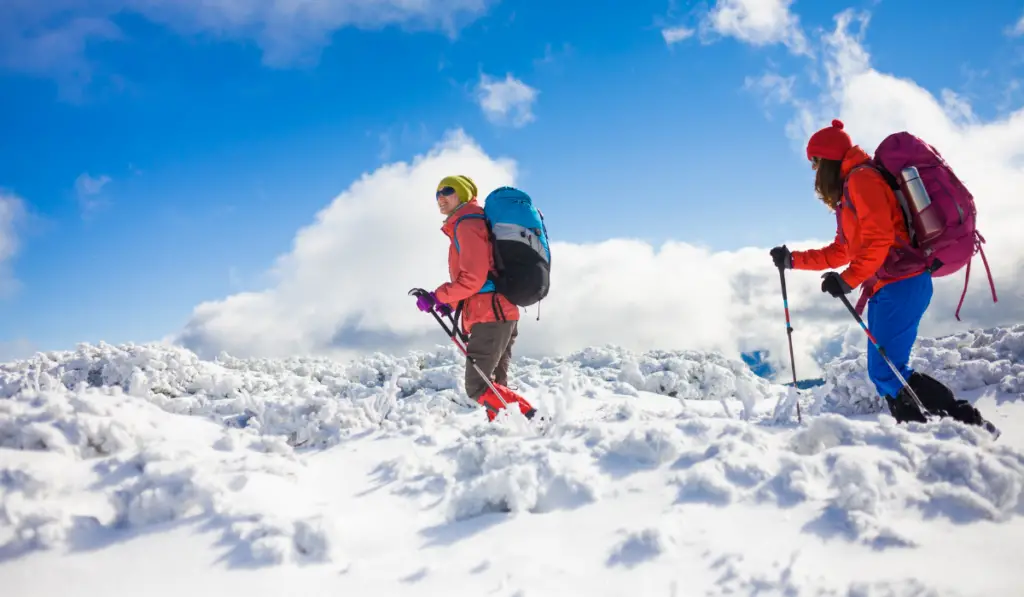
Table of Contents
What’s the Difference Between Trekking and Hiking?
First of all, let’s solve the trekking vs. hiking dilemma because many believe that they are basically the same thing.
Sure, they both include walking, the natural environment, and many other overlapping elements, but in reality, we’re talking about two different activities.
Hiking is a long, vigorous walk on footpaths or hiking trails that usually lasts for a couple of hours, one day, or perhaps overnight.
Trekking is a long yet energetic hike that lasts multiple days and is mostly in the wild natural environment. In other words, you can do it off hiking trails.
They’re both challenging in their ways. However, trekking takes a bit more time to prepare physically and while dealing with supplies.
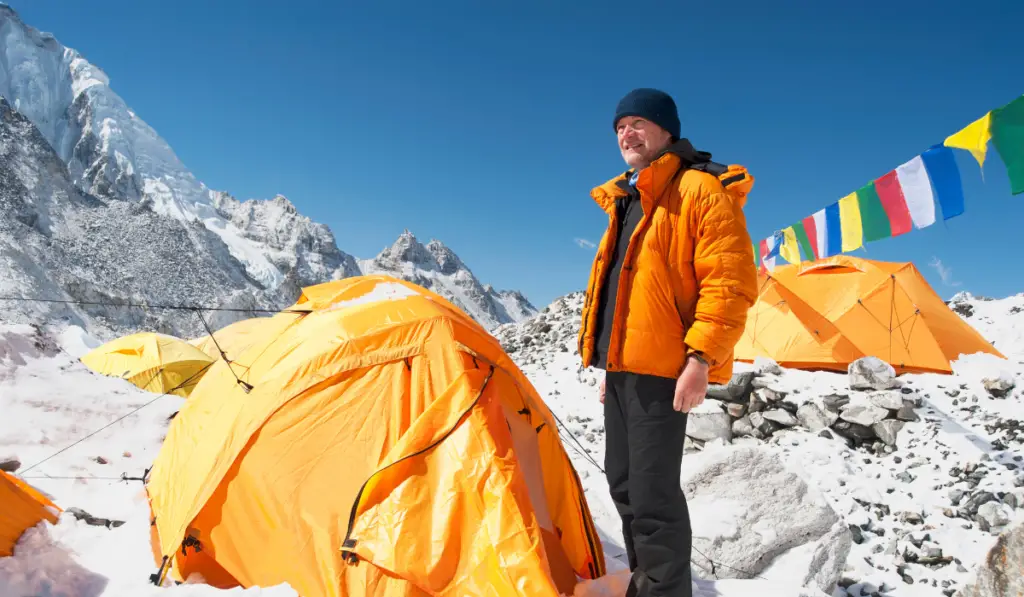
So, What Is Trekking?
Trekking is what we’d call long-distance hiking.
It’s walking for longer than a day, sometimes even for a couple of weeks. Throughout the entire journey, you’re partially or entirely self-sufficient.
Of course, everyone has their reasons why they would start such an adventure. One of the main goals is to get away from the city rush and simply enjoy the stunning scenery.
Initially, people practiced trekking primarily in the mountains and often in some hardly accessible spots. Today it’s a sport becoming increasingly popular, which is why the term extends to different types of itineraries and terrains suitable for all levels.
People start their trekking journey with different motives, but in the end, a solid commitment to the goal is the critical element, whichever level they’re on.
Besides that, this sport can be an excellent chance for a social gathering and meeting new friends with similar interests. Imagine hanging out with other nature lovers walking on trails in astonishing regions of relatively unspoiled wilderness.
Important Tips for Trekking
Trekking sure sounds fun and exciting, but there are still certain things you should consider before planning your adventure.
Choose Your Route Carefully
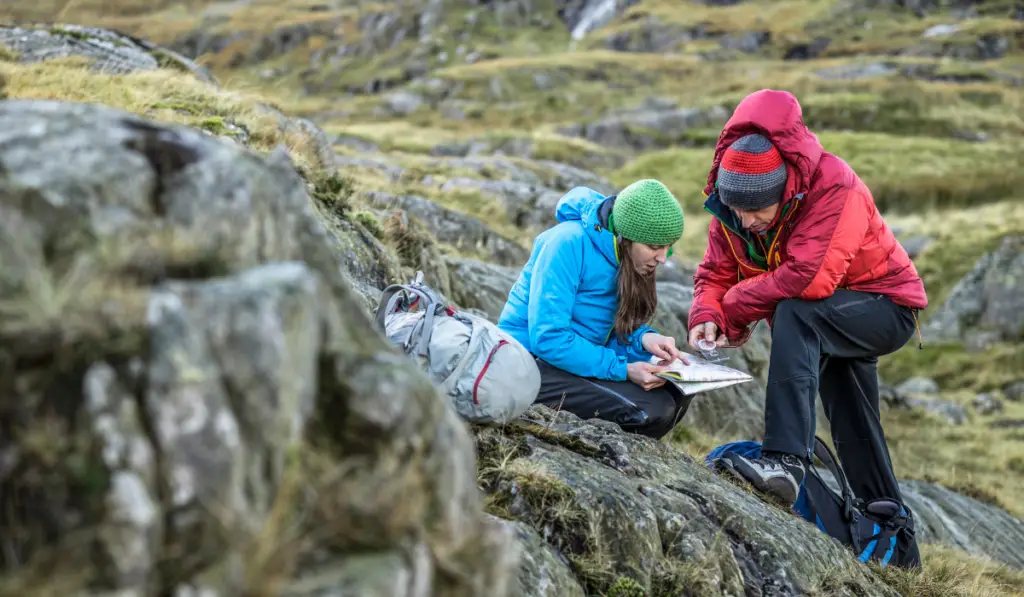
As in every sport, you need to be aware of your limits.
Don’t start off your first trek with a trail that looks the best and the most intriguing. Be realistic and go for ones that are not too difficult for you.
First, start with a simple trek and build your strength gradually. You want to get to the point where you’re not struggling or scampering your way up.
Trekking is supposed to be a fun activity you’ll enjoy, so gather information about the trail you want to take.
While choosing your route, check the terrain’s type and length and the elevation change.
Start building your resistance by taking long walks. Wear a day pack when you’re climbing steep descents or inclines.
Also, it would be great to go through your first trekking expeditions with a group that can help and guide you through the whole process and potential issues.
Buy Good Trekking Equipment
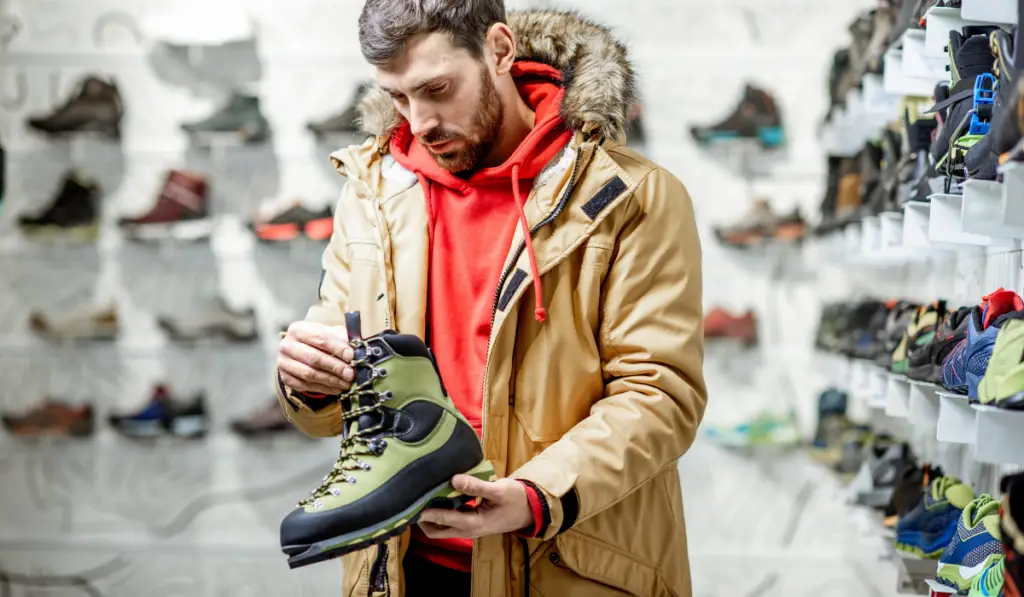
Trekking may be fun, but it’s not easy. Don’t make it even harder for yourself by buying low-quality equipment that can bring you additional troubles on your trip.
When it comes to trekking, good-quality footwear is a MUST.
The sport can get pretty demanding, so you don’t want to bother with blisters and pain in the ankles to save a couple of bucks. Invest in boots you’ll be able to use for a long time.
Trekking boots are specifically designed to endure different types of terrains. They’re also meant to keep you from slipping and hurting yourself.
The best would be to choose a pair that goes up to your ankles since they’ll support them the most.
It’s not just good footwear. A comfortable backpack is one of the essential parts of trekking equipment too. Pay attention to hip straps, proper back straps, and the support structure to keep your back safe and comfortable for long distances.
Pack Enough Water
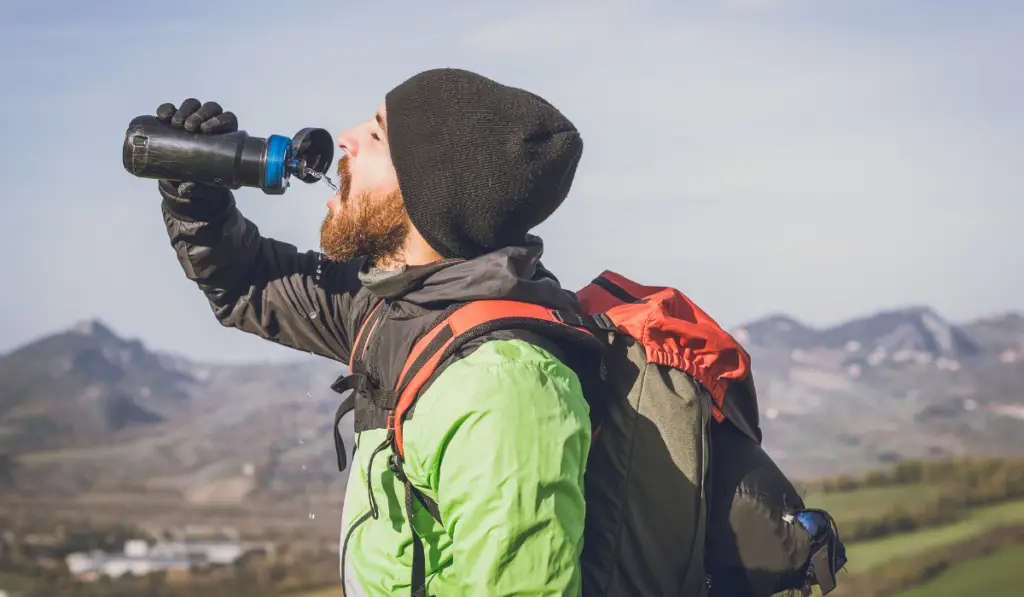
Food and water are essential parts of your trekking route, so don’t underestimate the amounts you’ll need on your journey.
Remember, it’s better to have some extra water rather than be dehydrated and thirsty, especially when you don’t have any water source within reach. Bring some light snacks, such as energy bars, which will help to keep you going!
Choose Your Own Pace
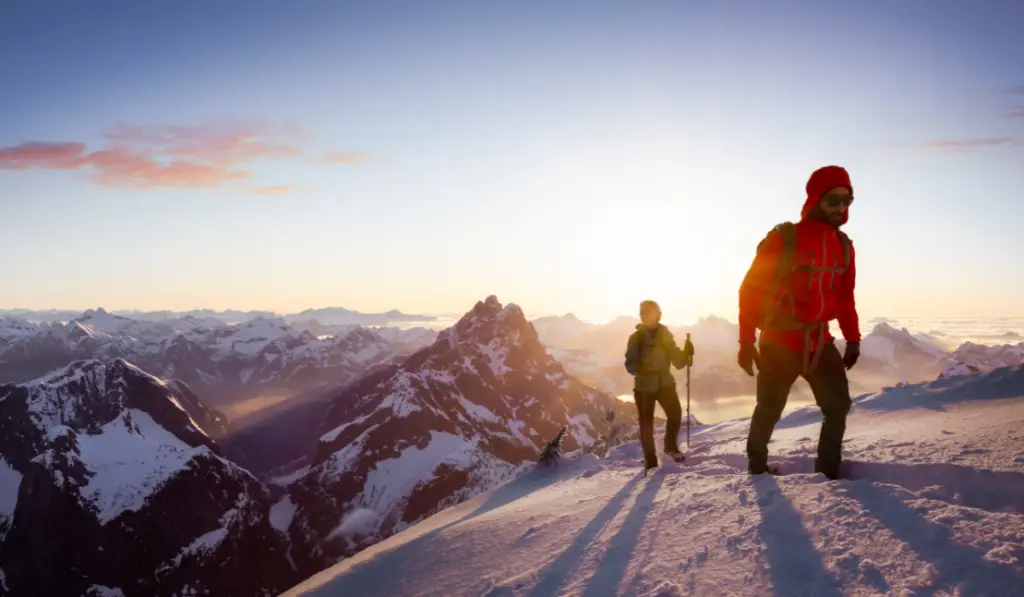
Don’t compare yourself to others. Some other trekkers may be active in this world way longer than you, so it’s logical they are better prepared and can endure longer than you.
Also, remember that not everyone focuses on the same things while trekking. Some prefer to take things slowly to enjoy the scenery, while others prefer to avoid stopping multiple times and cover longer distances.
Trekking is not a race, so listening to your body and going at your own pace is essential.
Take as many breaks as you need. The journey is supposed to be challenging, true, but it’s also supposed to be an exciting experience you genuinely enjoy.
Whichever pace you set, stretch out your muscles before taking longer routes – that’s something your body will definitely thank you for later!
Don’t Forget to Check the Weather
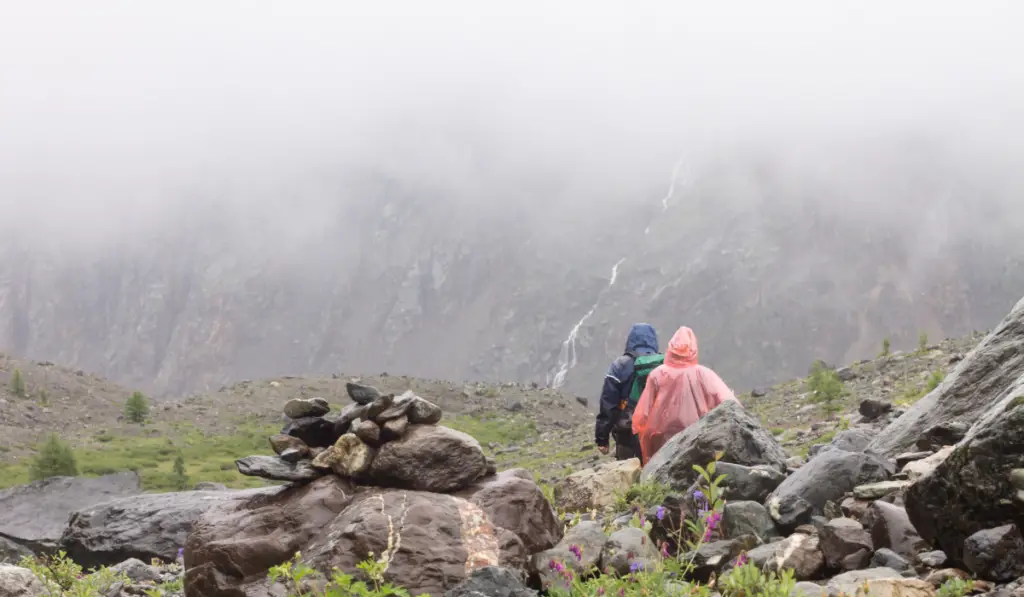
Imagine you finally scheduled a trekking route, and while you’re enjoying your third day of the journey, you notice a storm approaching.
Just a couple of minutes of researching the weather in a place you want to visit can save you trouble with landslides, rain, or even snowstorms.
This is especially important when you’re planning to cross over rivers or other bodies of water. Trekking is generally a pretty safe activity, but it can be dangerous if you get caught in harsh weather conditions.
If the storm catches you after all, be flexible with your plans and look for shelters that will keep you as safe and dry as possible.
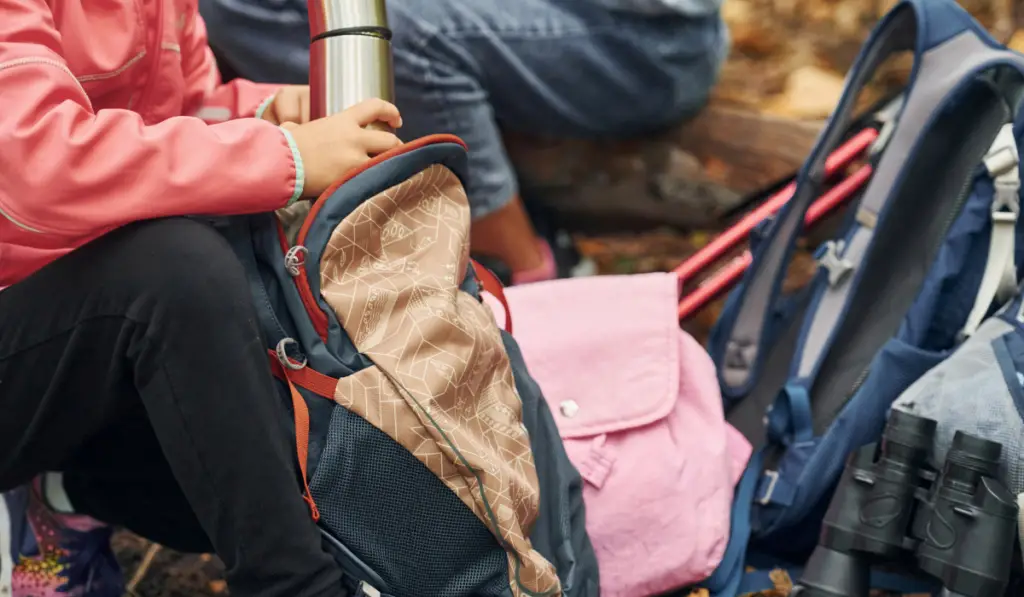
How to Pack for Trekking
The first thing you need to take care of when you’re going to trek is getting a good backpack. It’s the essential thing that will help you keep your supplies organized.
It’s also essential to get a high-quality item to evenly distribute the weight you are carrying so your back doesn’t suffer.
Now, let’s move to the packing itself.
One of the mistakes many newbie trekkers make is filling their backpacks with everything that comes to their mind, including neck pillows, speakers, snacks, and other things they “might need” during the trek.
It’s great to have these things with you, but the last thing you want on your trek is a heavy bag that constantly weighs you down.
Bring lightweight equipment and take food that doesn’t take up too much space. You can even find some lightweight foods made only for trekking.
If you opted for a multi-day trek, bring a cookery set and enough water and food to last throughout that period. One of the good sides of traveling with a group is that you can distribute the weight of the things you carry.
Experienced trekkers and hikers often say it’s better to pack the sleeping bag first. After that, you can top it with heavier items.
Place them closer to your back to evenly distribute the weight and transfer some of it to your hips. Things you’ll be accessing more often, such as a jacket and water, should be on top so you can have them within reach.

The Essentials for Trekking
The supplies you will take on your trek depend on the weather conditions, season, number of days you will stay, and the area you visit.
These are some things you can consider taking, but you’re the one who knows best what things you can’t go without.
Basic Stuff
- Documents (an identity card)
- Powerbank (for your phone or other gadgets)
- First aid kit
- A utility knife
- GPS/Navigational devices
- Light traveling towel
- A couple of plastic bags if your clothes get wet
- Toilet paper
- Personal toilet kit (including toothbrush, toothpaste, etc.)
- Personal medical kit (paracetamol/aspirin for fever, vomistop for travel sickness in hilly parts, pain killers, your regular medications, bandages, plasters, etc.)
- Sunscreen lotion
- Lip balm (SPF 30+)
- Mosquito repellant
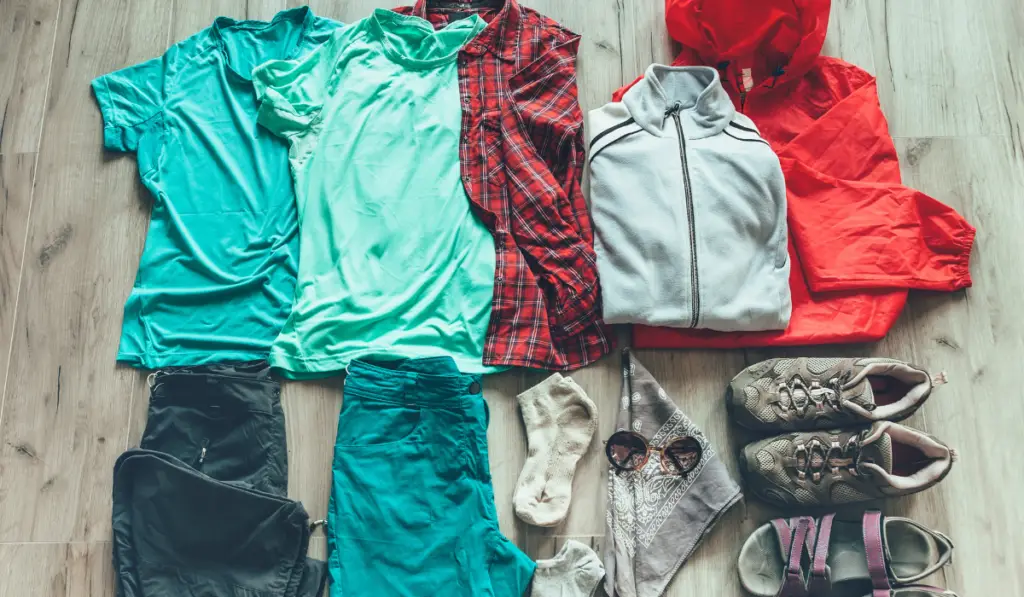
- Lightweight T-shirt
- 2 pairs of track pants and quick dry tees (better avoid denim)
- 2-3 pairs of regular socks and 2 pairs of warm socks
- Thermal wear
- Gloves (2 pairs, one waterproof and one woolen)
- Woolen cap that covers your ears
- Poncho, umbrella, or raincoat
If It’s a Multi-day Trek

- Cookery set
- Camping gear
Why Should You Try Trekking
Trekking culture is growing worldwide, especially in some non-touristy areas that are difficult to access.
Sometimes treks can be epic because of the breathtaking scenery. On the other hand, sometimes the thing you’ll remember the most about your journey is the superhuman levels of endurance and effort you’ll need to get to your destination.
Some trekkers are willing to go through whatever it takes because of the feeling they get when they reach the final destinations.
For others, it’s all about the trip and the camaraderie along the trail.
But all the treks have one simple thing in common—a sense of being on a special mission that makes this activity more than just a simple act of walking and turns it into a life-affirming journey.
Even though it doesn’t sound like this initially, trekking is more challenging than hiking. It’s a sport that tests your endurance, ability, and psychological and mental capacity.
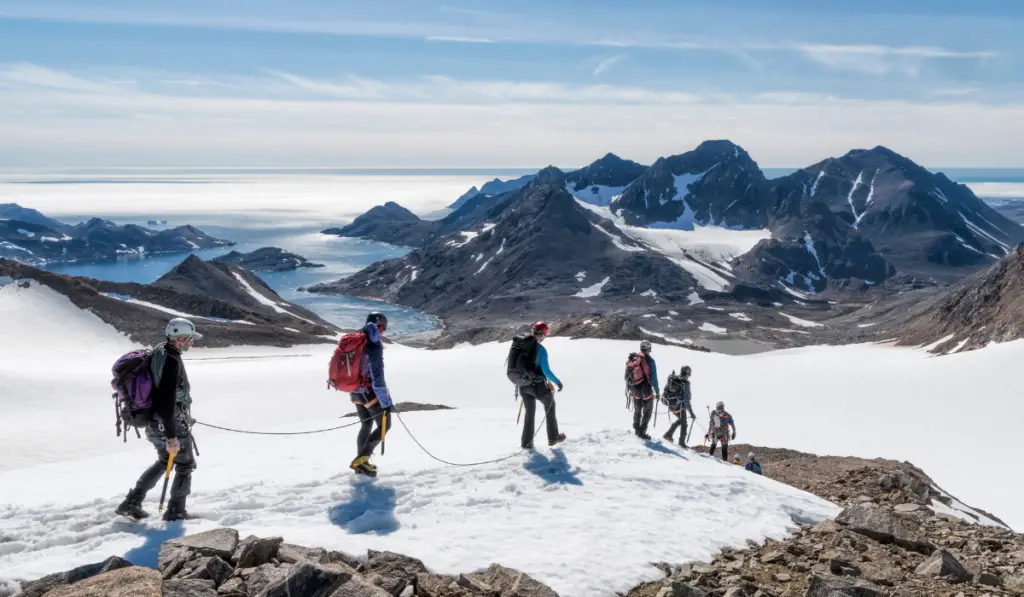
Where Can You Go Trekking?
It’s hard to tell which are the best treks in the world because everyone has different preferences and answers.
Some trails are epic because they require strenuous endurance and effort to reach the endpoint. Some, on the other hand, offer astonishing scenery.
For some, it’s all about the journey and those little joyful moments they experience along the trail. Others focus on the destination itself.
The great thing is that all the trekking fans can find something for themselves! What matters is transforming the everyday walking act into an exciting and life-affirming expedition.
Here are some of the fascinating destinations across the world where you can go trekking:
- Kalalau Trail, Hawaii (moderate)
Distance: 11 miles (18 km) in one way
Time: 2 days
- Routeburn Track, New Zealand (moderate )
Distance: 20 miles (32km)
Time: 3-4 days
- Everest Base Camp, Nepal (moderate)

Distance: 80 miles (130km), round trip
Time: 2 weeks
- Inca Trail, Peru (moderate)
Distance: 20 miles (33km) round trip
Time: 4-5 days
- Markha Valley Trek, Ladakh, India (moderate)
Distance: 50 miles (80km)
Time: up to 7 days
- Kilimanjaro, Tanzania (moderate)
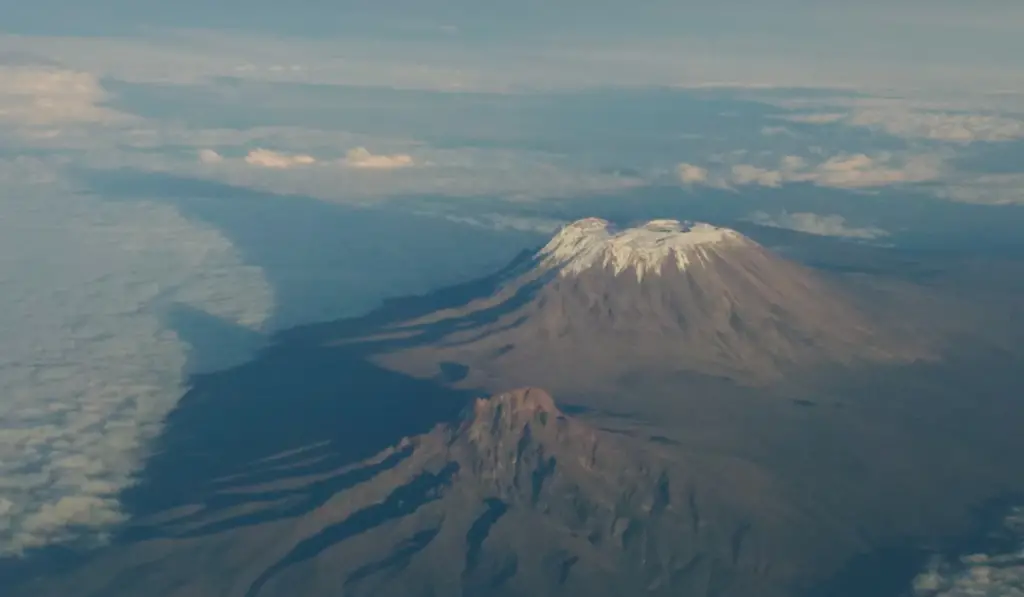
Distance: 23–56 miles (37-90km)
Time: up to 9 days
- Camino de Santiago de Compostela, Spain (shorten the route, moderate)
Distance: 62 miles (100km)
Time: 5-6 days
- Camino de Santiago de Compostela, Spain (full route, advanced)
Distance: 500 miles (800km)
Time: 35 days
- GR20, Corsica, France (advanced)
Distance:104 miles (168km) round trip
Time: 15 days
- The Haute Route, France-Switzerland (advanced)
Distance: 125 miles (200km)
- The Torres del Paine Circuit, Patagonia, Chile (advanced)
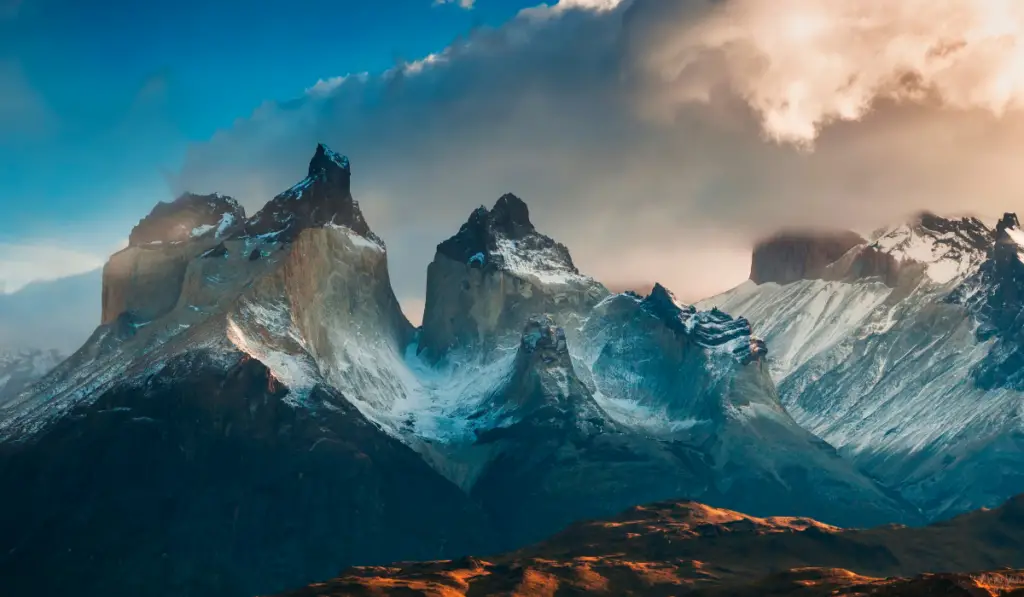
Distance: 85 miles (136km)
Time: 9 days
Don’t feel discouraged by this list if you’re not in a position to travel far away from the area where you live.
Every country offers its beauty and paths that are yet to be discovered, so don’t hesitate to do your research and let us know about the treks you’ve come upon!
Some Final Words
Trekking is an exciting activity that has grown in popularity over the past couple of years.
Many believe hiking and trekking are basically the same thing. However, the main difference is that hiking mostly takes place on marked routes and lasts for a couple of hours or up to a day.
Trekking lasts multiple days, and it’s mostly about exploring untouched nature and paths less taken.
The spirit of trekking is generally about enjoying the beautiful scenery, taking the time to stargaze, and discovering astonishing landscapes daily. Of course, everyone has their own goals and pace.
Get enough water and food, prepare your body, and don’t hesitate to spend more money on purchasing higher-quality equipment.
Trekking itself can be quite demanding, so you primarily want to avoid struggles that come with bad footwear or a backpack that doesn’t allow you to distribute the weight of your supplies equally.
Don’t forget to check the weather, explore the route you’re taking, and thoroughly list all the things you may need on this special journey. Be careful with the latter, you don’t want to overstuff your backpack and struggle with things you only thought you needed.
It’s a fun sport and an opportunity for you to test your endurance and mental and psychological capacity.
That’s it for now! Now it’s time to go out, explore the wilderness, and fall in love with this amazing long-distance walking activity. See you somewhere out there!
- https://foxtrail.fjallraven.com/articles/trekking-tips-for-beginners-2
- https://www.adventureinyou.com/travel-tips/beginners-guide-to-trekking/
- https://www.euttaranchal.com/tourism/trekking-things-to-carry.php
- https://adventures.com/blog/hiking-vs-trekking/
- https://www.muchbetteradventures.com/magazine/hiking-vs-trekking-whats-the-difference/
- https://stingynomads.com/camino-de-santiago-last-100-km/
- https://www.rei.com/blog/travel/how-to-hike-the-camino-de-santiago
- https://www.lonelyplanet.com/articles/best-treks-in-the-world
- https://www.walksworldwide.com/blog/beginners-guide-to-trekking


Travel Guides & Tips
What is trekking.
Trekking often takes place in remote, high-altitude locations and may involve navigating more difficult terrains, including steep ascents, descents, rocky paths, and sometimes even glaciers or snowfields.

In our fast-paced modern world, the lure of nature, adventure, and tranquility calls to many of us, inviting us to break away from the confines of concrete jungles and venture into the wilderness. This is where trekking comes into the picture, an activity that beautifully combines outdoor adventure with personal growth. But what exactly is trekking, and how did it originate?
Trekking is a long-distance, often multi-day outdoor activity where one hike through rural, often rugged terrain. The term was coined in the 19th century during the Great Trigonometrical Survey of India where workers had to traverse through challenging terrains on foot to chart out the subcontinent. From its pragmatic roots, trekking has evolved into a much-loved recreational activity around the world.
The relevance of trekking today cannot be understated. It is not just about traversing from one point to another; it's about embarking on a journey to explore the beauty of nature, challenge oneself, and reap physical, mental, and emotional rewards. Whether you are a seasoned trekker or someone planning to embark on your first trek, understanding the nuances of this activity can enhance your experience significantly.
In this blog, we will delve deep into the world of trekking. We will explore its different forms, the benefits it offers, and the essential gear one needs to have. We will also provide tips on how to prepare for a trek, discuss some popular trekking destinations, and highlight the importance of being a responsible trekker. By the end of this piece, you'll not only understand what trekking is, but you'll also be armed with the knowledge to embark on your own trekking adventure. Let's take the first step into this fascinating journey together.
Understanding Trekking
Before we delve further into the world of trekking, it's important to first establish a clear understanding of what it involves, how it compares and contrasts with similar outdoor activities, and the different forms it can take.
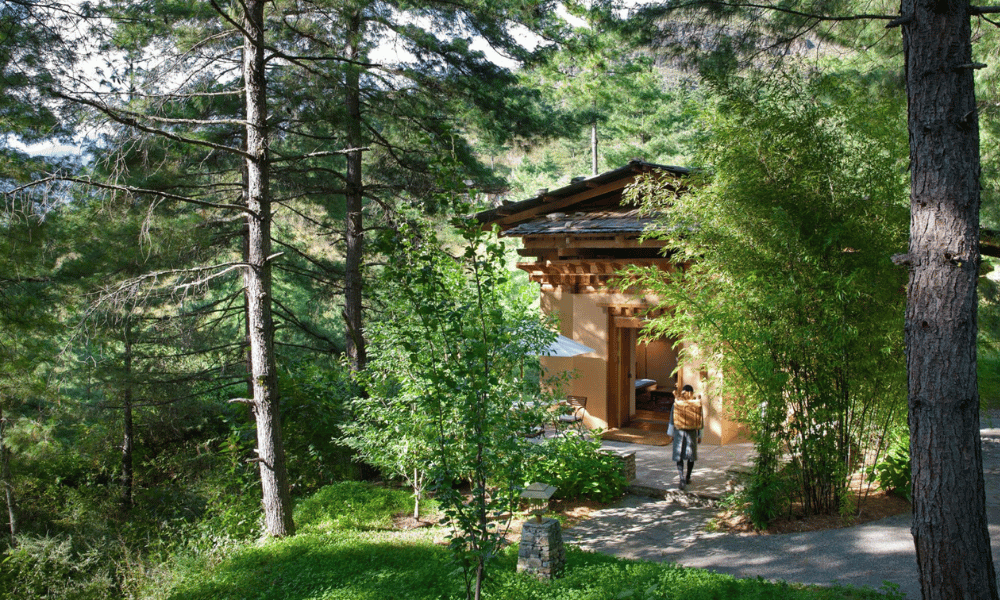
Trekking is an extended, often multi-day activity that involves walking and hiking, usually on trails or paths in areas of natural beauty. Unlike a simple walk or day hike, a trek typically takes place in a setting where transportation infrastructure is less developed, and participants carry their own food, water, and camping equipment.
While it's often used interchangeably with hiking, trekking is usually longer and more challenging. Hiking is generally understood as an outdoor activity that involves walking in natural environments, typically on pre-made trails. Hikes can last from an hour to a whole day, but rarely extend beyond that.
Backpacking is another term you may have heard in conjunction with trekking. It's essentially a combination of hiking and camping, often over the course of several days or even weeks. Backpackers carry their essential gear - including food, water, and shelter - in their backpacks, hence the name.
Mountaineering , on the other hand, is a more specialized and technical form of trekking that involves ascending mountains. It often requires specific equipment and knowledge of climbing techniques, and it entails a higher level of risk compared to hiking or trekking.
There are also different types of trekking, each offering a unique experience:
1. Day Treks: These are single-day treks that usually start and end at the same point. They are suitable for beginners and those who want to experience trekking without committing to multi-day journeys.
2. Multi-day Treks: These involve trekking for more than one day and camping overnight. They offer a deeper immersion in nature and can range from easy to very challenging, depending on the terrain and distance.
3. Teahouse Trekking: Popular in countries like Nepal, teahouse trekking involves trekking from one mountain lodge or 'teahouse' to another. These treks can last several days, but trekkers don't have to carry camping gear as they'll be staying in basic lodgings along the way.
4. Expedition Trekking: This is the most challenging form of trekking, often involving ascents to high altitudes, and lasting for several weeks or even months. Expedition trekking usually requires a team, including guides and porters, and involves thorough preparation and considerable physical fitness.
By understanding these different forms and related concepts, you can choose the type of trekking experience that best suits your interest, experience level, and physical fitness.
Table Of Content
Trekking vs hiking.
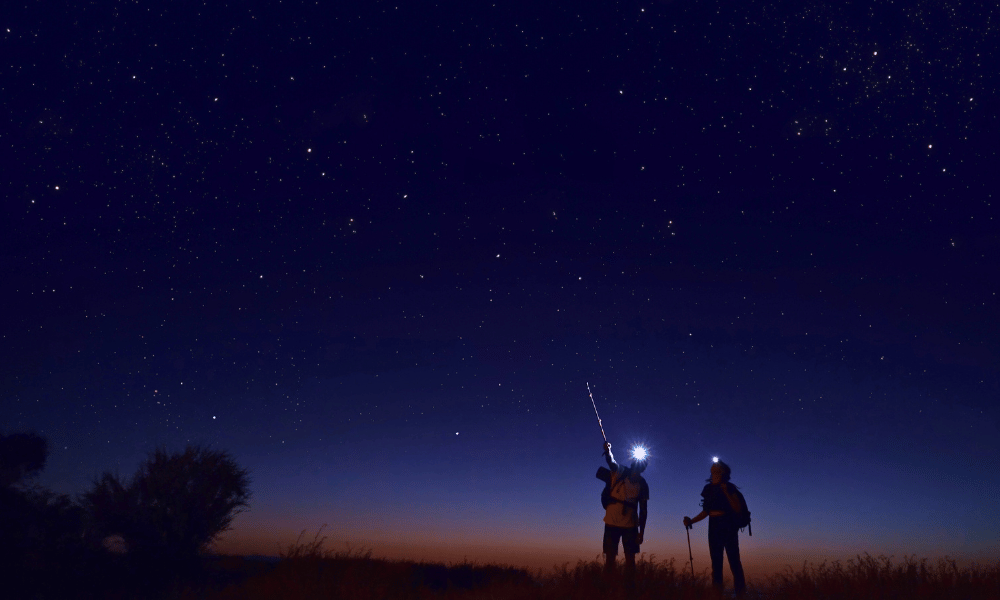
Trekking and hiking are both outdoor activities involving walking in nature, but there are key differences between the two, primarily in terms of duration, difficulty, and terrain.
Duration: Hiking typically refers to day trips that can last a few hours to a full day. Hikers generally return to their starting point or accommodation by the end of the day.
Difficulty: While the difficulty can vary greatly depending on the trail, hiking is generally considered less strenuous than trekking. Hikes usually follow well-defined trails and do not require significant navigational skills.
Terrain: Hiking trails can range from flat and easy paths in the woods to steep mountainous trails. However, these trails are usually well-marked and maintained.
Equipment: Basic hiking gear typically includes comfortable walking shoes, a backpack, water, snacks, and possibly a map or a hiking app. Camping gear is not usually necessary for hikes as they typically do not involve overnight stays in the wilderness.
Duration: Trekking involves multi-day trips that can last several days to weeks. Trekkers often camp or stay in huts or tea houses along the trail.
Difficulty: Trekking is generally more strenuous and physically demanding than hiking. It often involves long distances, significant changes in elevation, and more challenging terrains.
Terrain: Trekking often takes place in remote, high-altitude locations and may involve navigating more difficult terrains, including steep ascents, descents, rocky paths, and sometimes even glaciers or snowfields.
Equipment: In addition to what you would bring for a hike, trekking often requires more specialized gear, such as tents, sleeping bags, cooking equipment, and potentially even mountaineering gear for high-altitude treks.
While both hiking and trekking allow you to enjoy nature and stay active, the choice between the two often depends on your physical fitness, the amount of time you have, and the level of adventure you're seeking. If you're new to these activities, it's typically recommended to start with shorter, easier hikes and gradually work your way up to more challenging treks.
The History of Trekking
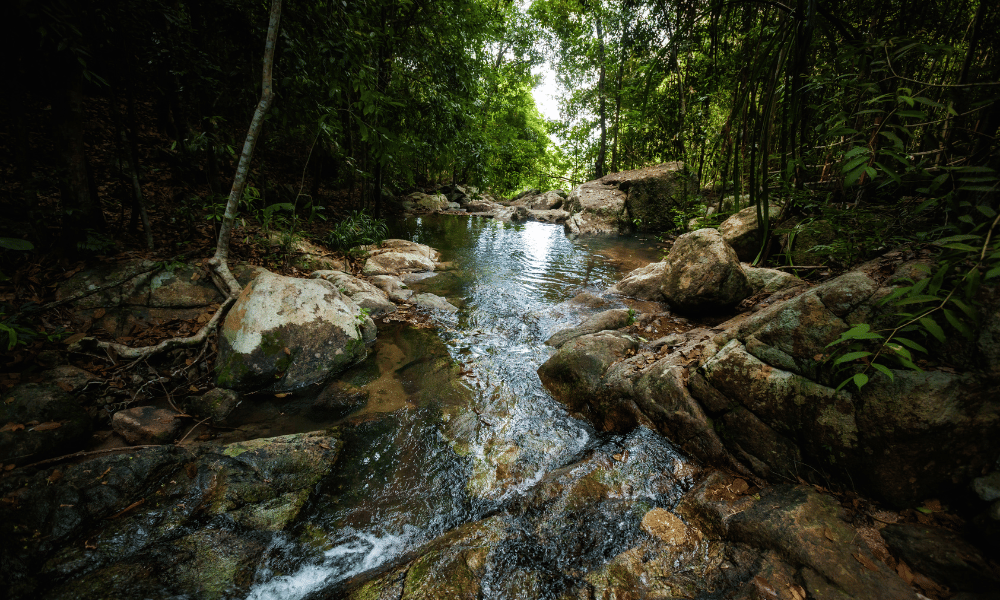
Trekking, as we know it today, has a rich and varied history. While walking long distances has always been a necessity for humans in prehistoric times due to a lack of transportation, the concept of trekking for leisure or adventure developed more recently.
The origin of modern trekking can be traced back to the 19th century during the Great Trigonometrical Survey of India, a project aiming to measure the entire Indian subcontinent. British surveyors had to 'trek' through challenging terrains on foot, often for weeks or even months at a time, to record the geographical features of the land. Thus, trekking started more as a professional necessity than a recreational activity.
As the romance of exploration grew, coupled with the advancements in transportation and leisure time in the 20th century, trekking transformed into a popular recreational activity. It was further popularized by several notable expeditions, such as Sir Edmund Hillary and Tenzing Norgay's successful ascent of Mount Everest in 1953. This ushered in an era where the allure of exploring remote locations, encountering different cultures, and achieving personal milestones became a significant motivation for many.
Over time, trekking has evolved and branched out into various forms we see today, such as day treks, multi-day treks, teahouse trekking, and expedition trekking. The development of specialized equipment, trail infrastructure , and the growth of outdoor recreational companies also significantly contributed to making trekking more accessible and enjoyable for people of varying fitness and experience levels.
The impact of trekking on global exploration and outdoor recreational activities is profound. It has not only enabled us to reach and appreciate some of the most remote and beautiful parts of our planet, but it has also played a key role in promoting physical fitness, mental health, and environmental awareness. Today, trekking is a significant part of the global tourism industry , contributing to local economies, especially in regions known for their natural beauty.
As we look back at the trekking history, it's clear that it's much more than just an outdoor activity. It's a testament to human curiosity, exploration, and our deep-rooted connection with nature. And as we move forward, it continues to adapt, offering even more ways for us to engage with the natural world.
Why People Trek
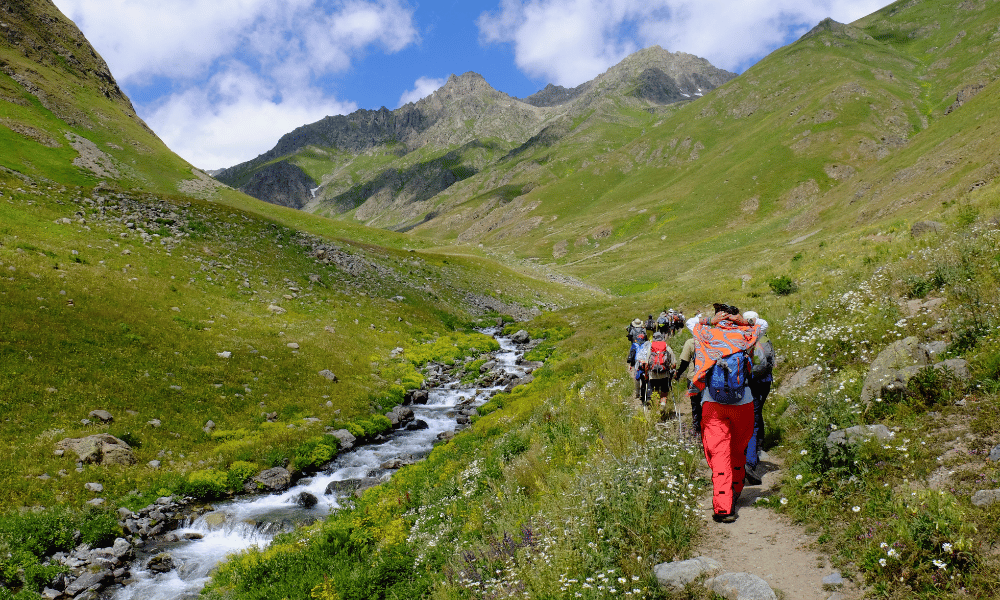
The allure of trekking varies greatly from person to person, and the motivations behind embarking on these ventures can be just as diverse as the trekkers themselves. Here, we explore the common reasons why people choose to trek and gain insights from experienced trekkers on what fuels their passion for this activity.
1. Adventure: Many are drawn to trekking for the sheer thrill and excitement that it provides. The prospect of navigating rugged terrains, overcoming physical challenges, and immersing oneself in the wilderness is an adrenaline boost for adventure seekers.
2. Fitness: Trekking is a fantastic way to improve physical fitness. It offers a full-body workout that combines cardio and strength training, making it an enjoyable way to stay active and healthy.
3. Nature Appreciation: Trekking offers a unique opportunity to connect deeply with nature. It provides an escape from the hustle and bustle of city life and a chance to experience the beauty and serenity of the natural world up close.
4. Spiritual Journey: For some, trekking is a spiritual or introspective journey. The act of walking for days on end, often in solitude, allows for reflection and inner peace. Many trekkers also embark on specific spiritual treks like the Camino de Santiago in Spain or the Kailash Mansarovar Trek in Tibet.
5. Cultural Exploration: Trekking routes often pass through rural and remote areas, offering trekkers the opportunity to interact with local communities, experience their traditions, and gain a unique cultural insight that would otherwise be difficult to achieve.
6. Challenge and Personal Achievement: For many, the challenge of trekking, especially multi-day or high-altitude treks, is a motivating factor. Completing a challenging trek is often seen as a significant personal achievement and can provide a real sense of accomplishment.
To get a deeper understanding, we've asked seasoned trekkers about their motivation. One shared, "For me, trekking is like a form of meditation. The rhythmic motion of putting one foot in front of the other, the sounds of nature, the physical exertion - it all helps me to quiet my mind and find inner peace." Another said, "I love the challenge. Testing my limits and pushing past them, that feeling of achievement when I reach the destination - it's a rush like no other."
Everyone has a different reason to trek, and these motivations often overlap. Whether you're seeking adventure, personal growth, fitness, or a deeper connection with nature and other cultures, trekking has something to offer. It's a multifaceted activity that provides more than just a journey from one point to another; it's a journey of self-discovery and personal evolution.
The Benefits of Trekking
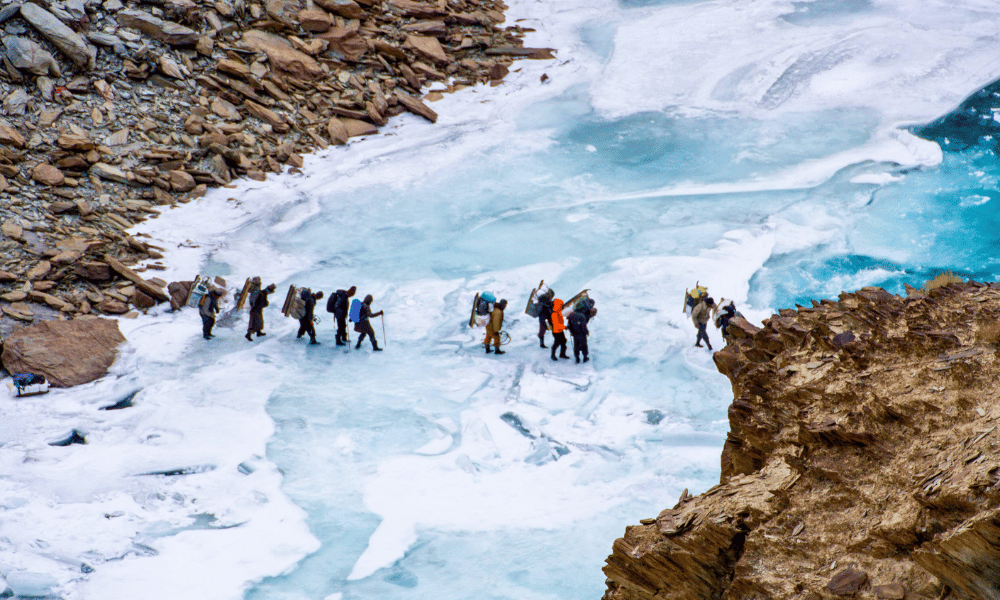
Trekking is not just an adventurous activity; it also brings a plethora of benefits to our physical health, mental well-being, and social interactions. Let's take a closer look at these benefits.
Physical Benefits:
Improved Cardiovascular Health: Trekking is a cardiovascular exercise that helps improve heart health by strengthening the heart muscles and reducing the risk of heart disease.
Muscle Strengthening: The act of walking on different terrains while carrying a backpack helps strengthen various muscles in your body, particularly those in your legs, core, and lower back.
Improved Balance and Coordination: Walking on uneven surfaces enhances your balance and coordination, which can be beneficial in your day-to-day life.
Increased Stamina and Endurance: Long-distance trekking helps build your stamina and endurance, as you are constantly pushing your body to cover more distance.
Weight Management: Trekking burns calories and aids in maintaining a healthy weight, given its physically demanding nature.
Mental Benefits:
Stress Relief: Trekking is an excellent way to reduce stress and anxiety. Physical exercise, coupled with being in nature, helps in the release of endorphins, also known as 'feel-good' hormones.
Increased Happiness: Studies have shown that physical activity and nature exposure can boost your mood and contribute to overall happiness.
Improved Mental Resilience: Overcoming the challenges encountered during a trek can foster mental resilience, making you more adept at handling stress and adversity in other areas of your life.
Social Benefits:
Team Building: Trekking in groups fosters teamwork and camaraderie. You learn to work together, help each other through challenging parts of the trek, and share the joy of achievement.
Community Engagement: Trekking often offers the chance to meet new people from diverse backgrounds. It also opens avenues for engaging with local communities along the trail.
Shared Experiences: The shared experiences and memories from a trek can forge strong bonds and friendships.
In essence, trekking is a holistic activity that caters to the overall well-being of an individual. It's an excellent way to maintain a healthy lifestyle, reduce stress, connect with people, and gain an appreciation for nature and different cultures. Whether you're a seasoned trekker or just starting, the benefits you reap from this activity extend well beyond the trails.
Essential Gear for Trekking
Being adequately prepared with the right gear is critical to ensuring a safe and enjoyable trekking experience. Here's a detailed list of the basic gear you should have, along with an explanation of why each item is important.
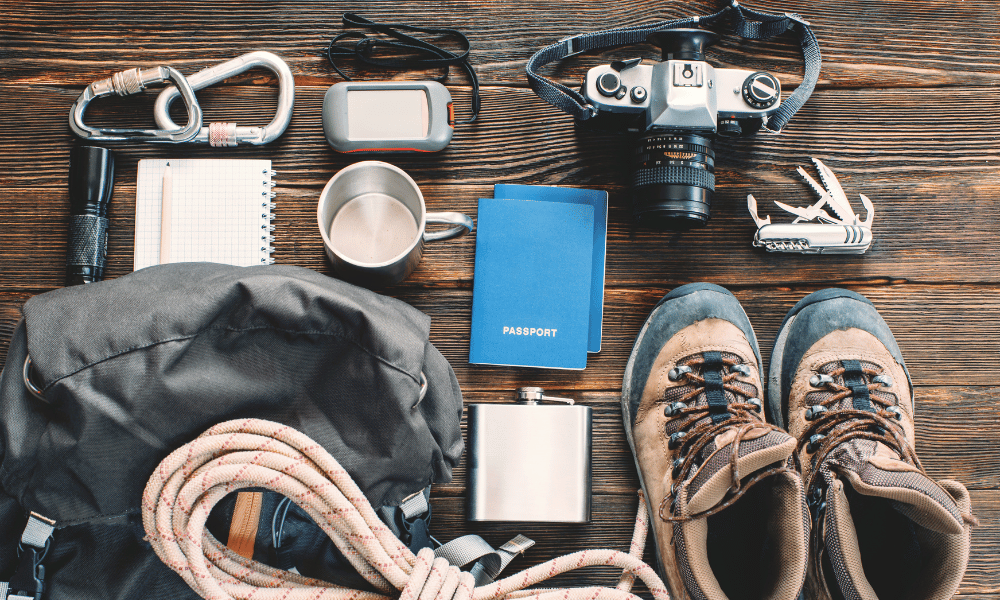
1. Backpack: A durable, comfortable backpack is the most basic necessity for any trek. It should have enough space to store all your gear and should fit comfortably on your back. It's worth investing in a backpack with adjustable straps and good back support to minimize strain on your shoulders and spine.
2. Trekking Shoes: Your feet will be doing most of the work, so investing in a good pair of trekking shoes is essential. These should be comfortable, water-resistant, and provide good ankle support and grip to navigate through different terrains.
3. Water Bottle/Hydration Pack: Staying hydrated is crucial when trekking. A reusable water bottle or hydration pack can help ensure you always have water at your disposal.
4. Maps and Compass: Even in the era of GPS and smartphones, having a physical map and compass is crucial for navigating in areas with poor signal or when your electronics run out of battery.
5. First Aid Kit: A basic first aid kit containing bandages, antiseptic wipes, tweezers, and common medications is a must-have for treating minor injuries or illnesses on the trail.
6. Multi-tool: A multi-tool that includes a knife, can opener, scissors, and more can come in handy in various situations during your trek.
7. Trekking Poles: Trekking poles can provide stability and balance while walking, reduce strain on your knees during descents, and assist during uphill climbs.
8. Weather-appropriate Clothing: Layering is the key to managing your body temperature during a trek. This includes moisture-wicking base layers, an insulating middle layer, and a waterproof and windproof outer layer. Don't forget a sun hat, gloves, and a warm hat for colder climates.
9. Food and Snacks: Carry enough food for your trek. This could include pre-packaged meals, high-energy snacks like nuts and dried fruit, and any necessary cooking equipment.
10. Emergency Shelter: A lightweight tent or bivvy bag can be a lifesaver if you have to unexpectedly spend the night outdoors.
When choosing your trekking gear , prioritize quality and durability over cost. High-quality gear will not only last longer but will also provide better performance and safety. Look for product reviews and ratings before making a purchase. Consider your specific needs in terms of the trek's duration, terrain, and weather conditions.
Remember, the right gear can make the difference between an enjoyable trekking experience and an uncomfortable or even dangerous one. Make sure you're adequately prepared before setting off on your trekking adventure.
Preparation and Safety Tips
Trekking is a physically demanding activity that requires careful preparation and respect for safety guidelines. Below, we've outlined advice on physical preparation, planning, and safety tips to consider before embarking on a trek.
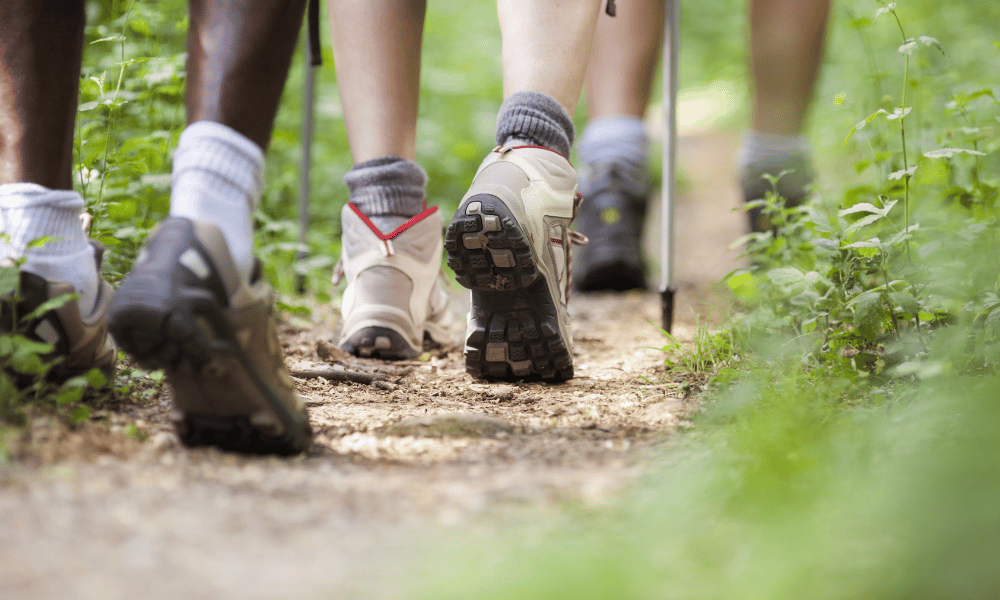
Physical Preparation:
Training for a trek depends on its difficulty level and duration. Here are some general recommendations:
Cardiovascular Training: Include activities like running, cycling, and swimming in your routine to build stamina.
Strength Training: Focus on strengthening your core and lower body muscles. Exercises like squats, lunges, and step-ups can be beneficial.
Balance and Flexibility: Yoga and Pilates can improve balance and flexibility, which can help prevent injuries during the trek.
Practice Hikes: Go on shorter hikes with a loaded backpack to simulate the conditions of the trek.
Planning a Trek:
Choosing a Destination: Consider your fitness level, trekking experience, budget, and personal preferences when choosing a trek. Research the difficulty level and typical weather conditions of potential treks.
Understanding Weather and Terrain: Check the weather forecast before you leave and be aware that weather in mountainous areas can change quickly. Research the terrain to understand what equipment you'll need.
Timing: Some treks are seasonal. Ensure you're planning to go at a time that's recommended for the trek to avoid dangerous conditions.
Safety Tips:
Stay on the Trail: Deviating from the trail can lead to getting lost or encountering dangerous terrain.
Recognize Signs of Distress: Understand the signs of common issues like dehydration, hypothermia, heat stroke, and altitude sickness.
Understanding Altitude Sickness: If you're trekking at a high altitude, familiarize yourself with the symptoms of altitude sickness and learn how to prevent it.
Inform Someone About Your Plans: Let someone know about your trekking plans, including the route you're taking and when you expect to return.
Respect Nature: Follow the principles of Leave No Trace to minimize your impact on the environment.
Remember, preparation and safety are key to a successful and enjoyable trekking experience. Always respect your own limitations and the power of nature. Happy trekking!
Most Popular Trekking Destinations
There are countless trekking destinations around the world, each with its unique appeal. From high-altitude challenges to cultural immersions, these trails offer something for every type of trekker. Here, we present an overview of some of the world's most renowned trekking destinations:
1. Everest Base Camp, Nepal: The Everest Base Camp trek is perhaps the most famous trek in the world, offering trekkers a chance to come face-to-face with the highest mountain on Earth. Despite its high difficulty level, it's a hit among adventurous souls, offering mesmerizing Himalayan landscapes and a rich Sherpa culture.
2. Inca Trail, Peru: This trek takes you through stunning Andean landscapes, cloud forests, and ancient Incan ruins, leading to the iconic Machu Picchu. The blend of natural beauty and historical significance makes it one of the world's most popular treks.
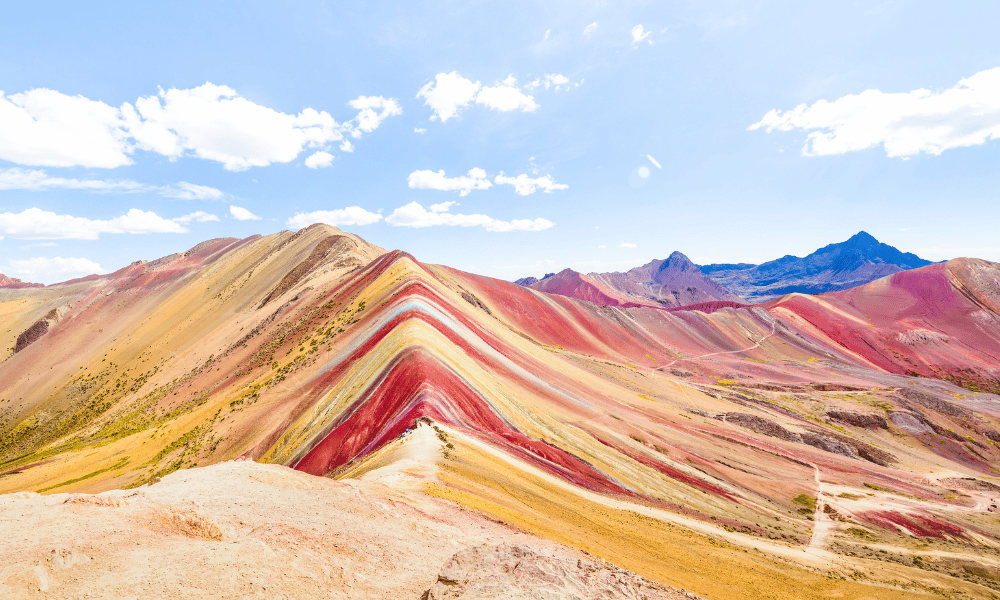
3. Kilimanjaro, Tanzania: Mount Kilimanjaro is the highest peak in Africa, and reaching its summit is an achievable goal for most determined trekkers. The trek takes you through various ecosystems, from rainforests to alpine deserts to a snow-capped summit.
4. The Appalachian Trail, USA: Stretching over 2,000 miles across 14 states, this trek is a favorite among long-distance trekkers. It offers diverse landscapes, from dense forests to mountainous terrains, and a vibrant thru-hiking community.
5. The Camino de Santiago, Spain: More than a trek, the Camino de Santiago is often undertaken as a spiritual journey. It offers a unique blend of beautiful landscapes, rich history, and cultural immersion as you walk through various towns and cities.
6. Annapurna Circuit, Nepal: This trek is famous for its diverse landscapes, including lush rhododendron forests, desolate high mountain passes, and terraced rice paddies. The Annapurna Circuit trek also offers an immersive experience of Nepal's diverse cultures.
7. Overland Track, Australia: This trek takes you through the heart of Tasmania’s wilderness world heritage area. It's known for its pristine lakes, extensive forests, majestic waterfalls, and diverse wildlife.
8. Kungsleden (The King's Trail), Sweden: This trek through Sweden’s most beautiful mountain landscapes is famous for its vast expanses, Northern Lights, and Sami culture.
9. Mont Blanc Circuit, France, Italy, Switzerland: This challenging trek offers stunning alpine scenery as you traverse through three different countries, each with unique cultural and gastronomic experiences.
10. Milford Track, New Zealand: Known as the 'finest walk in the world', this trek boasts of incredibly diverse scenery, from lush rainforests and crystal-clear rivers to towering peaks and deep glacial valleys.
These destinations offer a taste of the vast array of trekking experiences available worldwide. When choosing a trek, consider not just the physical challenge but also the cultural experiences, natural beauty, and unique aspects you are likely to encounter along the way.
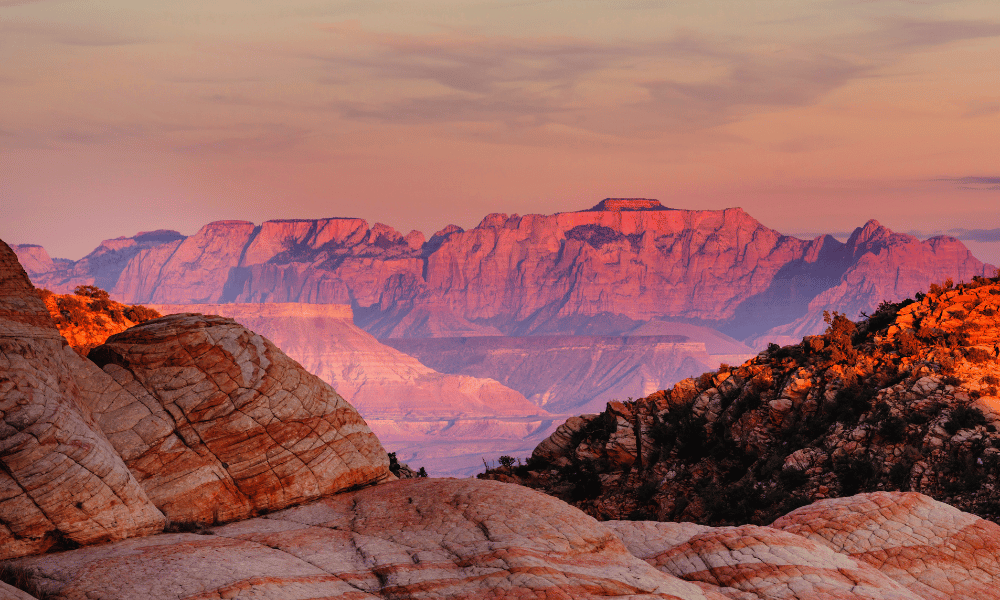
Environmental Responsibility While Trekking
As trekkers, we have a responsibility to protect and preserve the natural environments we visit. This is where the "Leave No Trace" principle comes into play. Originated from the backcountry setting, it has since expanded to encompass all recreational outdoor activities.
1. Plan Ahead and Prepare: This involves researching the area you'll be trekking in, understanding what to expect, and packing accordingly. This helps minimize damage to the environment and ensures your safety.
2. Travel and Camp on Durable Surfaces: Stick to established trails and campsites. Walking and camping on durable surfaces like established trails, rock, gravel, dry grass, or snow minimizes damage to vegetation and prevents erosion.
3. Dispose of Waste Properly: "Pack it in, pack it out." Any waste you generate during your trek, including food scraps, should be packed out. In certain situations, human waste may need to be buried or carried out.
4. Leave What You Find: Do not disturb natural or cultural artifacts. This includes flowers, rocks, historical structures, etc. The goal is to leave the place as you found it for future trekkers to enjoy.
5. Minimize Campfire Impact: Campfires can cause lasting impacts and can be a fire hazard. Use a lightweight camp stove for cooking and a headlamp or flashlight for light. If you must have a fire, use established fire rings and keep fires small.
6. Respect Wildlife: Observe wildlife from a distance and do not feed animals. Human food is harmful to wildlife and feeding them alters their natural behavior.
7. Be Considerate of Other Visitors: Respect other visitors and protect the quality of their experience. Keep noise levels low and allow others to pass on trails.
By following these principles, we can ensure that we're minimizing our impact on the natural environment and preserving these places for future generations of trekkers to enjoy. Remember, nature is not ours to take from; it's ours to appreciate, respect, and protect.
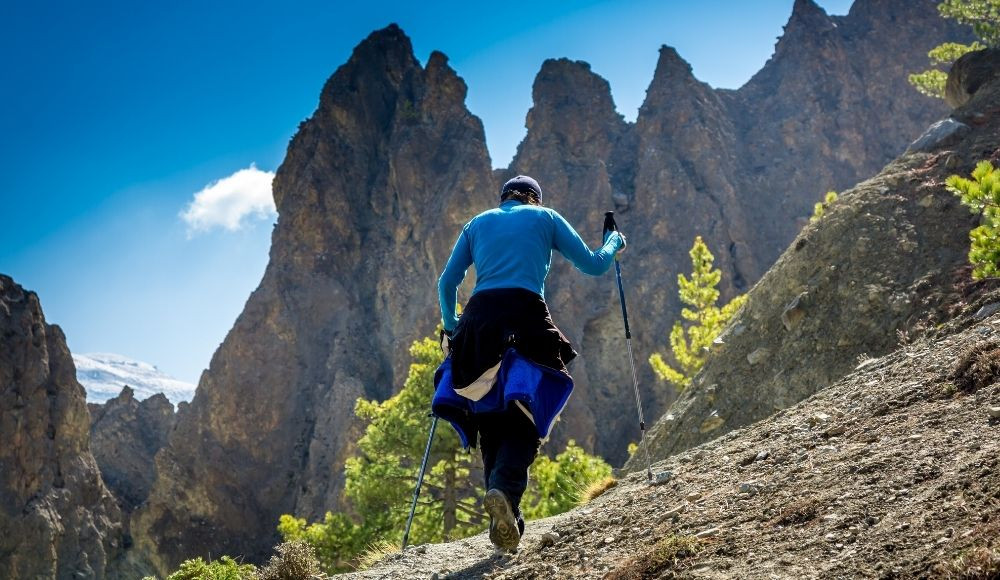
Trekking is an exciting and rewarding activity that offers a range of benefits, from physical fitness and mental well-being to cultural immersion and forging deep connections with nature. Throughout this blog, we've explored what trekking involves, its rich history, and the motivations that draw people to it. We've also delved into the vast array of benefits it offers, both physically and mentally, along with the essential gear you need to undertake a trek safely.
We discussed the importance of preparation, including physical training, planning your trek, and understanding vital safety measures. We also explored some of the most stunning trekking destinations worldwide, each unique in its landscapes, challenge levels, and cultural aspects.
In our final section, we emphasized the critical responsibility that each trekker holds toward the environment. Adhering to the "Leave No Trace" principle ensures that these beautiful landscapes remain conserved for future generations to experience and enjoy.
If you're seeking a hobby that challenges you, provides an avenue for adventure, offers ample opportunities for self-discovery, and brings you closer to nature, trekking might be the perfect fit. Whether you choose to take on the rugged trails of Everest Base Camp or the spiritual paths of the Camino de Santiago, remember that every journey begins with a single step.
As you venture out and explore the natural wonders around you, remember that each trek is not just about the destination; it's also about the journey. Embrace each moment, challenge, and scenic view along the way. Happy trekking!
Frequently Asked Questions
While both involve walking in natural environments, the terms are often differentiated by duration and difficulty. Hiking usually refers to day-long walks on well-marked trails, while trekking is typically more strenuous, can last several days, and often involves more challenging terrain or altitude.
While a basic level of physical fitness certainly helps, trekking can be enjoyed by individuals of varying fitness levels. It's important to choose a trek suitable for your current fitness and gradually work up to more challenging treks.
Basic trekking gear includes a good pair of trekking shoes, a backpack, appropriate clothing, a water bottle, maps, and a compass. Depending on the trek, you might also need camping gear, a first-aid kit, and navigation tools.
Yes, children and older adults can certainly enjoy trekking, provided they are in good health. It's important to choose treks that are suitable for their fitness level and age. Remember, the idea is to enjoy the journey, not to rush to the destination.
Trekking is generally safe as long as you are well-prepared, stick to the marked trails, and follow safety guidelines. Always inform someone about your trekking plans and estimated return time.
Begin with physical preparation several weeks before the trek. This includes cardiovascular training, strength training, balance exercises, and practice hikes. Research the trek thoroughly, including weather conditions, difficulty level, necessary gear, and safety tips.
Altitude sickness is a condition that can occur when you ascend to high altitudes quickly. Symptoms include headaches, nausea, dizziness, and shortness of breath. You can prevent altitude sickness by ascending gradually, staying hydrated, eating a high-carbohydrate diet, and descending immediately if you start to show symptoms.
The 'Leave No Trace' principle is an ethical framework used to guide decisions about outdoor behavior. The main idea is to leave the environment as you found it, causing minimal impact. It includes principles like disposing of waste properly, staying on trails, respecting wildlife, and being considerate of other visitors.
Popular trekking destinations include the Everest Base Camp in Nepal, the Inca Trail in Peru, Mount Kilimanjaro in Tanzania, the Appalachian Trail in the USA, and the Camino de Santiago in Spain. Each of these offers unique landscapes and challenges.
Follow the 'Leave No Trace' principles: stick to designated trails, camp in designated areas, carry out all trash, respect wildlife, and be considerate of other trekkers. Additionally, consider using eco-friendly gear and minimize the use of non-renewable resources.
BLOGS & TRAVEL STORIES
our first-hand Himalayan travel experience
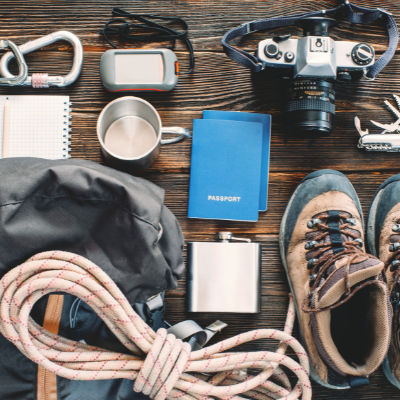
Culture and Festivals
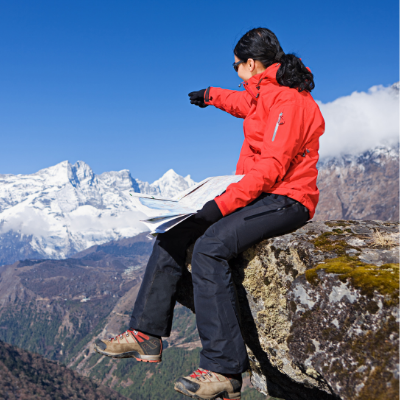
Travel Stories
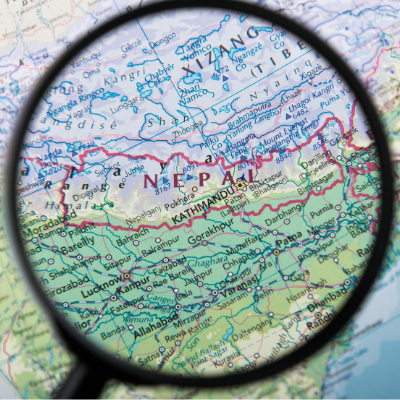
Latest Travel News
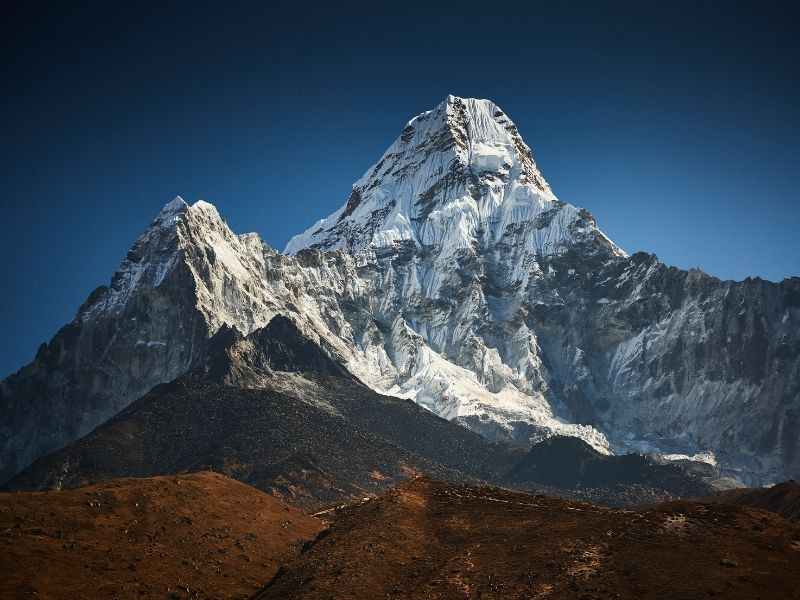
Mount Everest Region

World Heritage Sites
Cookies & privacy policy.
This website uses cookies to improve your experience. Learn More

How To Plan For A Trek: The Ultimate Guide
Ever considered going on a trek and don’t know how to plan for a trek?
Trekking, It’s definitely an experience you should try, but like any type of travel, it can be stressful to plan out the details—especially if you’re not familiar with the process. Trekking is an incredible way to spend time in nature, learn more about the local culture, and get in shape while doing it. However, it can also be quite dangerous or uncomfortable if you don’t know what you’re doing beforehand. As such, here are eight things you need to know before going on your first trek!
1) Get fit before you start
This one may seem obvious, but some people (for example, those who’ve never been hiking or trekking before) might not be in tip-top shape. But if you want to experience everything that goes along with trekking (or any type of traveling), you need to be prepared. The first thing you should do is visit your doctor and ask for a clean bill of health—your doctor can check your overall health as well as make sure you don’t have any conditions that could hinder your journey. If there are any minor health concerns, they can also give recommendations on how to deal with them while hiking or trekking so that it doesn’t become anything serious later down the road.
2)Train yourself for walking
Start by walking every day, maybe right after you wake up or before you go to bed. If possible, walk outside. Try not to take your phone with you—leave it at home and give yourself time for reflection. This will help you make sense of what is happening around you, which in turn will make it easier for you when it comes time for your trek. You can start small; instead of trying to cover 10 miles in one day, aim for 5 and work your way up from there as necessary. Start out slow if you have done little or no physical activity—it’s important that you feel good about walking before doing something more challenging like hiking up mountains.
3) Research your trek thoroughly
If you’re new to trekking, research all of your options thoroughly before you choose a trekking company and pay for your trip. This will help ensure that you are well prepared for any emergency situations which might occur during your travels. For example, if you have an emergency contact at home, make sure they have all of your travel details and emergency contacts in case something goes wrong while you’re away. It is also important that they are aware of where and when you are traveling as well as how long it should take for them to get in touch with someone from your trekking company in case something does go wrong.
4) Pack the essentials
Ensure that you always have your passport and other identification cards, as well as credit or debit cards, with you when you travel. Keep a copy of your medical insurance policy in case you need it. And pack medications that you take regularly in their original containers (pack them in your carry-on if they need to be kept cold or out of direct sunlight). Whether you’re traveling by car, train, boat, or plane, pack clothing appropriate for all possible weather conditions. If flights are canceled due to bad weather and temperature extremes common where hiking is most popular, missing even one day can disrupt every aspect of your trip — from airport logistics to hotel reservations. Check our Essential Trekking Gears for Trekking: Ultimate Guide for gears you need for trekking.
5) Choose the right Footwear
It’s very important that you choose proper footwear for trekking, as it can make all of the difference. When looking for good hiking boots , take note of your trekking style and what type of terrain you will be traveling on. For example, hiking in mountainous areas may require special treads and extra ankle support. Take into consideration how much time you plan to spend walking each day—there’s no sense buying a heavy boot if you only plan to walk three miles each day! Additionally, there are different types of socks that are better for specific activities. Wool socks are great for keeping feet warm in cooler climates or when hiking at high altitudes; however, they tend to be heavier than synthetic materials.
6) Carry the right backpack
The best type of backpack is one that fits your needs and your body. If you have broad shoulders, choose a bag with plenty of support straps and padding. Make sure it isn’t too heavy, or you won’t be able to carry it comfortably. Think about how many days you’ll be gone—if you need extra water, sleeping bags, or other supplies, make sure they don’t add too much weight to your pack (you might want to stick them in your daypack). Above all else, remember these two words: a breathable fabric. Don’t buy an old-school canvas bag if you can help it–make sure your bag has stretchy side panels so sweat can escape during those long uphill treks.
7) Get an early start
It’s always better to start early when traveling, but especially when hiking in unfamiliar territory. And while it’s easy enough to find your way down a trail you haven’t hiked before, it can be tougher coming back up — particularly if you set out during peak hours. If you find yourself working against crowds of others trying to get down from a popular peak or mountain, it’s often easier and safer if you can just wait until later in the day. Hiking early will also allow for plenty of time should anything go wrong; hikes tend to take longer than expected, after all! It’s always better for there to be too much time than not enough — such is life!
8) Listen to your body but don’t be afraid of it
As you train for your trek, pay attention to how your body responds. If you’re feeling weak or lightheaded, slow down—you don’t want to collapse during your trip. On days that you exercise, eat more carbohydrates and proteins than usual. The increased calorie intake will give you energy. Do not try any new supplements or drugs unless advised by a doctor first; some may cause unexpected side effects, like stomach pain and nausea.
9) Eat well during your trip
From jet lag and long car rides to roughing it in tents, there are many ways in which a trip can impact your eating schedule. As such, it’s important that you fuel up properly before and during each adventure. Pack healthy snacks like nuts or granola bars in case you find yourself famished on day one of your trip; when hunger hits, reach for something with protein or fiber. If you’re embarking on an overnight trek, be sure to pack high-energy foods like granola bars as well as plenty of protein-packed foods like jerky, nuts, and hard cheese that won’t go bad at higher altitudes.
10) Follow instructions of local guides if you are on a group tour
The most experienced guide will have trekked more times than you can count and has likely taken your trail many times. It is their job to keep you safe and make sure everyone in your group is having fun. If they suggest following a certain path, don’t question it; just do it. Their advice can mean life or death if something goes wrong, so respect that they know what they are doing—for good reason! This goes for any activity where there is risk involved: always follow the instructions of local guides first before setting off on your own. And never forget that wherever you go, even when abroad, people who live there will be experts in what to do in an emergency situation because an emergency situation happens often when doing something dangerous!
The bottom line is that you should make sure you are prepared and know how to plan for a trek before going on a trek. A small amount of preparation can save you from lots of trouble.
Share this:

Trekking Poles for Backcountry Hunting: A Comprehensive Guide
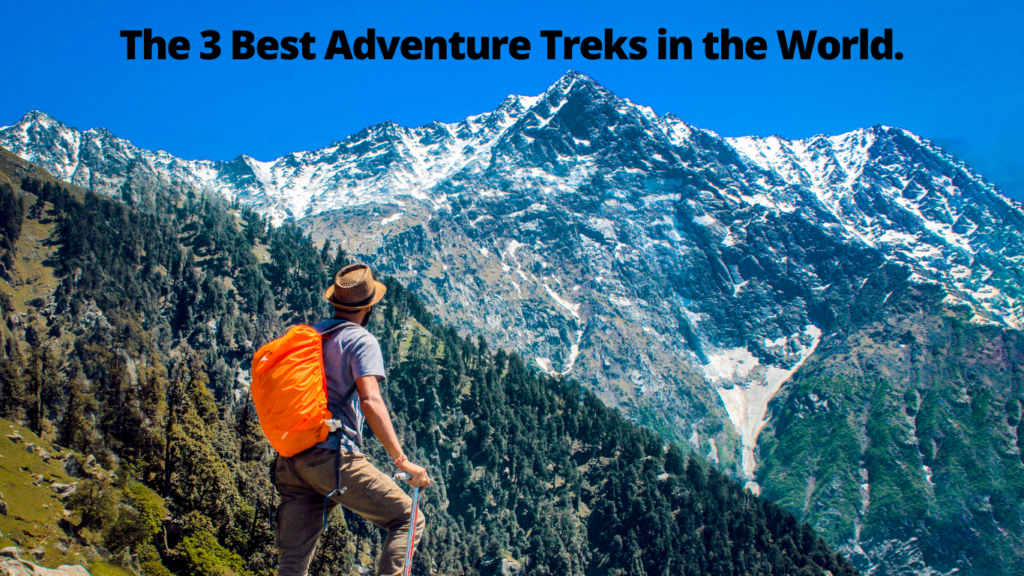
The 3 Best Adventure Treks in the World
5 thoughts on “how to plan for a trek: the ultimate guide”.
Pingback: How to Avoid Altitude Sickness While Trekking in Nepal - HikePackers
Pingback: Essential Trekking Gears for Trekking in Nepal: Ultimate Guide - HikePackers
Pingback: How to plan for a trip to Ladakh: Ultimate Guide - HikePackers
Pingback: The Top 10 Trekking Destinations in the World
Pingback: Trekking as a Hobby (2024): Embracing Adventure and Wellbeing Outdoors | HobbyFAQS
Leave a Comment Cancel Reply
Your email address will not be published. Required fields are marked *
Save my name, email, and website in this browser for the next time I comment.
Notify me of follow-up comments by email.
Notify me of new posts by email.
Sign up for our newsletters
The best of hiking news, in your inbox.

Beginner’s Guide for Trekking in the Himalayas: Tips on Planning and Execution
Home » Trekking Tips » Beginner’s Guide for Trekking in the Himalayas: Tips on Planning and Execution
- April 21, 2023 April 22, 2023
- Trek Preparation , Trekking Tips
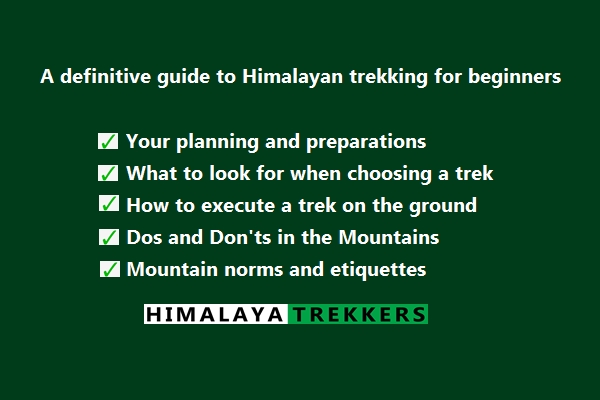
The majority of you who have searched for this topic are probably planning your first trek in the Himalayas. Otherwise, you may already have booked a trek and are trying to understand what an adventure tour would be like on the mountain.
Yes, you read that right—an adventure tour. Trekking in the Himalayas is indeed an adventure tour, and it will have its share of risk elements as well. But don’t worry; you have a certain amount of risk even when you cross a road or drive a car. Besides this, trekking is not a sport, at the same time does require certain physical strength and endurance, along with mental preparation.
Now let’s carefully go through the major planning parts and till you complete your journey along with our insights and pro tips . Remember that it is almost impossible to write an “ All in One or Complete Guide ” on this topic. In spite of the fact, we put in our due diligence so that we don’t miss any important points for you and even work as your one stop trekking guide. Don’t follow blindly whatever is written or implied, including our website! While most of these are facts, a few are opinions based on professional experience on this topic or a holistic view of mountains in general.
Also, this article is not about recommending the best treks for beginners in XYZ and so on, but rather equipping you with a meticulous understanding of the fundamentals of a trekking vacation in the Himalayas. On top of that, you get a broad understanding of how to choose a trek that suits you the best.
Plan well ahead of the execution:
Planning the right steps from the beginning would surely help you complete your first Himalayan journey, making it safe and memorable. It can be a life-changing experience quite easily for you. However, a trip at an altitude above 3000 m or 10000 ft will have uncertain natural or inclement weather conditions; altitude itself is a barrier, and adjusting to a different daily routine for most of you can be a potential challenge on a trek. Don’t take it too easy or casually, and be prepared. That can easily make life difficult on mountains. Simply think that mountains have their own natural rules, and we just need to abide by them. Rest can be a game changer in your life.
The Planning Phase: From now till you start your journey
Now we will discuss the points, which are essentially your preparation. It’s better to pay attention to details if you have made up your mind in favour of a Himalayan trek. When you get time, do go through the given links for more understanding. Note the headings so that you can do your own re(search) on the points mentioned here.
Choose the right season or time for your trek :
Any trekking route in the Himalayas will have its own specified season(s) that are supposedly the “best time to visit”. During this period, a particular route showcases most of the beauties and features it is known for. Additionally, you get a safer passage to complete your trek as well.
Each such suitable season for a particular trek will have different beauties and offerings, and you don’t get them all together. But trust us, each season will delight you with something or other.
Decide on the trekking grade :
All Himalayan treks are graded according to their difficulty level to complete. Consider starting with an Easy grade trek . You should try a route that will be well within your control as a whole; don’t test any extremes. Most likely first time you are going to a high altitude place and stay above ~ 3000 m/10000 ft.
People with previous hiking experiences in low altitudes who are living an active lifestyle or following a fitness schedule for the time being may consider a Moderate level trek , going up to the highest altitude of ~ 4300 m – 14000 ft while camping or sleeping below 4000 m – 13000 ft of altitude.
Research the trekking route or the region :
Now these treks are located in different states or destinations across the Indian Himalayas . Try to see which ones suit you best, your preferred locations that match your vacation time, and any other preferences. All the destinations are indeed beautiful, but at times it’s a matter of convenience to choose a particular region.
Sometimes you may have heard about or been recommended a particular trek route. Before taking up your trek, research your chosen trekking route thoroughly. Get information on the trail conditions, weather patterns, altitude changes, and any cultural and natural landmarks along the way. This will help you prepare mentally and physically for the trek.
Pro tip : Consider choosing a trek from a shortlist that most matches with the above mentioned three points.
Talk with someone you know:
This is a quite natural thing that you would like to talk to someone you know who has been on treks, preferably in the Himalayas. Or maybe you just heard about trekking from a person, and now you are here as part of your research. First-hand information from people you know matters, as they should have taken many of these steps.
Otherwise, just get in touch with us so that we can talk. Often, it is easier to comprehend or understand when we talk.
Consider bookings through a reputed trekking tour operator/agency for trekking:
As a first-timer, it’s not normal that you can arrange a DIY (a.k.a. independent) trek in the Himalayas on your own. Well, maybe if you have highly experienced friends or family members to make a group. There are many logistical things the team would need to take care of to arrange an independent trekking tour.
Else, simply do your research and choose a professional organisation that takes care of the trekking logistics and helps you with many other things that you require. E.g., almost half of the points we discuss here are automatically taken care of by a reputed trekking company.
As a trekking tour operator, we offer Fixed Departure Treks that you may join as a solo member or with your group. Dates, costs, and services for these treks are fixed. Alternatively, if you already have your own group of people, you may opt for a Customised tour . Here dates, itinerary, level of service, and itinerary are tailor-made as suits your group. Cost depends on primarily the number of persons and level of service you prefer.
Pro tips : You pay for the professinal knowledge and on ground quality support. Do thorough research before choosing your trekking organisation. Consider getting a first-hand reference or recommendation from someone you know. There are many companies that are essentially travel portals or marketplaces, and Trek is one of the many available products and tickets they sell! It all depends on how the on-ground tour operator, who is responsible for managing and running the show, handles things! We suggest you avoid using a “booking agency”, unless highly trusted.
Keep a provision for an extra (buffer) day in your itinerary:
It may be pretty helpful to keep a buffer day or two in your travel itinerary. Keep this reserve day at the end of your trek. Either use it during an unforeseen event on the trek or later you just chill out a day after your trek.
Depending on a trek, sometimes it is convenient to reach the nearest railway station or airport on Day 0. Plan your travel itinerary accordingly.
Flexible flight tickets and reservations can be handy in dealing with such conditions.
Visit a doctor and consider getting a travel cum medical insurance for the trip:
It is always advisable that you visit a doctor well in advance before starting your trek. You must consult your doctor if you are already on medication or have an existing medical condition.
As already mentioned, trekking in the Himalayas involves certain risks, such as bad weather, accidents, and natural disasters. Consider getting comprehensive travel insurance that covers medical emergencies, evacuation, and repatriation. Check with your trekking company to see if they can arrange one for you.
Arrange the necessary permits and documents :
Treks within the Himalayas are in remote locations and require permits from various governing bodies, including the concerned forest department or district administration offices, etc. If you book with a company, they will obtain the necessary permits.
Always carry the original identity card with your address on it. It can be your AADHAR, driving licence, voter ID, passport, or any other government ID card (a PAN card is not a valid ID card as it doesn’t have an address on it). Keep one or two photocopies of the original. In some treks, you need to bring your recent passport photo for permit procedures.
Additionally, you may have to submit a medical fitness certificate from a doctor for some treks where it is applicable. As it’s an adventure activity, usually companies will require an indemnity clause signed by you as well.
Get fit for the trek:
Trekking in the Himalayas can be physically demanding, so it’s essential to be in good physical shape. If you are already on a fitness schedule, you are surely at an advantage. Otherwise, plan to start a fitness programme well in advance, focusing on cardio and a few strength training exercises. Consult a physical trainer or your tour operator before undertaking any such programme. You can also do some practise hikes in your local area to build up your stamina.
Remember that you will enjoy the trail and surroundings more when you are reasonably fit for a given trek.
Here is a starter for the beginners:
Physical Fitness
Check the list of things to carry :
This is a very important aspect so you are safe and comfortable on the mountains.
- Your 3-layers of clothing (a must on the mountains above ~3000 m/10000 ft):
- Sleeping bag (generally, it is included in the package by your tour operator, like we do in our treks)
- Your trekking shoes or boots
- A rucksack or a backpack with a raincover
You may buy, borrow, or rent a few items. On many easy treks, you can reuse the already existing ones that you have for a different purpose. Consult our article on renting vs. buying trekking gear before deciding on a particular item.
Do carry a personal first aid and general medicine kit.
There are other small yet essential things to pack. Check out our detailed list of things to carry on a Himalayan trek below:
List of things to carry on a Himalayan trek
Pack smart and light:
The key to backpacking is to pack all the essentials while keeping your pack light. You don’t want to carry unnecessary items that are heavy on you. We recommend that you invest in buying good quality items so that they serve you safely on the mountain in the long run. At the same time, these items are lighter in weight and known for their wider range of use in different types of situations and conditions.
How you should pack your backpack for trekking?
Budget your expenses:
Now comes the budget. Estimate based on the following major expenses:
- Your tour package cost (which usually takes care of your accommodation, meals, trekking guide and support staff, camping equipment and logistics, permits and levies charged by the governing authorities, etc.)
- Travelling to basecamp and returning home
- Any other accommodation and meals outside the trek but which may be required during your travel
- Purchasing or renting trekking gear
- Any other personal expenses or some buffer expenses
Pro tip : Keep adequate cash on hand for any on the spot expenses and as a buffer. Online transactions can be very difficult in remote areas due to limited network connectivity.
Don’t jump into a trek at the last moment:
As you can see, there is quite a bit of planning ahead for your trek, so just don’t register or book a trek at the last moment. As a beginner, take your time, plan well in advance, and then get things arranged. There is always a next time, no matter how tempting if you could manage to join at the 11th hour. I is very likely that if you are very late to decide, you may remain unprepared and put yourself and your team at risk.
Trek Execution Phase: Follow these when you are actually on the trek
This is an equally important phase and deals with the dos and don’ts on the ground. To adjust yourself on a mountain, you need to focus on two key areas. One area is altitude and how you are coping with it physically following certain rules. Another area is being that how do you interact with the environment as a whole by following certain norms, decorums, or etiquette, whatever you like to call it.
Stay hydrated and enjoy your meals:
It is vital to drink enough water and fluids throughout the day to remain hydrated. Fill your water bottle(s) at a campsite and ask your guide about a possible opportunity to refill while you walk. Drinking water is collected from a stream or from a natural source. Avoid drinking water from unknown sources.
Remember that due to the cool or cold weather, you may not feel like drinking adequate water. This may directly lead to a muscle cramp or create other health problems on the mountain.
Eat sufficient food, which gives you much needed energy and nutrition to continue your trek. Ideally, you should eat at least the same amount you eat back at home. A fractional reduction can be due to the new conditions; however, a moderate loss of appetite is an early indicator of mountain sickness.
Acclimatise properly :
High altitude means less pressure, or thin air, and less oxygen to breathe. Acclimatisation refers to the physiological changes that occur when you arrive at a high altitude and allow the body to function properly in the low oxygen environment. E.g., your ear pops on a plane, which is the adjustment your body does due to the pressure difference.
It is recommended that you sleep inside the tree line for three nights before reaching a higher altitude. Usually tree line ends between 3300 to 3600 m (11,000 and 12,000 ft) depending on a region or particular route. A well thought-out itinerary will consider these factors and help you in the acclimatisation process.
If your body doesn’t acclimatise, you may notice sustained symptoms, which include headache, nausea, shortness of breath, and dizziness. difficulty sleeping, and the inability to exercise or move. These are signs of Acute Mountain Sickness (AMS) , although they are uncommon below 4000 m – 13000 ft. When someone is affeted by AMS, it is a must to bring the person as quickly as possible.
Avoid alcohol and smoking which seriously harm you on the mountain.
Pro tip : Cool down once you reach your campsite for the day. Don’t get inside the tent and rest immediately, even if you are feeling unwell. Rather, put on warm clothes, walk around a bit, chit chat with your fellow trekkers, sip a cup of tea, and enjoy and adjust to the environment.
Inform any irregular or uncomfortable physical condition to your trek guide:
Always inform your trek guide or leader about any discomfort rather than keeping it a secret. This may help to identify any altitude conditions and act accordingly.
Follow the instructions of your trek guide or leader:
This is self explanatory. Be it how you walk or manoeuvre on the trail or maintaining certain rules. They are experienced in these conditions and well aware of the situation. After all, your guide and support team are responsible for your well being on the mountains.
Start early and finish early:
A regular day on the trail can be quite different from your daily routine back home. During a trek, you wake up early to witness the sunrise views, get refreshed, and have your breakfast. Pack everything and be ready to start at the latest by 7:00 – 7:30 am.
If you start early, most likely you will reach your day’s destination on time and have plenty of time to explore the campsite in the afternoon. Similarly, you finish your dinner and call it a day early so that you get enough sleep.
Set your pace:
It is important to find the pace that suits you. Don’t walk too fast or too slowly, as either of these will make you tired. Keep walking at a slow but steady pace. Take short breaks to enjoy nature or to catch your breath.
Follow mountain manners and etiquettes
Mother nature likes good manners. Be modest and humble in the mountains. A smile goes a long way. Your flexibility to cope with and adjust according to the conditions is certainly a great advantage.
Work as a team on mountain:
Just remember the age-old saying, United we stand, divided we fall. Gel well with your team mates. Your team’s bonding plays a role here as well.
Respect local customs and traditions:
The Himalayas are a culturally diverse region, and it is important to respect local customs and traditions. Dress modestly, remove your shoes before entering temples or monasteries, and ask permission before photographing people.
Care for the environment, leave no footprints:
The Himalayas are a fragile ecosystem, and it’s important to respect and take care of the environment while trekking. This is the only way we can do our part to preserve this magnificent gift of nature for our future generations.
Strictly avoid littering, stick to the designated trails, and do not disturb the local flora and fauna. Don’t leave any of your non-biodegradable waste on the mountain; carry these items back and recycle or reuse them whenever possible.
If you have continued till now, most likely it has clarified many queries and doubts that you had as a beginner. If you need some more information or understanding, please feel free to get in touch in one of the following ways:
About Author
Leave a Reply
You must be logged in to post a comment.
Submit this form that we can email you all the necessary details and call you to discuss.
Tour starting date: green boxed dates indicate starting of a scheduled fixed departure tour (day 1 of our tour itinerary). please check the calendar and choose a suitable fixed departure date (green boxed) unless dates are not matching or you are looking for a customised/private trip., i accept the terms & conditions.
- Campgrounds
- Camping Recipes
- Hiking & Backpacking
- Survival Skills

- Privacy Policy & Disclaimer

What Is Trekking? The Difference Between Hiking And Trekking
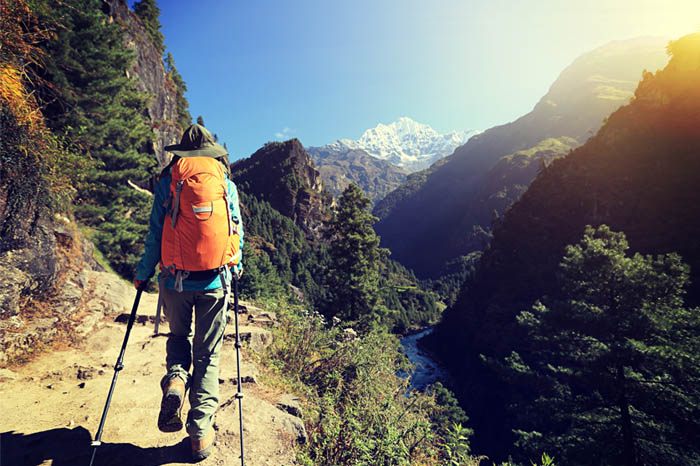
“Trekking” has always been a popular phrase; even non-travelers acknowledge its connection to traveling and other related issues. Yet, what exactly it entails still leads to confusion at times - even for regular tourists! Worse, certain people use "trekking" and "hiking" interchangeably, assuming their meanings are identical.
So what is trekking exactly then? This article will shed some light on these matters. Learning the proper terms to use will help you sidestep unwanted misunderstandings, which proves rather practical in future trips and cruises (if any).
What Does Trekking Mean?
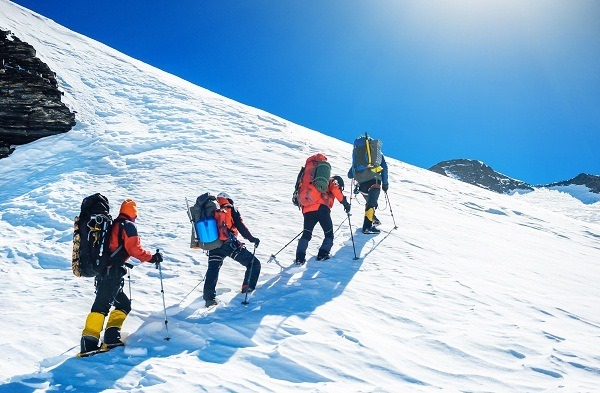
1. The Fundamental Definition
Trekking refers to vigorous and long walks on countryside footpaths and trails. Such types of pleasure walking originated from Europe quite early, around the seventeenth or eighteenth century.
Though some argue that religious pilgrimages existed long before that, these activities mostly involved long-distance walking for spiritual purposes (associated with particular religions).
2. How The Term Differs Across Different Countries
Not every region uses the same phrase. "Trekking" - a short term for multi-day hiking, is mostly preferred by Pakistan, India, Nepal, South America, North America, and Iran.
On the contrary, Ireland and the U.K. adopt "walking" instead to describe all walking forms - whether it's a short walk in parks or long backpacking trips to the Alps.
At the same time, remote England areas tend to use “hillwalking”, “fell walking”, and “rambling” (a rather outdated term).
Australia, on the other hand, is more familiar with "bushwalking" (both on-trail and off-trail), a term adopted by the Bush Walkers around 1928.
"Bushwalking" alludes to difficult traveling through the undergrowth, dense forests, or bushes, in which forward progress calls for constant vegetation pushing. In more extreme cases - where the vegetation grows so dense that any human passage becomes impeded - trekkers would use machetes to clear pathways better.
In contrast, New Zealand refers to active walking as "tramping" (for longer and overnight trips) - a common activity with numerous organizations throughout the country.
And last but not least, North Americans name multi-day hikes (with camping activities) as “backpacking”.
3. Necessary Equipment
Trekking equipment depends on numerous factors, one of which is the local climate. But in most cases, day trekkers should bring along food, water, a hat, a map, and some rain-proof devices. Though hiking boots used to thrive in popularity for rougher terrains, they have ceased to be common in recent years, being replaced by sturdy running shoes.
Aside from those basic necessities, The Mountaineers Clubs also list:
- Sunglasses
- Sunscreen
- First-aid kit
- Flashlight
- Firestarter
Other clubs recommend gloves, hats, insect repellents, and emergency blankets as well. For us, it doesn't hurt to carry trekking poles, since they lend great support in carrying heavy backpacks.
Most of these suggestions are tailored for warm seasons (like spring or summer). Though cold periods still demand more or less the same devices, you will need better trekking skills and more specialized gears to withstand the harsh weather.
What Are The Differences Between Trekking and Hiking?

1. Hikes Are Shorter
Duration has always been the most transparent difference between the two walking forms.
For one, trekking never lasts less than two days, and most trekkers often have a clear destination in their mind. To accomplish their goals, these people are willing to traverse thousands of miles on one single trip.
On the contrary, hikes have a much shorter span compared to their counterparts. When a person says, "I'm going hiking!", chances are the trip only lasts for a few hours - or a day at best. Rare cases involve overnight camping, though that still will not take more than two days like trekking normally would.
2. Trekkers Do Not Follow Marked Trails
Another distinction to bear in mind lies in the involved terrains. Most hikers set out on marked trails to walk through hills, forests, mountains, or any other well-known natural environment.
Trek journeys, on the other hand, are rarely associated with marked paths. Trekkers like to set their bar higher by exploring much less common nature sites and being off the beaten path.
Since the latter refuse to conform to pre-set paths, they have greater opportunities to land upon untouched or undiscovered sceneries.
3. Trekkers Never Come Back To The Same Base
Though hiking can occur overnight, its base is mostly situated on one specific spot. For illustration, hikers can camp in a closeby mountain hut and go to another peak the next day. But once the night comes, they always return to their base - the first hut.
On the contrary, trekking practitioners never come back to their previous locations, always emphasizing the destination ahead.
Every time they stop, their bases change to another place - whether it's a lodge, hotel, tent , or any other accommodation type. The camping sites in these cases are often influenced by walking routes and weather conditions.
4. Hikers Need Much Less Equipment
Though basic devices are similar for both activities, their further requirements witness certain variations. Since hiking lasts much shorter, only a pair of good boots or shoes sometimes is enough, along with one or two clothing items to handle unexpected weather and temperature changes. If the trip lasts a whole day, bringing a backpack to keep food, water, and necessities is also recommended.
With hiking, maps or compasses are a great addition but not really necessary. After all, most trails are clearly marked, with transparent signs to indicate the right path to go and how long you should keep walking.
Treks are a slightly different story, calling for more equipment. A good package should include a compass, map, sleeping mats, sleeping bags, walking poles, waterproof jackets, and fast-drying clothing.
5. Trekking Is Much More Physically Demanding
You should have guessed by now that trekking demands an entirely different effort level - and hence, not tailored for everybody. Months-long physical training and preparedness are a must if you wish to travel for weeks without stopping. Not to mention, the whole trip is quite time-consuming, as you traverse across numerous terrains and regions.
Here's a fun trivial fact: the fastest trek ever recorded by Guinness lasted 41 days, 19 hours, and 51 minutes for a path of almost 800 km. Now you understand why we claim it's a demanding activity!
Meanwhile, hiking is much more leisure and easy to accomplish - even for those that have never hiked a mile in their lives. You also enjoy much broader and flexible choices when it comes to trails.
Their difficulty degrees and lengths are often indicated right from the start, helping hikers visualize the possible challenges ahead. Make sure to pick one that suits your physical ability best!
Similarities Between Hiking And Trekking
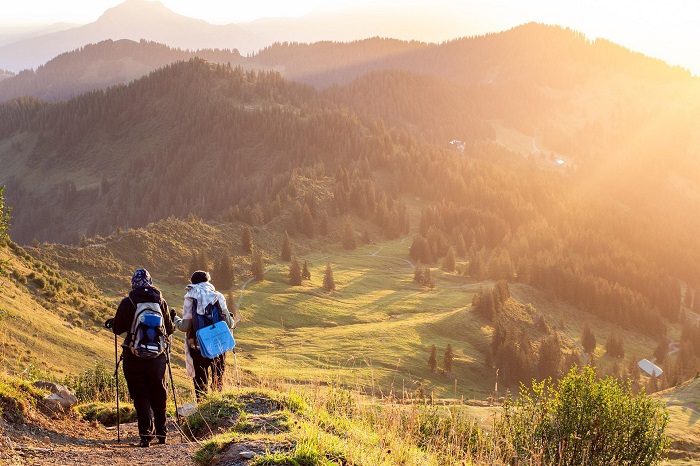
Trekking and hiking are considered among the most common outdoor activities with tons of similarities.
For starters, both entail long-distance walking on foot (though sometimes other means, such as horseback, are also present). Other involved tasks include camping, wild roughing, and in-depth exploration of new places. They require more or less the same devices, such as trekking poles, boots, and clothing.
And most importantly, what strikes these two as extremely comparable lies in their shared physical and mental boosts. Some of the most outstanding health advantages are as follow:
- Both lower heart disease risks & improve blood pressure: CDC studies have concluded that both walking forms reduce 50% of stroke dangers, circulating blood on a regular basis to sustain energy for your body.
As a result, they are highly recommended for people exceeding 40 years old. Organizing weekly or monthly trips for your parents and grandparents would be a terrific idea!
- Both give your overall fitness a major boost: Your muscles will benefit a ton from these activities. They build more strength for your lower leg regions, thighs, hamstrings, and hip muscles, enhancing your endurance against harsh conditions and weather.
Scientists have also proven that both are listed as weight-bearing tasks, fostering bone density and core energy. The more you walk, the stronger your bone structures and muscles will be!
- Both burn calories: Wanting to lose some weight or tone the muscles? Throw those gym exercises away; it's time to hit the trails!
Trekking and hiking burn around 400 to 980 calories in just one hour alone - as per Livestrong investigations. Imagine the amount you can burn after an overnight trip or week-long trek!
- Both improve mental health: Multi-day or overnight walking is the greatest way to shoo everyday stress away! According to specialized psychologists, anxiety and depression tend to grow stronger if one person is cooped up way too long indoors.
Hence, an outdoor trip will open your eyes to more perspectives. Beautiful sceneries around you know how to draw your attention, after all, which will temporarily sweep off constant worries and stress from your mind.
- Both nurture creativity: Imagination boosts are also another palpable benefit proven by science! The sunlight provides an immense source of vitamin D that lends your mind more creative energy.
Not to mention, vitamin D also increases your attention span and focus capabilities, delivering inventive spins on your problem-solving talents!
What Are Some Types of Trekking?
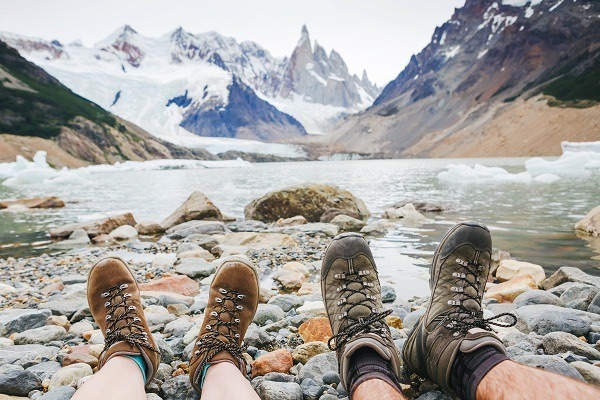
1. Lodge (or Teahouse) Trekking
These trekking trips often occur on trails littered with teahouses, which help minimize costs and hazardous influences posed by harsh weather conditions. They also shield trekkers better against harsher terrains.
Most of such treks are supported by local tour guides, who will lead you to regions with greater access to local inns and teahouses. Sometimes, they also offer you porters to handle the necessary equipment for the trip.
2. Fully-Organized Trekking
These trekkers will rely entirely on hired staff for pretty much everything - from group equipment and outfits to food and necessities.
While you are crashing out during the night, the staff will prepare breakfast and lunch in advance according to the menu your group has already picked out. Feel free to turn to whatever delicacies that suit your palettes: continental, western, Nepali, Tibetan, and more.
Overall, a basic fully-organized trekking trip includes:
- An experienced tour guide
- A kitchen helper
Hence, it's no surprise that they are pretty expensive. Still, such an intensive support team will lend you better opportunities to enjoy the trip and discover beautiful, pristine landscapes where no teahouses are available.
3. Horse Trekking
It's a sub-branch of both options discussed above, taking you through areas purely on horseback. There are often tour services and companies for these trekking trips, lending you tack and horses if you do not already have one.
The scopes also vary, ranging from a quick visit to ranches to full-fledged drives, in which you move these animals miles after miles and camp out just like real cowboys. And, of course, since horse riding is pretty strenuous, make sure you have decent riding abilities and physical stamina.
4. Self-Prepared Trekking
And obviously, we will save the best for last. Self-prepared trips are by far the most common, since they charge much less and enjoy more flexibility. It's possible to either shorten or lengthen the journey to your heart's content, without strict reliance on the company's schedules and price ranges.
Nevertheless, that does not mean all are roses and sunshine! Since there are zero local guides to help you with the most basic stuff like translation or food, it's a must to plan everything carefully - maybe months or even a year in advance!
What Are Some Of The Best Trek Benefits?
Aside from the notable health advantages already discussed above, trekking also brings about tons of benefits that make it a worthwhile hobby to maintain:
- Extensive culture knowledge: As you have a direct and on-hand experience of the region's most practiced cultures, your perceptions regarding these matters will be extremely vivid and in-depth - much more so than rotted learning through books or documents.
- Lots of Friend-Making Opportunities: You can already seize a friend or two within your neighborhood alone; imagine how many companions you might gain in thousand-mile travel!
And from a more practical perspective, these new friends will lend you a decent place to stay overnight should you embark on similar trips in the future.
- Strong Will: A typical trek involves thousands of unexpected hassles and challenges - which, in a way, is actually a good thing.
Once you return from these journeys safe and sound, you will find yourself a changed person: more determined, more strong-willed, and ready to tackle all hardships life throws at you!
What is trekking? This article has handled the issue, along with other relevant facets to gain you a more insightful overview of what it entails.
Despite the demanding nature of such activities, frequent practices will give you tons of unprecedented benefits compared to regular hiking. Should your physical stamina and budgetary limits allow it, pick up a trek pole and jump onto the road now!
RELATED ARTICLES MORE FROM AUTHOR
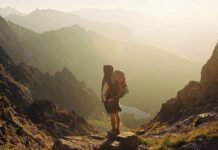
Solo Backpacking: The Definitive Guide (Updated 2024)
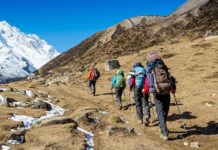
What Is Thru Hiking? Thru Hiking vs Backpacking! All You Need To Know

Barefoot Hiking Tips & Benefits – All You Need To Know!
[…] how you should go about climbing over those tough hills. As you get more experience with hiking and trekking, you will learn a few subtle tricks to help you make faster progression on your trip. Here are a […]
Hiking is my favorite sport and Trekking is which I really wanna try one time in my life. Thanks for sharing information about them.
Caroline, Trekking requires more effort and stamina than hiking, but it worths trying once in a lifetime. Hope you have a safe trip. Best wishes!
trekking is the best part of the life for that we have to manage many things like travel gears that help us at trail and we have completely got the guide. Thanks for sharing information about them
I’ve hiking since I was a kid and love it. Never really thought about trekking till learning about it recently and now its something I definitely wanna give a shot.
Ya, you definitely have to try it once in a lifetime. Trekking requires more effort than hiking and you should prepare thoroughly in advance. Happy trails! 🙂
I love hiking and your post is very informational for newbies and i really enjoy reading your post. Thanks for sharing
I really like your post about hiking. Its very informational
It’s really hesitation to understand hiking and trekking. Which I had before. Your information is great. Now I am feeling to try new experience and refreshment.
LEAVE A REPLY Cancel reply
Popular posts.

Is Polyester Warm, Does Polyester Keep You Warm? (Obviously!)

How To Identify A Water Moccasin In 5 Simple Steps –...

Where To Find Flint? Learn All You Need To Know Here

Do Ramen Noodles Expire? The Basic Knowledge You Need To Know

Test your endurance on the world's 10 best treks

Sep 14, 2021 • 11 min read
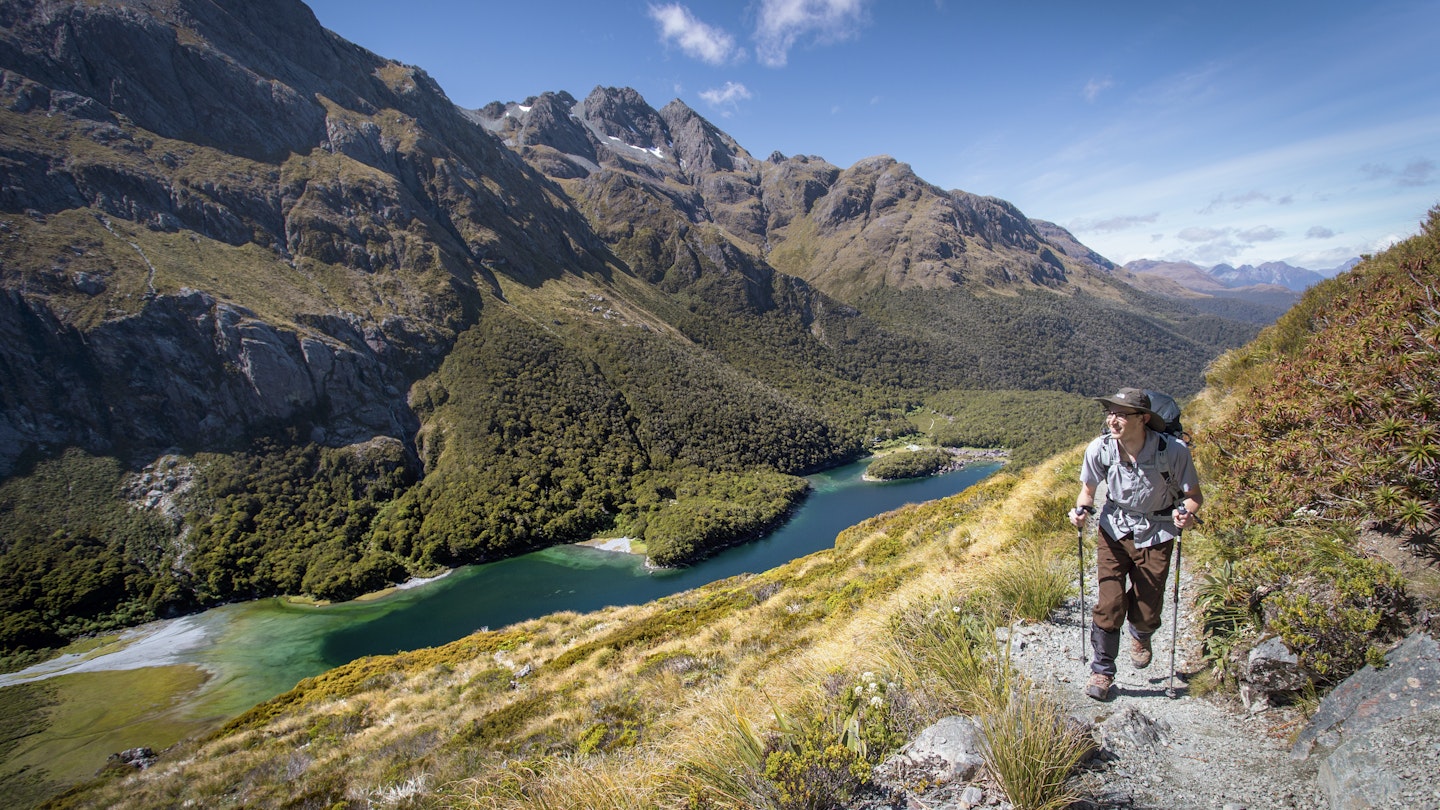
Supersized landscapes along New Zealand's Routeburn Track © Philip Lee Harvey / Lonely Planet
Ask ten experienced hikers to nominate the best treks in the world and they'll give you ten different answers. Some treks are epic because of the scenery. Some are epic because of the almost superhuman levels of effort and endurance required to reach the end point. For some trekkers, it's all about the destination; for others, it's the journey and the camaraderie along the trail.
But the world's top treks all have one thing in common–a sense of mission that transforms the simple act of walking into a life-affirming expedition. With this in mind, we've compiled our own list of the world's top treks, from jungle trails to breathless tracks through the mountains of Nepal . All require a sturdy pair of lungs and a fit pair of legs, but the experience of trekking is its own reward; we promise you'll still be talking about these hikes decades later!
Explore the planet's most surprising adventures with our weekly newsletter delivered to your inbox.

Top Tips for Trekkers
Before you load up your backpack with trekking socks and Kendal mint cake, give some thought to the infrastructure on the route you plan to conquer. Some treks require total self-sufficiency, sleeping under canvas and purifying water as you go; other routes have refuges or rustic teahouses every step of the way. Here are some of the key considerations:
- Travel light: every extra gram will weigh you down on the trails; if it isn't essential, leave it behind.
- Respect your feet: boots offer more support, but all-terrain trainers are lighter and dry more quickly after a soaking.
- Protect your knees: trekking poles can help control the knee-crushing descents that are a feature of pretty much every trek.
- Climb slowly : Acute Mountain Sickness (AMS) can kill, so ascend slowly and take rest days to acclimatize on any trek above 2,500m in elevation.
- Heed the weather: when treks go wrong, it's normally because of the weather, so check the forecasts; if conditions look bad, stop somewhere safe and sit it out, rather than pushing on over the next pass.
- Be prepared: don't launch straight from the sofa to the summit–warm up with gentler walks, hikes and runs to get your body used to the exertion.
- Plan ahead: many trekking routes require a permit and advance booking for lodges and camp sites; for some routes, you need to book months ahead.

Everest Base Camp, Nepal
Best trek for: would-be mountaineers
Distance: 80 miles (130km) round trip Duration: 2 weeks Level: moderate
Climbing to 18,193 feet (5,545m) at its highest point, the 2-week trek to Everest Base Camp is Nepal 's best-loved trek, with 8849m Sagarmatha (Mt Everest) rising ahead like a petrified giant. Tracing winding river valleys and the creaking mass of the Khumbu glacier, this mighty mission visits mountain monasteries, soaring lookouts and precariously balanced Sherpa villages, with gruelling days of altitude gain that will test your muscles and endurance to breaking point.
It's not all hard work though. The trekking infrastructure is unparalleled: porters and guides wait on arrival at Lukla's tiny mountain airstrip, cosy teahouses provide warm beds and nourishing plates of dal bhat (lentils and rice) along the entire route, and side trails open up a mountain playground of summit ascents and high pass crossings for a taste of real mountaineering. Sure, the trails are mobbed in season, but the sense of camaraderie amongst trekkers is hard to beat.
The golden rule, however, is respect the altitude. Acute mountain sickness is a risk if you rush, so take it slow and steady and pause for the recommended rest days to let your body catch up with the elevation.

2. GR20, Corsica, France
Best trek for: people who love challenges Distance: 104 miles (168km) round trip Duration: 15 days Level: difficult
This character-building slog through Corsica is legendary for the diversity of landscapes it traverses, and for the level of grit it requires from trekkers who brave its rugged trails. There are forests, granite moonscapes, windswept craters, glacial lakes, torrents, peat bogs, maquis, snow-capped peaks, plains and névés (stretches of ice formed from snow) to conquer, and the tough terrain weeds out all but the most dedicated hikers.
Created in 1972, the GR20 links the town of Calenzana, in the Balagne, with Conca, north of Porto Vecchio, but the thrills don’t come easy. The path is rocky, uneven and frequently steep, with crossings over rickety bridges and exposed scrambles over slippery rock faces and loose, skittering scree–all part of the fun! You'll be drawing water from springs and sleeping in rustic mountain refuges, but two weeks later, you'll be able to tell the world you conquered Europe's toughest trail.
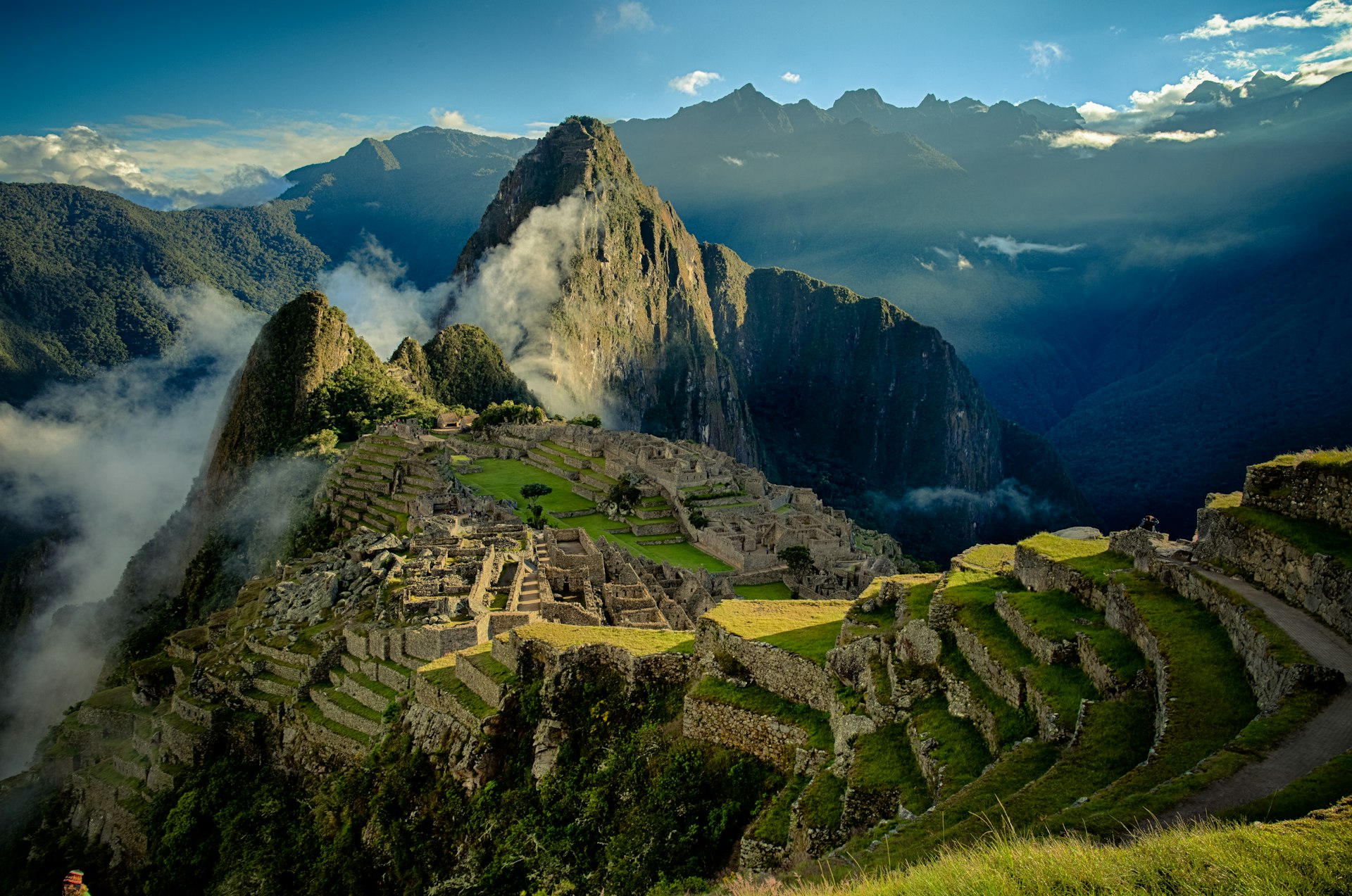
3. Inca Trail, Peru
Best hike for modern-day explorers.
Distance: 20 miles (33km) round trip Duration: 4-5 days Level: moderate
The 20-mile (33km) trail to the 15th-century Inca citadel of Machu Picchu was used for centuries before it was brought to global attention when explorer Hiram Bingham 'discovered' the route in 1911. Today, the secret is definitely out; the trail to Peru 's most famous ruin is packed with backpackers, but with giddying views of high cloud forests and Machu Picchu waiting ahead like a beacon, we suspect you won't mind.
The trail climbs to 7,972 feet (2,430m) from the Sacred Valley , winding its way up, down and around mountains, and crossing three high passes en route. As a consequence of its popularity, the number of hikers permitted each day is restricted to just 200 people to protect Peru's not so lost 'lost city'. The result is a more tranquil experience for those fortunate enough to get permits, but hikers should still take extra care to make sustainable choices when visiting .

4. Kilimanjaro, Tanzania
Best trek for: snow in the tropics Distance: 23–56 miles (37-90km) Duration : 5–9 days Level: moderate
Okay, it's the favorite trek of fundraisers everywhere, and an almost obligatory trip for visitors to East Africa, but the week-long ascent of Africa's highest mountain is still an epic undertaking. From the moment you first spy its misty prominence rising above the dusty plains, you'll know that Kilimanjaro simply has to be climbed. Lions and elephants may mill around at its base, but the summit is snow-capped and desolate, and lofty enough to bring a risk of altitude sickness at 19,340 feet (5,895m).
There are seven recognized routes to the top, and trekkers can complete the ascent in anything from 5 to 9 days, with longer treks being recommended to reduce the risk of AMS. The final stage usually starts before dawn, reaching the summit as the first light of morning erupts across a vast sweep of African savanna. In practice, nearly two thirds of trekkers opt for the Marangu (6 days) or Machame (7 days) routes on the south side of the mountain.
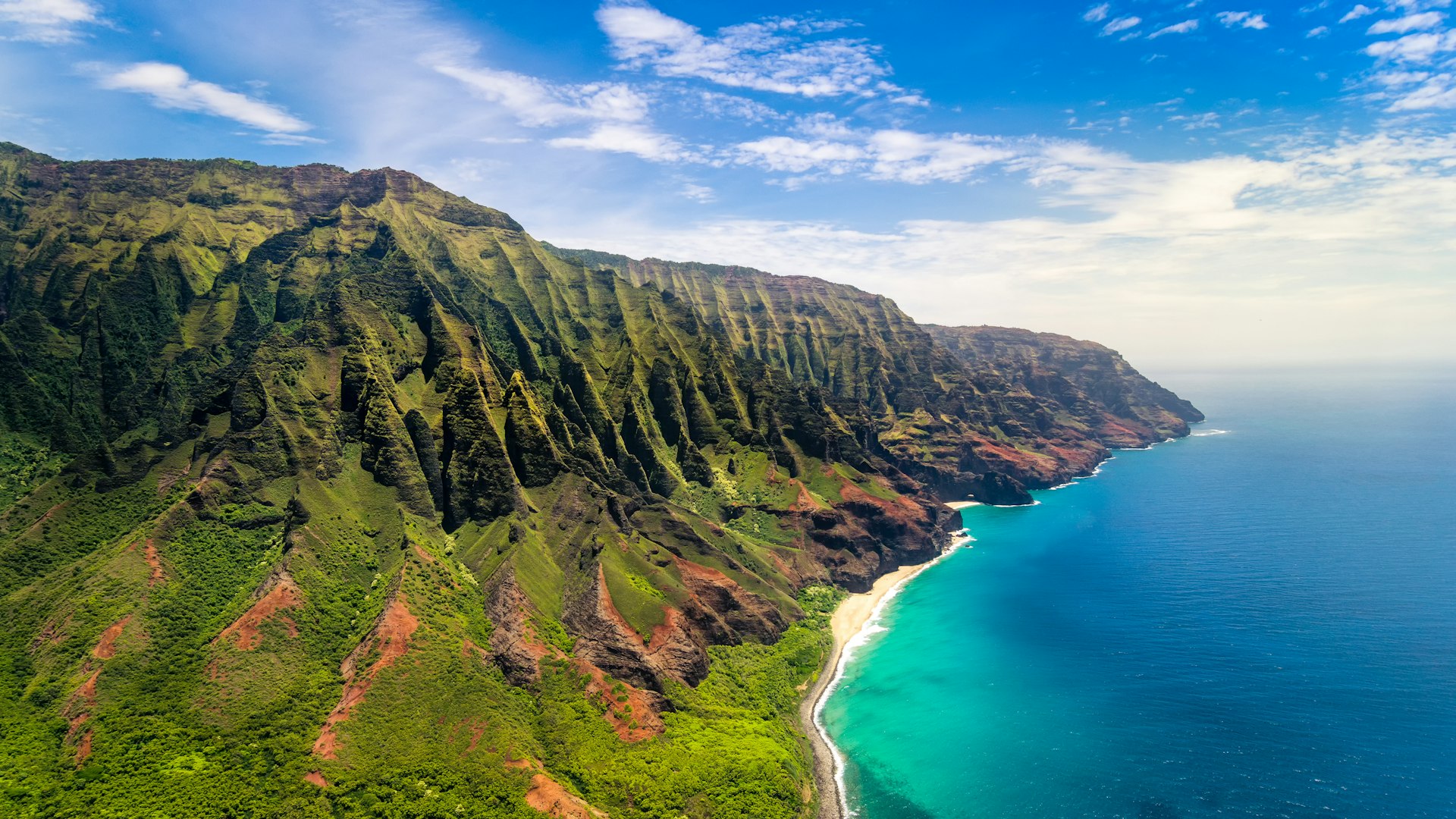
5. Kalalau Trail, Hawaii
Best trek for: sea views Distance: 11 miles (18km) each way Duration: 2 days Level: moderate
When asked to pick the best treks in the US, most reach for hikes along the rim of the Grand Canyon, or the mobbed trails that climb to the summits of El Capitan and Half Dome in Yosemite National Park . However, we prefer to choose something a bit more off-piste. Linking Keʻe Beach and the Kalalau Valley on the north shore of Kauaʻi , the beautiful Kalalau trail follows a towering cliff wall dripping with tropical foliage to reach an overnight stop at a splendidly remote Hawaiian beach.
The route along the Nā Pali Coast starts out easy, but gets progressively more challenging on steep dirt paths; the reward comes in the form of elemental views over primordial valleys, thundering waterfalls, secluded beaches and the churning waters of the Pacific Ocean. There's a definite Lost World feel, and a bit of caution is required, as people have fallen from the track or been washed away by sudden flash floods.
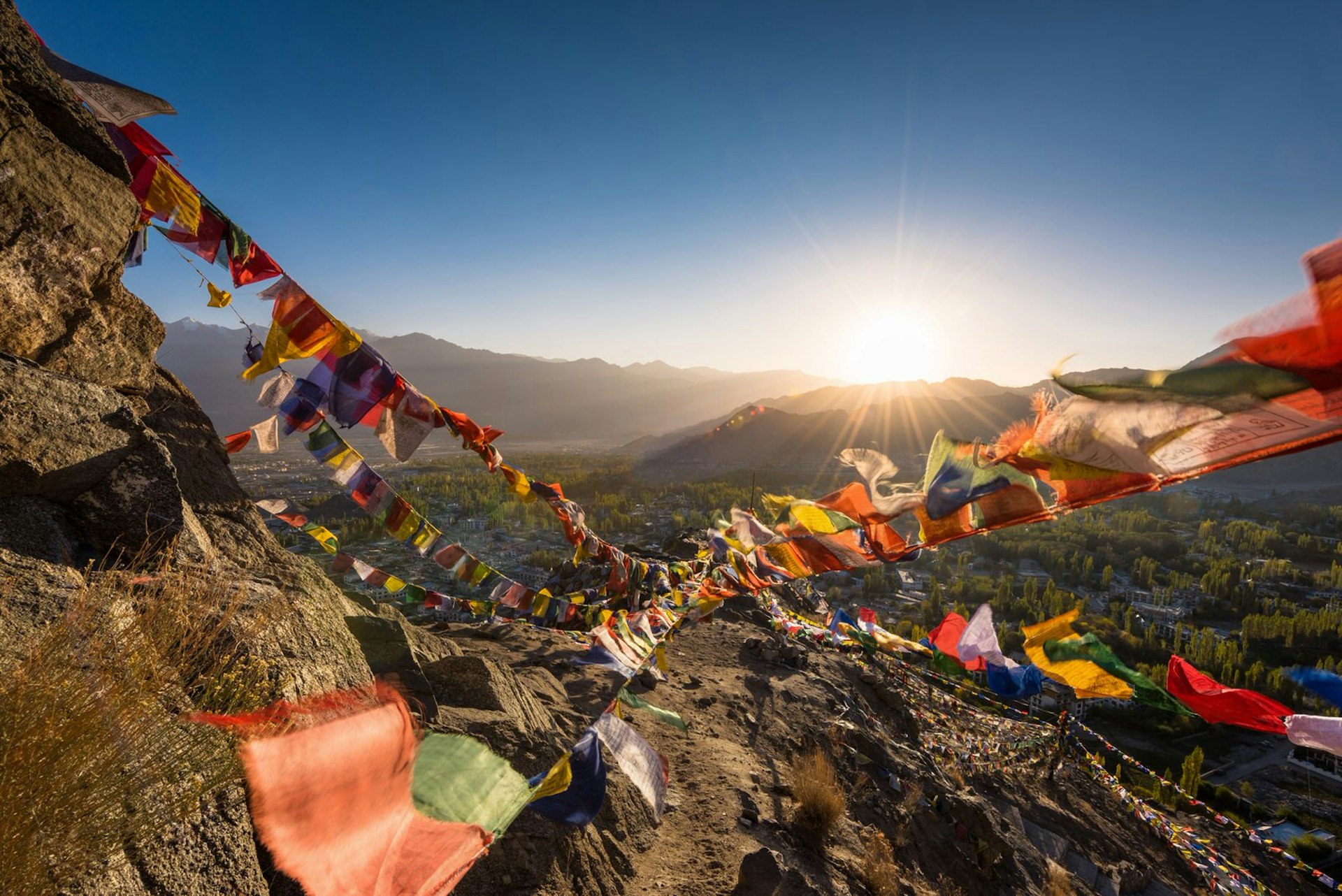
6. Markha Valley Trek, Ladakh, India
Best trek for: spontaneous trekkers Distance :50 miles (80km) Duration: 6-7 days Level: moderate
Fewer people trek on the Indian side of the world’s mightiest mountain range, but those that do are rewarded with views to rival anything in Nepal, Tibet or Pakistan. There are spectacular treks all over the Indian Himalaya, from the breathless Goecha La trek in Sikkim to pilgrimage treks to remote mountain temples in Uttarakhand and Kashmir , but for our rupee, the best trekking country of all is in lofty Ladakh , crossing high-altitude deserts in the rain-shadow of the high Himalaya.
The Markha Valley trek strains for a week across a wonderfully desolate moonscape, circling south from Leh through the jagged ridges that flank the south bank of the Indus River before emerging near the famous Buddhist gompa (monastery) at Hemis . Best of all, no complex planning is required; you can reach the trailhead by bus from Leh, crossing the river in a dangling basket and stopping at whitewashed teahouses in timeless Buddhist villages along the trail.
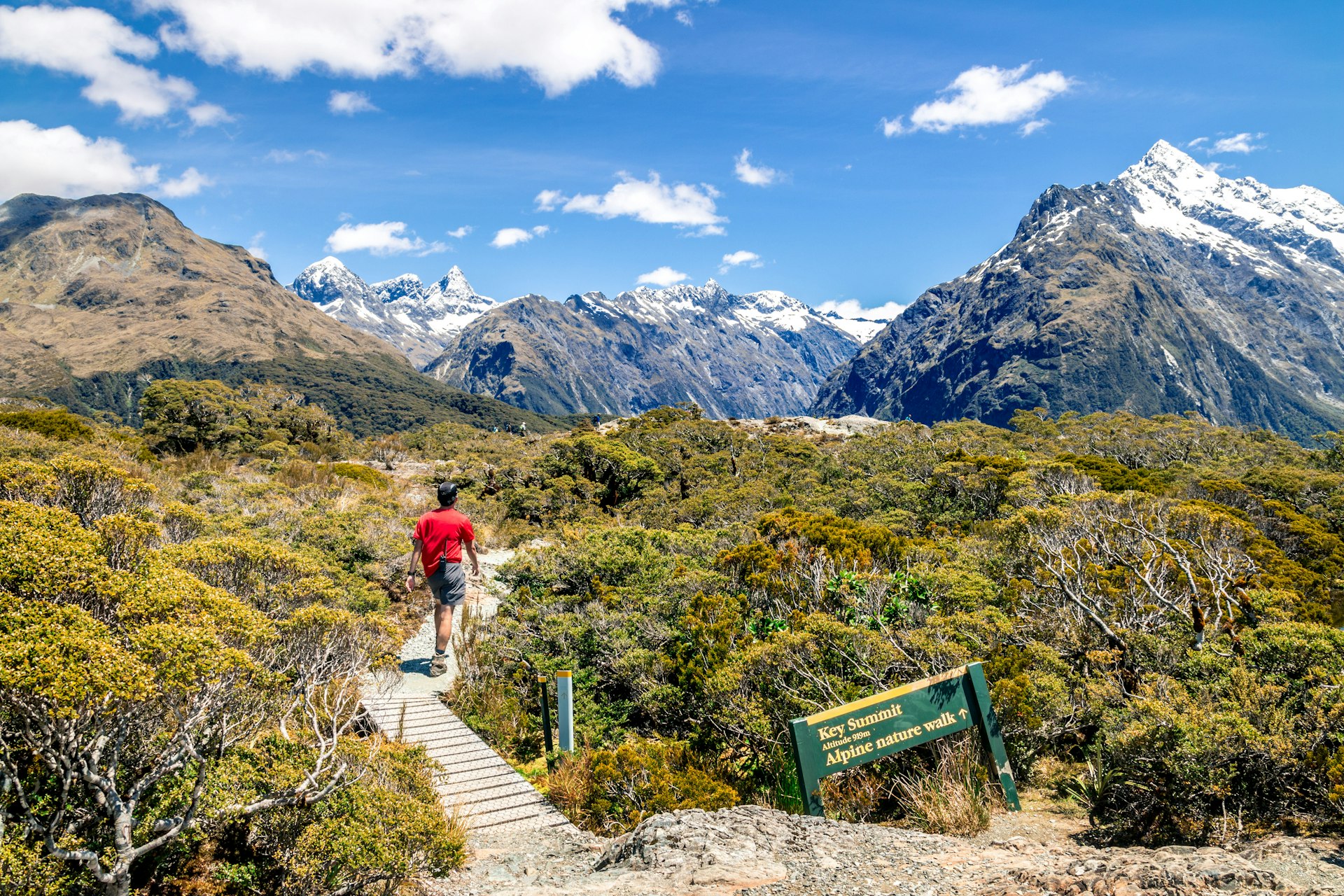
7. Routeburn Track, New Zealand
Best trek for: fans of big landscapes Distance: 20 miles (32km) Duration: 3-4 days Level: moderate
New Zealand ’s South Island is as alpine as you can get without actually being in the Alps, and the 3-day Routeburn Track is one of the best ways to cross this pristine natural wonderland. This is a trail for fans of big vistas and open skies, following glacier-carved fjords, truncated valleys and rugged ridges through the plunging landscapes of two stunning national parks: Fiordland and Mt Aspiring.
The preferred route runs from the Routeburn Shelter (north of Queenstown) to Milford Road, with overnight stops in spectacularly located campgrounds. Highlights include the views from Harris Saddle and Conical Hill, and chilly dips in spring-fed mountain tarns. The main challenge for this popular hike is securing a place among the limited numbers who are allowed at any one time–make bookings well ahead through the NZ Department of Conservation's Great Walks booking site .

8. Gunung Rinjani, Indonesia
Best trek for: early risers Distance: 15 miles (24km) Duration: 2 days Level: moderate
There simply has to be a Southeast Asian volcano hike on the list, and for our money, it's Indonesia's Gunung Rinjani . While Lombok 's blissful beaches simmer at sea level, the island climbs to a breathless height of 12,224 feet (3,726m) at the summit of this enormous lake-capped volcano, which still periodically rumbles into life, most recently in 2016.
Trekking to the summit of Gunung Rinjani is up there with hiking the Himalaya as one of Asia's favorite adventures. To make the best of the views, the final push to the top starts in the dark, in order to gain the crater rim as first light pushes back the gloom, revealing the crater lake and its sinister cinder cones like a lost valley of the dinosaurs.
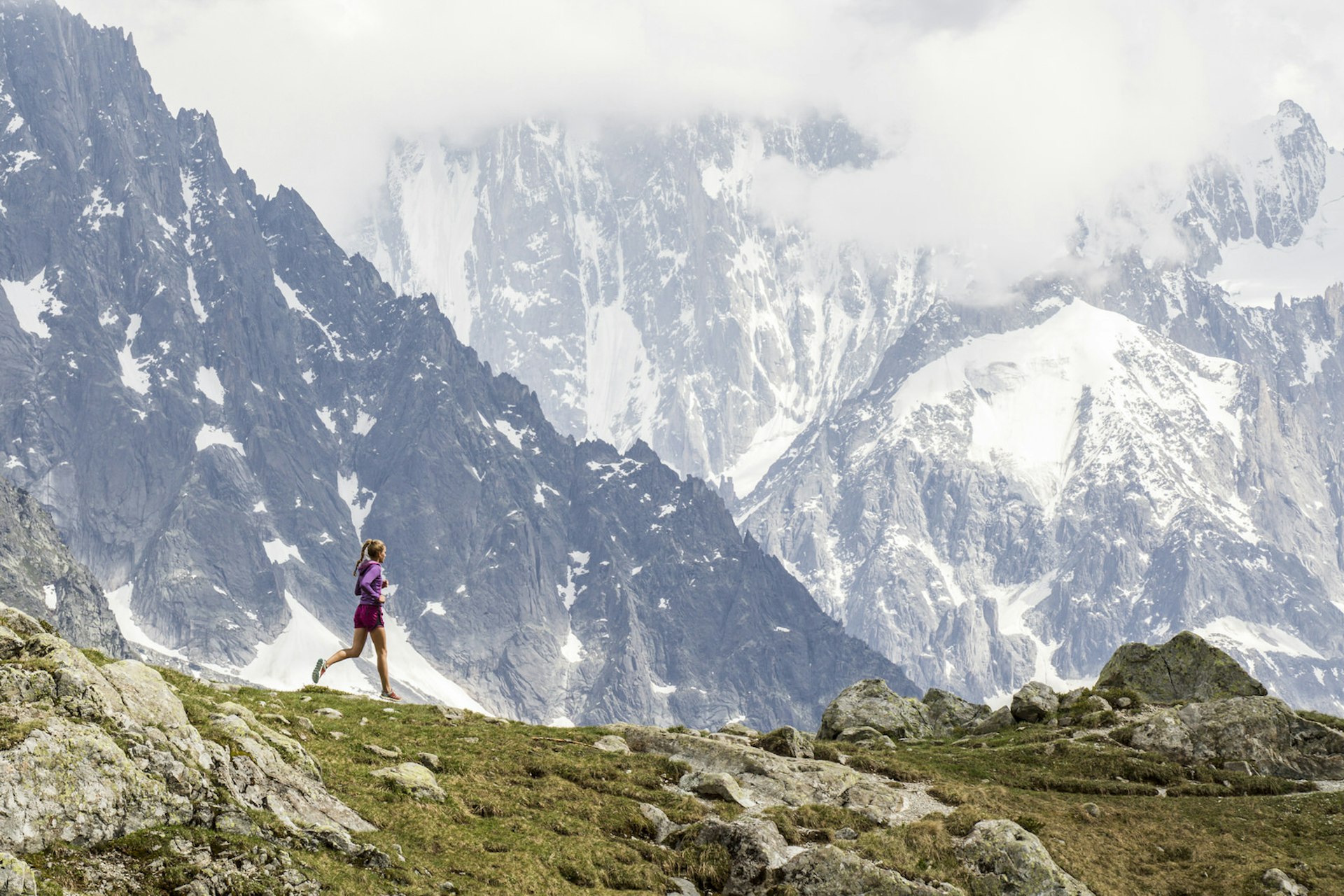
9. The Haute Route, France-Switzerland
Best trek for: yodellers Distance: 125 miles (200km) Duration :14 days Level: difficult
Leading from Chamonix in France through the southern Valais to Zermatt in Switzerland , the 2-week-long Walkers' Haute Route trek traverses some of the highest and most eye-popping scenery accessible anywhere in the Alps. Hiking here is a summertime endeavour, tracing a different course to the famous winter Haute Route for ski-tourers. Every stage will test your endurance, with ‘pass hopping’ that demands a high level of fitness on many sections of the walk.
So why put your body through all this exertion? The mountain views, obviously! Some days pass through yodel-worthy alpine meadows, while others struggle over glacier-carved outcrops guarded by mountain giants. And with this being northern Europe, the infrastructure along the way is excellent, with hotels, gites d’etape (rest shelters), auberges (inns) and mountain refuges dotted all along the route. You'll appreciate a warm bed and a hot meal as you tackle over 46,000 feet (14,000m) of elevation gain.

10. The Torres del Paine Circuit, Patagonia, Chile
Best trek for :photographers Distance: 85 miles (136km) Duration: 9 days Level: difficult
Many visitors to Chile 's Torres del Paine National Park draw up short when they see the scale of the terrain and opt for the shorter 'W Trek', but we recommend following the full 9-day 'O Trek' circuit, to soak up the sheer variety of landscapes in this magnificent wilderness reserve. As you follow the trail from Las Torres, you'll pass some of the world's most photogenic vistas: crystal-clear rivers, sculpted mountains, open grasslands, old-growth forests, deep and silent lakes and the icy tongue of Grey Glacier.
That's a lot of variety per trekking mile, but you need to plan ahead as only 80 trekkers are permitted on each section of track at any given time, and camping sites and refugios are in heavy demand. Make bookings with the companies operating the lodges and camping areas months in advance if you hope to secure a slot during the busy November to March trekking season.
You might also like: 8 of the world's most epic hikes Trekking to K2 base camp in Pakistan: everything you need to know See gushing waterfalls and hidden hot springs on these 13 top Iceland hikes
This article was first published in November 2010.
This article was first published August 2019 and updated September 2021
Charles Tucker III
- View history
Commander Charles Tucker III , known affectionately as "Trip" Tucker , was a 22nd century Human male Starfleet officer . He served for ten years as the chief engineer and Second officer of Earth 's first warp 5 -capable starship , Enterprise NX-01 , under the command of his best friend, Captain Jonathan Archer . ( ENT : " Broken Bow ", " These Are the Voyages... ", " Cold Front ", " Affliction ", " Divergence ")
- 1 Childhood
- 2.1 Early career
- 2.2 Assignment aboard Enterprise
- 2.3 The Xindi mission
- 2.4 The return home
- 2.5 Later career and ‘death’
- 2.6 Tucker's legacy
- 3 Personal interests
- 4.1.1 Jonathan Archer
- 4.1.2 Malcolm Reed
- 4.1.3 Hoshi Sato
- 4.2.1 Elizabeth "Lizzie" Tucker
- 4.2.2 Elizabeth
- 4.2.3 Lorian
- 4.3.1 Natalie
- 4.3.2 Ah'len
- 4.3.3 Liana
- 4.3.4 Kaitaama
- 4.3.5 Amanda Cole
- 4.3.6 T'Pol
- 5 Alternate realities and timelines
- 6 Memorable quotes
- 7 Key dates
- 8.1 Appearances
- 8.2 Background information
- 8.3 Apocrypha
- 8.4 External links

Childhood [ ]
Born in 2121 , Charles Tucker III grew up in Panama City , Florida. ( ENT : " Strange New World ", " Fusion ") He was born with a birthmark on the right side of his body. ( ENT : " Similitude ") Tucker acquired the nickname "Trip" due to the fact that he was the third (the "triple") Tucker to be named "Charles", after his father and grandfather . ( ENT : " First Flight ")

Tucker when he was young
As a child, Tucker read The War of the Worlds with his mother . Growing up, he always wanted to be a starship captain, but his father thought he should be an engineer while his mother thought he should be an architect . ( ENT : " Similitude ")
At the age of seven , Tucker's mother bought him a copy of Emory Erickson: Father of the Transporter , and he made her read it to him every night for a month. It was his childhood admiration for Emory Erickson that made him finally decide that he wanted to be an engineer. ( ENT : " Daedalus ") As Tucker later recalled, he was extremely skilled at taking things apart, but not so good at putting them back together. ( ENT : " Observer Effect ")
Tucker used to take his younger sister, Elizabeth , to a movie theater near their house. He later remembered that she would "scream like a banshee" if he didn't take her. ( ENT : " The Expanse ") Tucker once put a garden snake in his sister's doll house, and his family once had a large dog named Bedford . ( ENT : " Similitude ")
On several occasions, Tucker went on camping trips with his friends. They would spend half the night looking up at the stars and wondering what Earth 's sun would look like from a distant planet . ( ENT : " Strange New World ")
During his early childhood, Tucker attended Bayshore Elementary , where he attended his first dance. He knew before the event that Melissa Lyles , a girl who he had a crush on, would be there, and spent weeks practicing dance steps with his brother in preparation for the event. On the night of the dance, Melissa wore a red dress, and Tucker believed she was the prettiest girl there. He desperately wanted to ask her to dance with him, but he was not courageous enough to approach her. Tucker caught the girl looking at him a few times, but he eventually ended up standing in a corner with his friends. Twenty years later, he still regretted not asking the girl to dance. ( ENT : " Fusion ")

Tucker as he appeared at age seventeen
In Tucker's tenth grade biology class , a Vulcan scientist who the children referred to as "Mr. Velik " came to teach the class about life on other worlds. Tucker, who had never seen a Vulcan up close before, was terrified of the teacher. Velik often reminded his students, " Challenge your preconceptions or they'll challenge you. " Tucker went on to associate this advice with his memory of Velik. ( ENT : " Strange New World ")
During the late 2130s , Tucker used to drive his car out to Chatkin Point , park along the shoreline, and stare at the moon with his girlfriend. He later compared the size of his first car to that of a Retellian escape pod . ( ENT : " Precious Cargo ")
According to Tucker, his grandmother taught him to never judge a species by their eating habits. ( ENT : " Broken Bow ") His personal favorite food was pan-fried catfish with hushpuppies. ( ENT : " Unexpected ", " Dead Stop ", " These Are the Voyages... ") Tucker had no allergies that he knew of. ( ENT : " Unexpected ")
Early career [ ]
Trip was self-taught, having learned engineering from working on boat engines. Tucker first joined Starfleet in 2139 , at which time he lived in Sausalito , a few blocks from the Vulcan Compound . He subsequently recalled that he "got into a lot of trouble" at Starfleet Training Command . ( ENT : " These Are the Voyages... ", " Broken Bow ", " Unexpected ", " Observer Effect ")

Lieutenant Tucker in 2143
By 2143 , Tucker was a member of Captain Jefferies ' engineering team, with the rank of lieutenant . After the destruction of warp-2 prototype vessel NX-Alpha in that year, Tucker met Commander Jonathan Archer . He later assisted Archer and A.G. Robinson in stealing a backup warp-2 prototype vessel, the NX-Beta , in an attempt to prove to Starfleet Command that the engine design was sound. ( ENT : " First Flight ") Shortly thereafter, Tucker taught Archer how to scuba dive off the coast of Florida . ( ENT : " These Are the Voyages... ")
Tucker did his survival training during two weeks in the Australian Outback in a group that included Archer. ( ENT : " Desert Crossing ") Additional Starfleet training simulations familiarized Tucker with mind-altering agents. ( ENT : " Strange New World ")
In 2147 , Tucker was on Titan as part of the Omega training mission , together with Archer. A malfunction with Tucker's environmental suit occurred on Titan's surface, so Tucker desperately tried to take off his helmet, but Archer saved his life by preventing him from doing so. ( ENT : " Strange New World ", " Unexpected ")
Assignment aboard Enterprise [ ]
By 2151 , Tucker held the rank of commander . Renowned as a gifted orbital engineer , he first served aboard the starship Enterprise NX-01 as chief engineer . His quarters were on B Deck , in one of the starboard sections. ( ENT : " Broken Bow ", " Shockwave, Part II ", " Cogenitor ", " Precious Cargo ")
He experienced existence in a weightless environment when Ensign Travis Mayweather showed him the " sweet spot " on Enterprise . Aboard the starship, one of Tucker's self-appointed responsibilities was overseeing movie night . Tucker took part in the efforts to return the Klingon Klaang to his homeworld with information that could avert a civil war , and he and the rest of the crew came into conflict with the Cabal , who were attempting to ignite a war on orders from a strange humanoid from the future . The mission was successful. ( ENT : " Broken Bow ")
Tucker was part of the away team that became infected by the pollen of the plant life on a deserted planet Enterprise was exploring. The pollen caused paranoid and delusional behavior in the away team; Tucker thought that each member was trying to kill him. ( ENT : " Strange New World ")

Tucker's pregnancy
In the course of first contact with the Xyrillians , Tucker boarded their ship to fix their engines. The physical environment was considerably different to his usual and Tucker found acclimatisation difficult. During his stay on their ship he developed a relationship with Ah'len , an engineer. After the ship left, Tucker discovered he was pregnant. Although he had not knowingly had a sexual encounter, a game he and Ah'len played that enabled them to read each other's minds may have served as a medium to transfer genetic material. While Tucker was the first Human male to become pregnant, as well as the first known Human participant in interspecies reproduction , Doctor Phlox said the embryo was not techinically Tucker's child, but that he was simply serving as a host. When the ship was tracked down, the embryo was successfully transferred to another host. ( ENT : " Unexpected ")
While visiting a Vulcan monastery at P'Jem , Tucker, along with Captain Archer and Sub-Commander T'Pol , became involved in a dispute between the Andorians and Vulcans. He was held hostage along with the others until they were rescued by Lieutenant Malcolm Reed . It was discovered that the monastery was a front for a listening post operated by the Vulcans. ( ENT : " The Andorian Incident ")
Tucker gave a tour of Enterprise to a group of Borothan pilgrims that included Silik , who was in disguise and tried to sabotage the ship. ( ENT : " Cold Front ")
On a mission to Coridan , Tucker and Reed attempted to rescue Archer and T'Pol from rebel forces, but were captured themselves. They were freed by the Andorian Shran and his men, who helped Tucker and Reed rescue T'Pol and Archer. ( ENT : " Shadows of P'Jem ")
Tucker and Reed became stranded in a shuttlepod after they mistakenly believed Enterprise was destroyed when they found debris at the coordinates where they were supposed to meet the ship. In reality, the debris was from another ship, the crew of which Enterprise had rescued and was transporting back to their planet. With their air running out, Tucker jettisoned the impulse engines as a flare, which Enterprise saw and thus was able to come to their rescue. ( ENT : " Shuttlepod One ")
The Ferengi hijacked Enterprise after rendering the crew unconscious. Tucker, who was in a sealed compartment, was not affected. He woke T'Pol, and both worked to play the Ferengi against each other, trapping them and regaining control of the ship. ( ENT : " Acquisition ")
Tucker was captured by a symbiotic creature which had stowed away on Enterprise . The creature integrated Tucker's nervous system along with other crewmembers it captured to its own system, but after the crew learned that the creature wished to return home to reunite with its main host, it released Tucker and the others. ( ENT : " Vox Sola ")
Tucker, as part of an away team to salvage an abandoned ship on a planet, found that there was a settlement there. They were called the Kantare ; after their ship crashed, they were stranded on the planet. Tucker became romantically involved with Liana , but it was discovered that the settlement was a hologram created by Liana's father, Ezral , to keep his daughter company. ( ENT : " Oasis ")
Tucker and Archer, after helping to repair Zobral 's ship, were invited to visit his village. Zobral was really a rebel fighting against an oppressive government, and when the village was attacked, Tucker and Archer became stranded in a vast desert until they were rescued with help from Zobral. ( ENT : " Desert Crossing ")
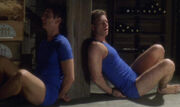
Tucker and Reed, after being robbed on Risa
While on shore leave on Risa , Tucker and Reed were robbed by two beautiful aliens who turned out to be morphs using their disguises to lure their victims. ( ENT : " Two Days and Two Nights ")
When Enterprise was captured by Silik and the Suliban , and Archer was transported to the future by Daniels , Tucker helped retake engineering , restore the timeline , and return Archer to his own time. Required to build quantum beacons , Tucker was forced to learn quantum engineering at a level beyond his training. ( ENT : " Shockwave ", " Shockwave, Part II ")
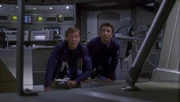
Tucker on the floor of the bridge of Enterprise with Reed
While attempting to discover the powers of an automated repair station Enterprise had entered, Tucker was transported off the station back to Enterprise in an effort to stop the investigation. He later discovered that the station was using humanoid lifeforms to power its computer. ( ENT : " Dead Stop ")
Tucker was affected by a black hole 's radiation, and became obsessed with fixing Archer's captain's chair . ( ENT : " Singularity ")
Tucker trained miners in self-defense on a planet the Klingons were pillaging. He befriended a young child on the planet, and gave him a tour of Enterprise . ( ENT : " Marauders ")
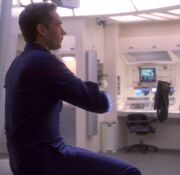
Tucker with a cloaked appendage
Tucker rescued Archer and Reed from a planet that had given them a death sentence, and modified a Suliban cell ship with a cloaking device in order to save them. While doing so, however, he accidentally "cloaked" his right forearm . ( ENT : " The Communicator ")
Tucker saved an alien princess, Kaitaama , from kidnappers, and had a brief romantic relationship with her during the rescue. ( ENT : " Precious Cargo ")
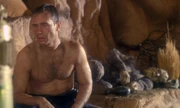
Tucker and Zho'Kaan on the moon's surface
Tucker became stranded on a barren moon with an Arkonian who had tried to shoot his shuttle down. At first, they tried to kill each other, but realized that the only way they could survive was to cooperate with each other. Zho'Kaan 's dehydration was causing cellular breakdown, which made using the transporter not an option. Tucker refused to leave him, and cared for him until a modified Arkonian shuttle rescued them. ( ENT : " Dawn ")
When three aliens who boarded Enterprise warned that a deadly neutronic wavefront was quickly approaching and the crew needed to take shelter to be protected from the storm's deadly radiation, Tucker suggested that the one heavily-shielded place on board that might suffice for the eight-day ordeal was the cramped quarters of the catwalk , the maintenance shaft that ran the length of each nacelle . While they were in the catwalk, alien intruders attempted to steal Enterprise , and Tucker helped drive them off. ( ENT : " The Catwalk ")
During a stop at a medical conference, Tucker met Feezal , Phlox's wife. Feezal became attracted to him and tried to seduce him, and when Tucker told Phlox about this, he was told by Phlox that he should have taken advantage of Feezal's offer. While assembling a neutron microscope Feezal delivered, Tucker bragged he could put back together just about any equipment he had ever met. ( ENT : " Stigma ") Later, Tucker and Reed discovered that a derelict ship Enterprise salvaged was from the future. Even the few papers he read on spatial geometry could not explain the ship's dimensions. ( ENT : " Future Tense ")
While investigating an alien ship, Tucker's body was invaded by an alien wisp that began to control his actions. Their plan was to take over the bodies of the crew and steal Enterprise . ( ENT : " The Crossing ")
The Vulcans and Andorians were again involved in a dispute over a planet, Weytahn . While Archer tried to mediate the dispute, Tucker, commanding Enterprise , stopped the ships of both sides from engaging in battle when he steered Enterprise between the two fleets, giving Archer time to settle the dispute. ( ENT : " Cease Fire ")
Tucker and Archer were unjustly sentenced to the penal colony of Canamar . A prisoner, Kuroda , took over the ship and enlisted Tucker and Archer's help in escaping. His plan was to transport off the ship to another he was meeting, and crash the ship along with the other prisoners and guards. Tucker and Archer foiled his plan, and were rescued by Enterprise . ( ENT : " Canamar ")
Tucker led an away team to rescue three Denobulan geologists from the planet Xantoras . The government had ordered all aliens to leave their world immediately, and Tucker had to persuade the geologists to leave. ( ENT : " The Breach ")
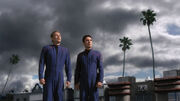
Reed and Tucker look for any sign that his sister might be alive in Xindi-devastated Florida
Tucker's encounter with the Vissians proved costly. The Vissians used a cogenitor , a third gender, to reproduce; these cogenitors were treated as an inferior class with no rights. After meeting with a cogenitor, Tucker found that it had the same mental capabilities as the other Vissians, and took it upon himself to convince the cogenitor he met to fight for her rights. He also secretly taught the cogenitor how to read, play go , and educated it about its rights as an individual. The cogenitor chose the name "Charles" for itself, in honor of Tucker. Later, it asked for asylum on Enterprise , which, after several meetings, was denied. Archer finally decided that to grant asylum would ruin any chance of Starfleet making successful trade with the Vissians. Several days later, Tucker was informed that the cogenitor had killed itself, and blamed himself for the suicide. ( ENT : " Cogenitor ")
Tucker was devastated to learn that his sister, Elizabeth , was killed in the Xindi attack on Earth . ( ENT : " The Expanse ")
The Xindi mission [ ]

Tucker's sleepless nights begin
Tucker became bitter after his sister's death, and was full of hatred and revenge. His mental state led to many sleepless nights. Phlox tricked Tucker into taking Vulcan neuro-pressure from T'Pol; this helped him sleep properly, and moved his relationship with T'Pol to another level. Tucker's first contact with the Xindi occurred at a mining camp where a Xindi, Kessick , was rescued. Kessick was killed in the escape, but gave the coordinates of the Xindi homeworld before he died. ( ENT : " The Xindi ")

Commander Tucker in 2153
An away team consisting of Captain Archer, T'Pol, Lieutenant Reed, and Ensign Hoshi Sato was endangered on the homeworld of the extinct Loque'eque race when a virus left on the planet mutated Archer, Reed and Sato into the lost species. When another alien race landed on the planet, determined to exterminate any of these species, Tucker led a MACO team to stop the alien exterminators and rescue the away team. ( ENT : " Extinction ")
Tucker and T'Pol tried to replicate trellium-D , a substance that would protect Enterprise from the Delphic Expanse 's deadly anomalies. The attempt ended in an explosion. ( ENT : " Rajiin ")
Tucker attempted to "rewrite the book on warp theory " once he realized the Cochrane equation wasn't constant in the Expanse, with spatial gradients destabilizing the warp field. Eventually, he succeeded, as he rerouted the system taps, compressing the antimatter stream before it entered the injectors , thus stabilizing the warp field. ( ENT : " Anomaly (ENT) ", " Similitude ")
Tucker was badly injured, ending up in a coma , due to a primary injector flare during an encounter with a polaric field . He was cloned using a mimetic simbiot in an attempt to harvest brain tissue from the clone in order to save his life. The clone, Sim , attempted to escape Enterprise to save his own life, but decided against it at the last minute and allowed Phlox to transplant the tissue even though it meant his death. ( ENT : " Similitude ")
After recovering a small craft in the Expanse with an unknown alien in it, Tucker determined that the alien was a test subject to see what effects the atmosphere would have on it. This was the first indication that an alien force was behind the Xindi and their attack on Earth. ( ENT : " Harbinger ")
After coming in contact with a Xindi-Insectoid ship, Tucker questioned Archer's ability to captain Enterprise after Archer had been infected with a toxin that made him believe he was the caretaker to the eggs of the Xindi-Insectoids, and was endangering the mission. Tucker led the crew in a mutiny to retake the ship from Archer before he could be cured. ( ENT : " Hatchery ")

Tucker during the Battle of Azati Prime
Tucker piloted a captured Xindi-Insectoid shuttle and discovered the location of the Xindi weapon . In the battle of Azati Prime , Enterprise took heavy damage and lost eighteen crewmen. Tucker was terribly affected, and it did not help when he had to compose letters to the families of the slain crewmembers, a task that reminded him of his sister's death. To make matters even worse for Tucker, he found it extremely difficult to forgive Degra , one of the Council members of the Xindi who had designed the Xindi weapon, and had a couple of tension-filled encounters with him, as Archer was trying to gain Degra's trust. Eventually, however, the experience of consoling others helped Tucker finally deal with Elizabeth's death. ( ENT : " Azati Prime ", " The Forgotten ")
Tucker helped steal the primary warp coil of an Illyrian ship to replace Enterprise 's after it was damaged in the Battle of Azati Prime. ( ENT : " Damage ")
After an accident using Xindi subspace corridors , Enterprise met its future counterpart. Enterprise 's counterpart was captained by Lorian , the son of Tucker and T'Pol. The crew of the future Enterprise helped Enterprise keep an appointment with Degra, so peace could be discussed. ( ENT : " E² ")

Tucker destroys one of the Delphic Expanse Spheres
Tucker played a large role in the final battle with the Xindi. He destroyed one of the spheres that disrupted the energy field that the Sphere-Builders , who were behind the Xindi attack, were using to help the Xindi; this gave time for Archer and the MACOs to board the weapon, destroy it and save Earth. ( ENT : " Countdown ", " Zero Hour ")
The return home [ ]
After traveling back in time to 1944 , Tucker was assaulted by Silik , who stole a shuttle . The time shift was part of the Temporal Cold War . Tucker and Reed returned to Earth to try and rescue Archer, but were captured by Nazis and their alien allies, the Na'kuhl . The Na'kuhl were trying to change history by helping the Nazis win World War II . Fortunately, the plot was foiled, and the timeline was restored. ( ENT : " Storm Front ", " Storm Front, Part II ")
On returning home to a hero's welcome, Tucker faced heartbreak when he traveled to Vulcan and witnessed T'Pol 's marriage to Koss . ( ENT : " Home ")
In 2154 , the Augment crisis began. Dr. Arik Soong had genetically-engineered Human embryos; reaching adulthood, these Augments attacked a Klingon ship and killed the crew. When the Klingons demanded justice, Enterprise was dispatched to capture the Augments, with Soong on board to help them. After T'Pol was captured by the Orions and sent to a slave market, Tucker was able to decode a neural restraint and free her. He discovered that the Augments had captured Cold Station 12 , where other Augment embryos were stored, and took part in the operation to retake the Augments' ship and stop the threat. ( ENT : " Borderland ", " Cold Station 12 ", " The Augments ")
Following the destruction of Earth's embassy on Vulcan, Archer and T'Pol searched for the Syrrannites , who were believed to be the perpetrators, on Vulcan's surface, leaving Tucker temporarily in command of Enterprise . With help from Ambassador Soval , Tucker uncovered a conspiracy in which the Vulcan High Command attempted to cover-up the bombing as well as launching a preemptive strike against the Andorians, who they believed had constructed a devastating weapon based on Xindi technology. Tucker warned Shran , and participated in the engagement between the Vulcan and Andorian fleets. ( ENT : " The Forge ", " Awakening ", " Kir'Shara ")
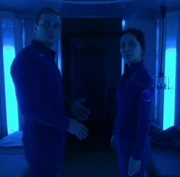
Under the control of Organians , Hoshi Sato and Trip Tucker discover they are being watched
Tucker was infected with a silicon-based virus while part of a landing party on a planet's surface, looking for salvage amongst Klingon waste. Although Tucker initially died due to the virus, he was resurrected by two Organian observers, who were watching the crew's reaction to the virus. ( ENT : " Observer Effect ")
On November 12 , 2154, Enterprise was escorting a group of Tellarites to a conference with the Andorians to settle long-standing disputes. However, the Andorian ship was destroyed by what appeared to be a Tellarite ship. Among the survivors was Shran. The Tellarites denied any involvement, and then Enterprise was attacked by an Andorian ship. In reality, the ship was a Romulan drone ship piloted by a neural interface . This was an attempt by the Romulans to start war among potential allies. Tucker and Reed transported over to the ship and discovered that it was unmanned. They attempted to sabotage the ship and after doing so, ejected out into space where they could be transported back aboard Enterprise . Tucker built a telepresence unit for Enterprise in order to prepare it for battle against the Romulan drone ships. The Romulans' plot was foiled with the cooperation of Humans, Tellarites and Andorians; this would be the foundation for a federation of planets . ( ENT : " Babel One ", " United ", " The Aenar ")
Tucker transferred off Enterprise to Columbia NX-02 due to his feelings for T'Pol. He later returned to Enterprise to help them deal with the Klingons, who faced extinction due to a genetic virus caused by their experiments with Augment DNA . ( ENT : " Affliction ") Tucker transferred back to Enterprise permanently shortly after an encounter with Orion females who attempted to take over the ship by influencing the minds of the male crew; he proved to be immune due to his new-found psychic bond with T'Pol. ( ENT : " Bound ")
Terra Prime , a xenophobic terrorist faction led by John Frederick Paxton , threatened to disrupt a conference to form a coalition of planets , and had created a clone using the DNA of Tucker and T'Pol, with the plan of using the child to stir anti-alien feelings. When Tucker and T'Pol tried to infiltrate Terra Prime, they were captured and taken to a secret base on Mars . From there, Paxton threatened to attack Starfleet Headquarters with a laser cannon unless all aliens left the Sol system . Tucker tried to sabotage the weapons system, but was discovered and thrown into a cell. He escaped and was able to meet with a team from Enterprise who had come to rescue him and T'Pol. Tucker led them to Paxton's complex where they were able to deactivate his weapon and end his threat. Sadly, the child, whom T'Pol named " Elizabeth " after Tucker's deceased sister, died due to a flaw in the procedure used in her creation. It was initially believed that the causa mortis was an incompatibility between the Vulcan and Human DNA, a hypothesis Doctor Phlox shortly afterward determined to be wrong. ( ENT : " Demons ", " Terra Prime ")
Later career and ‘death’ [ ]
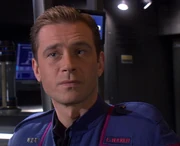
A holographic representation of Commander Charles Tucker III in 2161
Tucker continued serving as chief engineer aboard Enterprise until 2161 , when the ship was scheduled to be decommissioned prior to the signing of the Federation Charter . En route to Earth to attend the founding ceremony of the alliance that would give birth to the United Federation of Planets , Enterprise made a detour to Rigel X to rescue Shran's daughter, Talla . Tucker participated in the rescue operation. Knowing Archer's importance to the upcoming ceremony, he attempted to persuade Archer to remain aboard Enterprise , as it was safer, but Archer insisted on joining the mission. Ironically, it was Tucker himself who was nearly killed on the mission when the catwalk he was on was shot out from under him. Fortunately, Archer was there to save him, and the mission was successful.
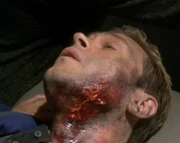
A holographic representation of Tucker's final moments
Unfortunately, according to Starfleet’s official history, the victory ultimately came at the cost of Tucker's life. Shortly after Enterprise left Rigel X, Talla's abductors somehow managed to board the ship. When the alien trespassers threatened Archer, it is believed Tucker quickly thought up a plan to lure the aliens away from Archer. Despite orders from Archer to remain quiet, he insisted and persuaded one of the aliens to render Archer unconscious. With his captain safe and no longer in the way, Tucker lured the aliens away to a nearby plasma junction, which he claimed was a communications system which he would use to contact Shran in order to bring him to the aliens. With the intruders fooled, Tucker rigged the junction to explode, killing the alien trespassers. It is believed Tucker was also critically injured in the explosion and he ultimately died, having sacrificed himself for his captain. ( ENT : " These Are the Voyages... ")
Tucker's legacy [ ]
Following Tucker's sacrifice, Archer ultimately went on to be an instrumental figure in the formation of the United Federation of Planets.
In 2370 , Commander William T. Riker of the USS Enterprise -D used historical records of the events surrounding Tucker's death in a holodeck simulation to help sort through a personal moral crisis related to the USS Pegasus , a ship he once served on. The historical events used in the program included the mission to Rigel X to save Shran's daughter and Talla's former captors storming Enterprise . After seeing Tucker give his life to save Captain Archer, disobeying Archer's orders in the process, Riker decided he, too, would do the right thing regardless of the cost. ( ENT : " These Are the Voyages... ")
Ensign Brad Boimler mentioned Tucker in 2380 , comparing him to Lieutenant Jet Manhaver , specifically, that Manhaver was "like a Kirk sundae with Trip Tucker sprinkles ." ( LD : " Cupid's Errant Arrow ")
Personal interests [ ]

Tucker often looked forward to the days when Chef served pecan pie
Tucker had many likes and interests, ranging from personal to professional, especially in the engineering field. He often enjoyed studying alien engines, or even certain Human ones. In 2151 , Tucker was in awe of the Vulcan ship Ti'Mur and its ringed-engine drive. Unfortunately, Vulcan engine schematics were classified. Later that year, Tucker was interested in visiting the legendary Coridanite Fleet Yards, rumored to build starships capable of warp 7 . Other alien species with engines he was particularly amazed by were those of Zobral's species and the Vissians . ( ENT : " Breaking the Ice ", " Shadows of P'Jem ", " Desert Crossing ", " Cogenitor ")
Tucker was also interested in seeing the ECS Horizon 's warp core in hopes that the rumors that Zefram Cochrane had personally signed the inside of the frame were true. ( ENT : " Horizon ")
Tucker's favorite dessert was pecan pie . After a long day of work, Tucker said it was all worthwhile to come to the mess hall for a slice of it. He even suggested that T'Pol might like it. ( ENT : " Breaking the Ice ") On a separate occasion, he noted that his favorite dessert was key lime pie . ( ENT : " Similitude ")
Tucker's favorite food was pan-fried catfish . His mother made it perfectly and if anyone asked his favorite food, Tucker would say that she would "give you the recipe for pan-fried catfish and not let you leave until you promised to cook it right." ( ENT : " Silent Enemy ", " Dead Stop ", " These Are the Voyages... ")
Another of Tucker's favorite foods were Georgia peaches . Before leaving for the Delphic Expanse in 2153 , he made sure to take a crate of them aboard, and also suggested that T'Pol might enjoy them as well. ( ENT : " Extinction ")
Tucker occasionally watched water polo with Captain Archer, who seemed to have gotten him hooked on the sport as he didn't like it so much at first. ( ENT : " Vox Sola ", " The Seventh ") He enjoyed playing the harmonica in his spare time as well. ( ENT : " Precious Cargo ")
Another of Tucker's interests was ancient cinema . Upon signing on to Enterprise , he suggested they have a " movie night ," which often served to help crew morale. Although, since he chose the movies, some of the crew often complained about his selecting what seemed like the same movie plots over and over, often from the middle of the 20th century . ( ENT : " The Catwalk ", " Cogenitor ")
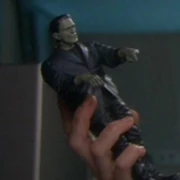
Frankenstein's monster figure
Tucker's favorite film was Frankenstein and its two sequels, Bride of Frankenstein and Son of Frankenstein , which he deemed the "three greatest horror movies ever." He even kept an action figure of Frankenstein's monster in his quarters. ( ENT : " Horizon ", " These Are the Voyages... ")
Hailing from Florida, Tucker went diving in the ocean before he joined Starfleet . He kept a picture of himself scuba diving in his quarters, as well an old-style skin-diving suit helmet. ( ENT : " These Are the Voyages... ")
Some of the ancient books (on paper ) Tucker kept copies of in his quarters included Gulliver's Travels , The Gorilla Hunters , and A Pictorial History of the American Indian . He was apparently an experienced player of an ancient Chinese game called go . ( ENT : " Cogenitor ")
Personal relationships [ ]
Friendships [ ].
Tucker's initial job as first officer was to be the liaison between the captain and the crew. Even though the position was later given to Sub-Commander T'Pol, Tucker was still well-liked by most of his shipmates.
On the first day of Enterprise 's voyage, some friends in the mess hall invited him to sit with them for dinner, but he reminded them that he had plans: dinner with Captain Archer in the captain's mess . ( ENT : " Broken Bow ")
Jonathan Archer [ ]

Tucker pours Archer a drink in memory of Henry Archer
The two officers met when Jonathan Archer was a commander in the NX Program and Tucker was a lieutenant on Captain Jefferies' engineering team. After the first NX prototype, the NX-Alpha , was destroyed and the project was going to be canceled, Tucker and Archer teamed up with Commander A.G. Robinson to save the program. They launched the NX-Beta , the second NX prototype, without permission, and were ultimately successful. ( ENT : " First Flight ")
Tucker and Archer began to develop a strong bond of friendship, enduring harsh survival training in the Australian Outback together and saving each other's lives many times. During an Omega training mission on Titan , Tucker's EV pack froze up and he got nitrogen narcosis. He tried to remove his helmet, but Archer ordered him to keep it on. Later, in 2152 , Archer saved a delirious Tucker from heatstroke when they were stranded in the Torothan desert. Likewise, Tucker rescued and saved Archer's life quite a few times. He saved him from execution on a pre-warp alien planet, after Archer and Lieutenant Malcolm Reed tried to find a communicator left behind. Tucker also rescued Archer from bounty hunters who wished to turn Archer over to the Klingons . ( ENT : " Desert Crossing ", " The Communicator ", " Bounty ")
Tucker was always there when the captain needed cheering up. When Archer was depressed about Enterprise 's botched first contact with the Kreetassans , his chief engineer lightened the mood with a data module of the Stanford versus Texas water polo match. They ate their meals together, and shared many interests. ( ENT : " Vox Sola ")
This did not mean that their relationship was always stress-free. Tucker once interfered with the Vissians' customs; the Vissians used a third gender, called a cogenitor , for reproduction, and Tucker persuaded one such being that it was being treated unfairly. Archer was furious, and told Tucker that he was in no position to judge the fairness of the Vissians' culture. When the cogenitor was later denied asylum on Enterprise and committed suicide , Archer told Tucker that he hoped he had learned his lesson about interfering. ( ENT : " Cogenitor ")
Malcolm Reed [ ]
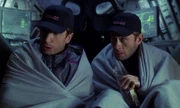
Tucker and Reed bond
Tucker and Lieutenant Malcolm Reed formed an unlikely friendship. They were polar opposites: Reed was stuffy and all work as opposed to Tucker's zest for life. When the duo was stranded in a damaged shuttlepod for several days, they initially clashed, but discovered that they had more in common than they thought. At one point, Tucker even tried to sacrifice himself so that Reed would have a better chance of survival. Luckily, they were both rescued by Enterprise . ( ENT : " Shuttlepod One ")
Tucker and Reed shared a unique shore leave together on the pleasure planet Risa when the two went in search of fun at a Risian nightclub and picked up two beautiful aliens. The women turned out to be morphs who robbed them, not only taking their money, but also their clothes. Tucker and Reed managed to escape, but promised not to tell their fellow crewmembers about the incident. ( ENT : " Two Days and Two Nights ")
Hoshi Sato [ ]
Tucker was always jealous of how Ensign Hoshi Sato was able to hear only a few words of a language and suddenly speak it fluently. He and Sato got to know each other a little better while stuck in the decon chamber for several hours while infected with a silicon-based virus in 2154 . ( ENT : " Observer Effect ")
Tucker claimed that Sato was his wife when Enterprise was boarded by Ferengi raiders. ( ENT : " Acquisition ")
Tucker was named after his father, Charles Tucker, Jr. , and his grandfather, Charles Tucker, Sr. Both of his parents were alive as of 2161 , living in Mississippi . ( ENT : " Home ", " These Are the Voyages... ")
His grandma was known for doling out at least one piece of advice to her grandson during his lifetime, specifically to " never to judge a species by their eating habits. " ( ENT : " Broken Bow ")
Tucker practiced the two-step with his brother for weeks in preparation for a school dance. ( ENT : " Fusion ")
Tucker stated in 2151 that his grandfather saw the first transmissions from Terra Nova as a child , sometime around 2078 . ( ENT : " Terra Nova ")
Also in 2151, Tucker had a nephew in the fourth grade , whose class sent drawings to the Enterprise crew. ( ENT : " Breaking the Ice ")
Elizabeth "Lizzie" Tucker [ ]

A photo Tucker kept of himself and his sister, Elizabeth
Tucker was very close to his younger sister, Elizabeth ("Lizzie"), and was traumatically affected by her death in the Xindi attack in 2153 . ( ENT : " The Expanse ", " The Xindi ") He later recalled he had been so profoundly affected by her death there were times when he just wanted to close up and retreat inside himself. ( ENT : " Daedalus ")
When Crewman Jane Taylor was killed in the Battle of Azati Prime, Tucker found it was his responsibility to write a letter to her family. While writing it, he kept transferring his feelings of loss from Lizzie to Jane, and mentioned how she "died too young." Eventually, Tucker was able to overcome this and finish the letter. ( ENT : " The Forgotten ")
Elizabeth [ ]
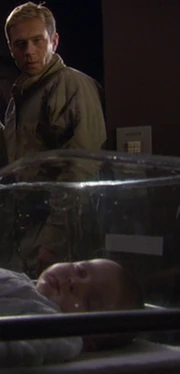
Seeing his daughter

Mourning the baby's death
Upon learning about the existence of his and T'Pol's daughter, Trip was initially surprised, but eventually warmed to the idea, noting that his father had always wanted a granddaughter. He demanded to see her when Paxton informed him the child was safe.
Later, after being informed of little Elizabeth's terminal genetic condition, he approved T'Pol's choice to name the baby Elizabeth after his sister, saying she would have liked that. He stood with T'Pol by Elizabeth's incubator until the child's death, after which he mourned her with tears. ( ENT : " Terra Prime ")
Romance [ ]
Natalie [ ].
Before Enterprise was launched, Tucker was dating a woman named Natalie , from Florida. He was unable to say goodbye to her before the ship launched, but wished he would have gotten the chance to, face to face, after receiving a Dear John letter . He said maybe he would get a chance to, when Enterprise headed home after being rendered defenseless by a mysterious alien vessel. ( ENT : " Silent Enemy ")
In mid- 2151 , Tucker had a brief, unintentional sexual encounter with a Xyrillian female named Ah'len , which resulted in Tucker's inadvertent impregnation. Ah'len assumed that Tucker would be physically incompatible with her people. Tucker became the first Human male to become pregnant, as well as the first known Human participant in interspecies reproduction . ( ENT : " Unexpected ")
Tucker had a brief encounter with the Kantare female Liana . ( ENT : " Oasis ")
Kaitaama [ ]
Tucker had a brief encounter with Kaitaama , the newly-selected First Monarch of Krios Prime . He rescued her from kidnappers, and during the course of the escape, they became romantically involved. ( ENT : " Precious Cargo ")
Amanda Cole [ ]
Corporal Amanda Cole became attracted to Tucker, who had given Vulcan neuro-pressure to her because of headaches. Cole attempted to tell T'Pol that she had a great deal in common with Tucker and was very fond of him. ( ENT : " Harbinger ")

A neuro-pressure session
When his sister died in the Xindi attack on Earth in 2153 , Tucker experienced difficulty sleeping due to nightmares about the event. He was assisted in recovering from these difficulties by Sub-Commander T'Pol's application of Vulcan neuro-pressure . Over the course of their neuro-pressure sessions, Tucker began to develop feelings for T'Pol. They finally admitted it to one another in January of 2154 , though T'Pol later denied her emotions. ( ENT : " The Xindi ", " Harbinger ", " E² ")
After Enterprise was heavily damaged at Azati Prime in February 2154, Tucker threw himself into repairing the ship, going two straight days with no sleep until Doctor Phlox forced him to take a few hours' rest. He was haunted by visions of Crewman Jane Taylor, a member of his engineering team who had died in the battle with the Xindi. Tucker was supposed to be writing a letter of consolation to her parents, but was unable to do so, as Jane reminded him so much of his sister. Finally, with T'Pol's help, Tucker was able to work his way through the grief he felt concerning both his sister and Crewman Taylor. ( ENT : " The Forgotten ")
When Enterprise returned to Earth, Tucker accompanied T'Pol on a visit to Vulcan and her mother, T'Les . While on Vulcan, he was forced to put his emotions aside and watch T'Pol marry Koss for political reasons. Even when Koss later divorced T'Pol, Tucker was torn as she showed no interest in rekindling their relationship. ( ENT : " Home ", " Kir'Shara ")

T'Pol kissing Tucker in December of 2154
In November 2154, Tucker decided that his unrequited feelings for T'Pol were interfering in the performance of his duties. He left Enterprise , accepting a request from Captain Hernandez to join the crew of Columbia NX-02 , which was launching behind schedule due to engine trouble. With his help, the ship was ready to go in a few days. ( ENT : " The Aenar ", " Affliction ") Shortly after, Tucker transferred back to Enterprise , at the same time as discovering that he and T'Pol shared a psychic bond as a result of their previous mating – which he stated wasn't that big of a deal, although he did insist until she admitted that she wanted him back. ( ENT : " Bound ")
In January 2155 , Tucker and T'Pol discovered that they had a daughter that was created with their stolen DNA by Terra Prime . ( ENT : " Demons ") After rescuing her from Terra Prime, they decided to call her " Elizabeth ", after Tucker's late sister, but they were heartbroken when it was discovered that there was a flaw in the procedure used in creating Elizabeth, and she died. ( ENT : " Terra Prime ")
Alternate realities and timelines [ ]
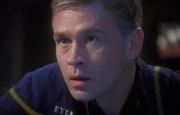
Captain Tucker in 2165
In an alternate timeline where Jonathan Archer was relieved of command in 2153 due to an infection by interspatial parasites , T'Pol became the captain of Enterprise. She turned over command to Tucker in 2156 , when the ship reached Ceti Alpha V with the last surviving Humans . He was killed in 2165 , when a Xindi assault destroyed Enterprise 's bridge. ( ENT : " Twilight ")
In a different alternate timeline where Enterprise was stranded in the year 2037 , Tucker married T'Pol in a traditional Vulcan ceremony; it took Tucker weeks to learn how to pronounce the vows. Afterward, they honeymooned in Cargo Bay 3, which had been filled with sand gathered from an asteroid and a palm tree manufactured by Tucker. They had a son named Lorian , but unfortunately, Tucker died when his son was only fourteen years old. ( ENT : " E² ")
Memorable quotes [ ]
" I assume you were watching the attack – calculating the blast yields. Boy, you must have been pretty damned excited. I mean, that beam cut one hell of a swath through Florida. That's the name of one of the places you destroyed, Florida. Did you actually see the cities burning, the houses, the people being vaporized? You know, I had a sister there… "
" Every time I start, I hear myself saying what a fine young woman she was – how smart and full of potential. And I realize, I'm not thinking about Taylor at all, I'm thinking about Elizabeth . "
" You can all go straight to Hell! "
Key dates [ ]
- 2121 : Born in Panama City , Florida on Earth to Charles Tucker II and Mrs. Tucker
- 2139 : Enlisted in Starfleet
- 2151 – 2161 : Chief engineer of the Enterprise NX-01
- 2154 : Temporarily leaves Enterprise to become chief engineer of the Columbia NX-02
- 2161 : Dies by sacrificing himself to save Jonathan Archer
Appendices [ ]
Appearances [ ].
- " Broken Bow "
- " Fight or Flight "
- " Strange New World "
- " Unexpected "
- " Terra Nova "
- " The Andorian Incident "
- " Breaking the Ice "
- " Civilization "
- " Fortunate Son "
- " Cold Front "
- " Silent Enemy "
- " Dear Doctor "
- " Sleeping Dogs "
- " Shadows of P'Jem "
- " Shuttlepod One "
- " Rogue Planet "
- " Acquisition "
- " Detained "
- " Vox Sola "
- " Fallen Hero "
- " Desert Crossing "
- " Two Days and Two Nights "
- " Shockwave "
- " Shockwave, Part II "
- " Carbon Creek "
- " Minefield "
- " Dead Stop "
- " A Night in Sickbay "
- " Marauders "
- " The Seventh "
- " The Communicator "
- " Singularity "
- " Vanishing Point "
- " Precious Cargo "
- " The Catwalk "
- " Cease Fire "
- " Future Tense "
- " Canamar "
- " The Crossing "
- " Judgment "
- " Horizon "
- " The Breach "
- " Cogenitor "
- " Regeneration "
- " First Flight "
- " The Expanse "
- " The Xindi "
- " Anomaly (ENT) "
- " Extinction "
- " Impulse "
- " The Shipment "
- " Twilight "
- " North Star "
- " Similitude "
- " Chosen Realm "
- " Carpenter Street "
- " Proving Ground "
- " Stratagem "
- " Harbinger "
- " Doctor's Orders "
- " Hatchery "
- " Azati Prime "
- " The Forgotten "
- " The Council "
- " Countdown "
- " Zero Hour "
- " Storm Front "
- " Storm Front, Part II "
- " Borderland "
- " Cold Station 12 "
- " The Augments "
- " The Forge "
- " Awakening "
- " Kir'Shara "
- " Daedalus "
- " Observer Effect "
- " Babel One "
- " The Aenar "
- " Affliction "
- " Divergence "
- " Terra Prime "
- " These Are the Voyages... " (hologram)
- VST : " Holograms All the Way Down " (hologram)
Background information [ ]
Charles Tucker III was played by Connor Trinneer in all ninety-eight episodes of Star Trek: Enterprise . Adam Taylor Gordon played eight-year-old Tucker in a flashback scene in " The Xindi " (though that boyhood version of the character was scripted to be twelve years old, rather than eight) as well as Young Sim in " Similitude ".
The character of Tucker was invented by Star Trek: Enterprise creators and Executive Producers Rick Berman and Brannon Braga . Regarding how the character was conceived, Berman noted, " We picked a young country boy. " ( Star Trek: The Magazine Volume 2, Issue 7 , p. 20) Braga added, " We knew we wanted a southern guy who is a brilliant engineer but who doesn't have a clue as to how to handle himself with alien races. " ( Star Trek: The Magazine Volume 2, Issue 9 , p. 21)
Tucker's nickname was initially planned to be "Spike". ("Broken Bow" audio commentary , ENT Season 1 DVD ) At one early stage, he was also intended to hold the rank of lieutenant. A character description of Tucker was meanwhile written into the series bible for Star Trek: Enterprise , referring to him as having the nickname "Spike" and the rank of lieutenant. The document elaborated by describing him thus; " Chief Engineer. Early 30's. A Southerner who enjoys using his 'country' persona to disarm people. He has an offbeat, often sarcastic sense of humor. Although Spike is a brilliant engineer and an outstanding officer, he has very little first-hand experience with alien cultures, and he's often a 'fish out of water' when dealing with new civilizations. " While Tucker's nickname was still to have been "Spike" though his rank had changed to commander, a character breakdown sheet that Paramount sent to talent agents, upon seeking an actor to assume the role, largely matched this text from the series bible, apart from a couple of formatting tweaks. [2] However, the series bible went further, elaborating, " As a young man, he spent time deep sea diving in the Florida Keys, working on an ocean reclamation project. Bold and fearless, this thrill-seeker didn't stop there. His skills at working in a hostile environment, with no gravity, dependant on artificial life-support, would eventually lead to a career in Orbital Engineering, building starships at Utopia Planetia, where he earned a reputation as a trouble-shooter who would take on challenges that most engineers think impossible […] Spike is a part of our 'troika' [along with Archer and T'Pol]. "
Since there was a character on Buffy the Vampire Slayer with the name "Spike", this ENT character's nickname was altered before series pilot " Broken Bow " first aired. The change of nickname was just before "the very end" (in Brannon Braga's words) of the development process. (" Broken Bow " audio commentary , ENT Season 1 DVD / Blu-ray ) The nickname was changed to "Charlie", and the alteration was listed as one of six revisions of character names in a one-page "script note" at the start of the final draft teleplay of "Broken Bow" (the page was dated 1 May 2001 ).
In the revised final draft script of "Broken Bow" (dated 11 May 2001), the notion of this character's name being the third consecutive iteration of "Charles Tucker" was not yet established (he was still referred to as having the nickname "Charlie"). When introduced in the same teleplay, he was characterized as being in his "early 30's." The script went on to comment, " [He] is a Southerner who enjoys using his offbeat, often sarcastic sense of humor to disarm people […] He likes to get a rise out of people. " [3] Only later was the character given the full name "Charles Tucker III" and the nickname "Trip".
Immediately upon seeing Connor Trinneer audition to play Charles Tucker III, Rick Berman and Brannon Braga were impressed by him and believed he was right for the part. (" Broken Bow " audio commentary , ENT Season 1 DVD / Blu-ray )
The role of Tucker ultimately came down to Trinneer and another actor, Eric Close. Close was the studio's preferred choice, due to his work on the short-lived CBS series Now and Again , but Braga preferred Trinneer, who ultimately won the role. ( To Boldly Go: Launching Enterprise )
He found that an early challenge of portraying Tucker was dealing with all the technobabble the role required. ( Star Trek: The Magazine Volume 2, Issue 7 , p. 20)
The way Tucker was depicted was obviously influenced by the casting of Connor Trinneer. Regarding how the actor made an impact on the character, Brannon Braga explained, shortly after ENT Season 1 began, " Connor Trinneer is so […] much funnier than we thought he would be. And he's funnier not when he's making a wisecrack, but when he's put in uncomfortable situations, which we didn't know until he got the role. " ( Star Trek: The Magazine Volume 2, Issue 9 , p. 22)
Charles Tucker III was an early favorite ENT main character of the writing staff. Shortly following the start of the first season, Brannon Braga commented, " I think now we're finding, at least early on, that Trip is really a character that's popping out and with whom we're really having a lot of fun. " ( Broken Bow , paperback ed., p. 253)
In fact, Brannon Braga continued to approve of how Tucker further developed. Following ENT Season 2 , Braga stated, " It's fun to put Trip into awkward situations. You can't go wrong with him because Connor Trinneer's such a talented actor. " ( Star Trek: Communicator issue 145 , p. 26) Concerning how the character is portrayed in ENT Season 3 , Braga pointed out, " Trip embodies the idea of people who lost people back on Earth; he's a microcosm of that. " ( Star Trek: Communicator issue 151 , p. 33)
Ultimately, Rick Berman was extremely pleased with Connor Trinneer's portrayal of Tucker. " As the years went by, he just got better and better, " Berman enthused. (" Broken Bow " audio commentary , ENT Season 1 DVD / Blu-ray )
Apocrypha [ ]
Despite the events depicted in "These Are The Voyages…", Charles Tucker III continues – alive and well – in the Pocket Books " relaunch " of Star Trek: Enterprise .
As teased at in Andy Mangels ' and Michael A. Martin 's Last Full Measure , the Enterprise novel The Good That Men Do (also by Mangels and Martin) reveals Tucker's "real" fate. In the novel, an imminent threat forces Tucker to ally himself with Section 31 in order to prevent a Romulan attack on the soon-to-be-formed Coalition of Planets . With the help of Archer, Malcolm Reed and Doctor Phlox , Tucker fakes his own death in a manner similar to what is shown in the Enterprise finale, only six years earlier. With his life on Enterprise behind him, Tucker infiltrates Romulan space to prevent interstellar war. This storyline continues in Mangels' and Martin's Kobayashi Maru .
In addition to upgrading Tucker's status from dead to alive, the novels also expand upon the engineer's background. In The Good That Men Do , Tucker's family life is revealed, with scenes involving his parents Charles "Charlie" and Elaine "Gracie" Tucker. The book also mentions Tucker's brother Albert and Albert's husband, as well as provides him with a middle name: Anthony. The novel Last Full Measure depicts an aged Tucker, mentoring a young Larry Marvick , designer of the USS Enterprise (NCC-1701) , and, in the final chapter, making his first visit to the Starfleet War Memorial at the same time as 9-year-old Sam and 5-year-old Jimmy Kirk .
External links [ ]
- Charles Tucker III at StarTrek.com
- Charles Tucker III at Memory Beta , the wiki for licensed Star Trek works
- Charles Tucker III at Wikipedia
- 2 ISS Enterprise (NCC-1701)
Chase the Midnight Sun: Iceland and Canada tours available now!

Hiking Vs Trekking
Learn the difference between hiking and trekking.
- hiking vs trekking
- Benefits of hiking & trekking
- Beginner's guide to hike
EQUIPMENT LIST
Recommended tours, related blog posts.

Trekking and hiking are oftentimes used as synonyms, but is that correct? If you can’t answer with certainty, continue reading. Learn about hiking vs trekking and back up your enthusiasm for the outdoors with knowledge of the terms.
Hiking and trekking , two activities that most adventurers deeply enjoy. The two terms are used online interchangeably, as though it’s the same thing. But is it?
Not at all! Turns out, these are two very different activities. To clear things up, we crafted this hiking vs. trekking guide. In this guide, we’ll cover:
THE DIFFERENCE BETWEEN HIKING AND TREKKING
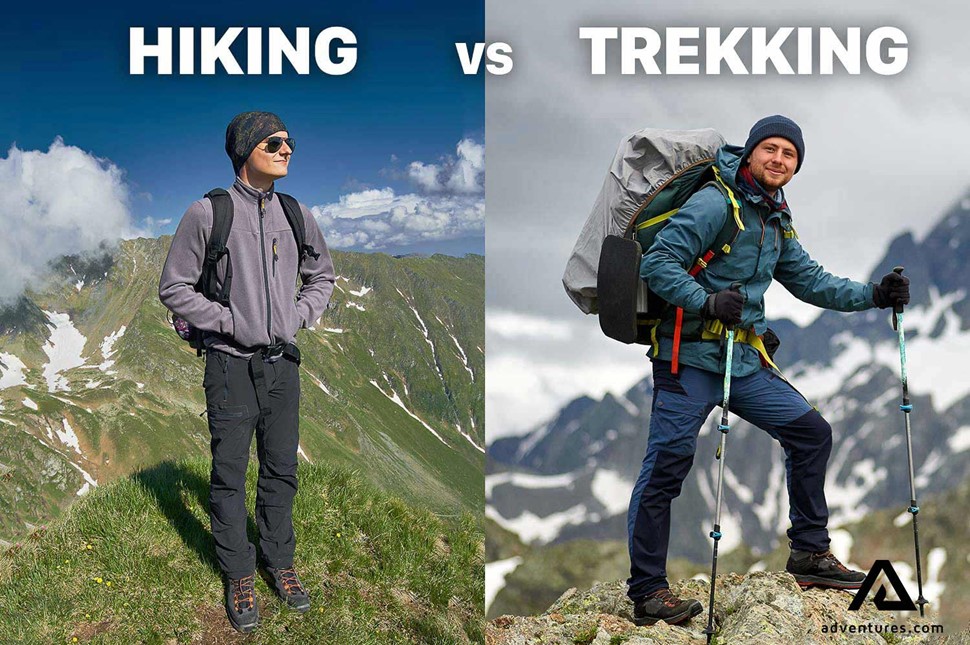
Hiking involves a long energetic walk in a natural environment on hiking trails or footpaths for a day or overnight.
Trekking involves a long vigorous hike in wild natural environment for multiple days. It can be done off hiking trails.

WHAT ARE THE HEALTH BENEFITS OF HIKING AND TREKKING?
As well as fun and riveting, hiking and trekking can improve your mental and physical health. Here are just a few benefits of hiking and trekking:
1. IT LOWERS THE RISK OF HEART DISEASE AND IMPROVES YOUR BLOOD PRESSURE
Hiking and trekking are both amazing for your health!
A study conducted by the CD C recommends that you walk at least an hour a day, five days a week. This reduces the risk of you having a stroke in half! Hiking and trekking regularly improves your heart and blood pressure, minimizing the chance of stroke.
Keep that blood pumping!
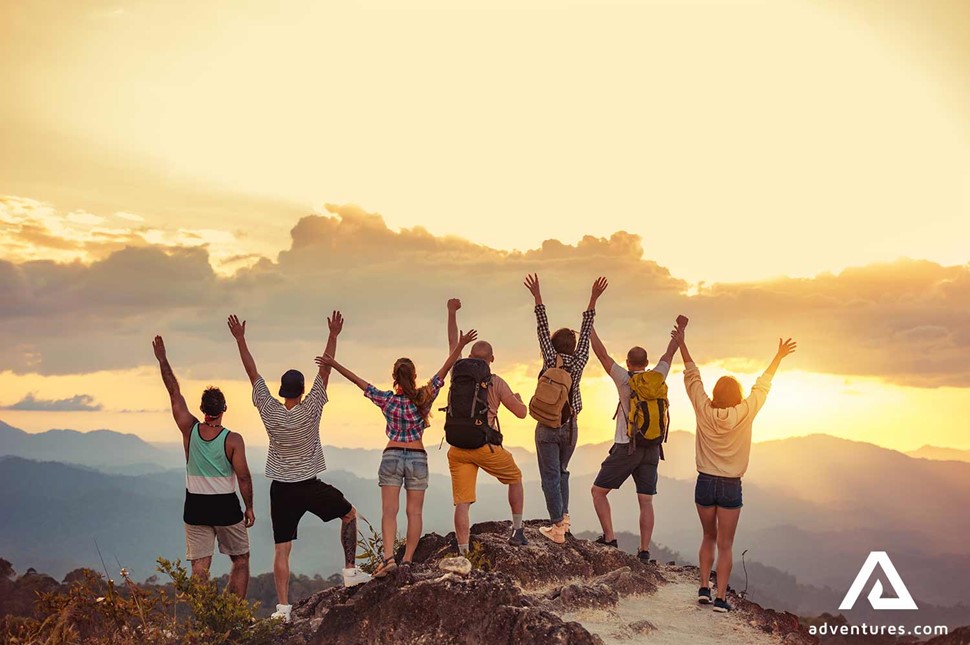
2. BETTER OVERALL FITNESS.
These activities do amazing things to your muscles. Build up strength in your thighs, lower leg muscles, hip muscles and hamstrings. It also builds your endurance. Hiking and trekking are both weight-bearing exercises, which build up bone density. Trekking also boosts your core strength as you hike with a heavy backpack.
The more you do, the more your overall strength and fitness improves.
3. IMPROVES YOUR MENTAL HEALTH.
Get away from the stress of everyday life and escape to the outdoors. Stress, depression and anxiety have a way of building up when you’re cooped up indoors too long. Hitting the trail helps to put your life in perspective and take your mind off your worries.
The world around you has a way of demanding your attention, which can ease any stress you may have built up.

4. HIKING AND TREKKING BURNS CALORIES.
Looking to lose weight? Or tone your muscles? Forget the gym and hit the trail instead.
Hiking burns between 440 and 550 calories per hour according to Livestrong research . Imagine how many calories will an overnight hike or a week-long trek burn. Burning calories helps you lose weight and tone your muscles.
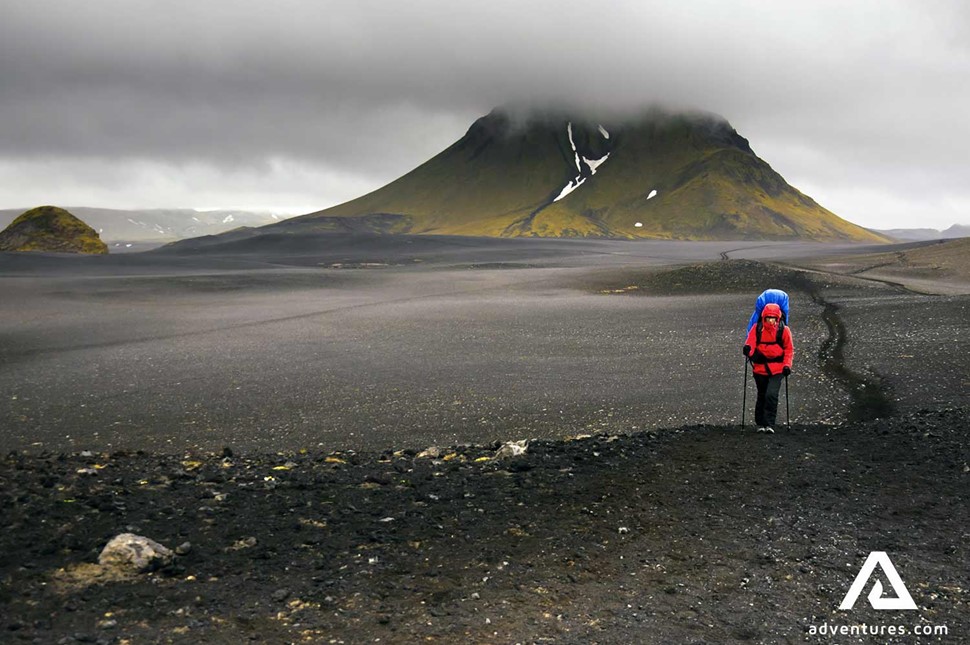
5. IT MAKES YOU CREATIVE.
On top of all the physical and mental boosts, hiking and trekking can also make you more creative. It’s true! Spending time outdoors and soaking all the Vitamin D from the sunlight can improve your mind. Vitamin D, “the sunshine vitamin,” increases attention span, and improves our ability to focus. Put a creative spin on our problem-solving skills.
Vitamin D is also great for maintaining healthy bones and teeth, supporting your immune system and boosting cardiovascular health.
BEGINNER'S GUIDE TO HIKING: WHERE DO I START?
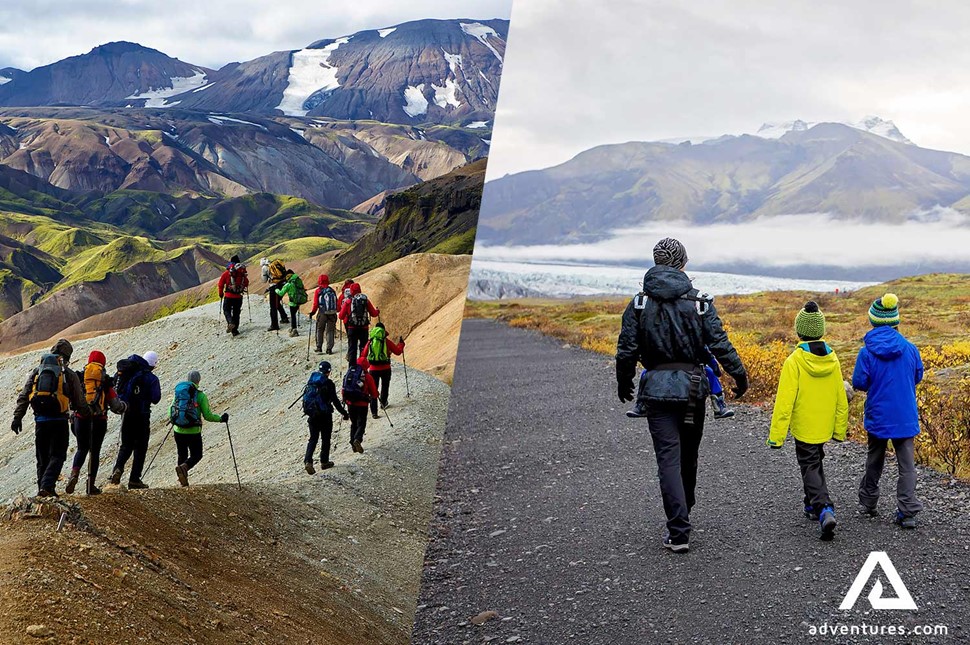
Convinced you need to do more hiking? Here are a few tips on where to start:
- Start with day hikes. If you want to get out there more, start with day hikes. Spend an afternoon strolling around your local park, or drive to the closest forest for an afternoon hike. Make this your routine and increase the length and amount of hikes you take over time.
- Join your local hiking community. While hiking on your own can be very inspirational and spiritualizing, it often gives very little motivation to get out there again, especially on longer hikes. By joining your local hiking community, you’ll meet like-minded people, who will hike with you and motivate you to keep on hiking.
- Go on an overnight hike. Grab a friend and go on an overnight hike with a tent and a sleeping bag. Test your physical condition by hiking for 5 hours and see if you’re ready to try trekking.
- Get proper hiking boots . If you feel like longer forms of hiking are for you, get some proper hiking boots, a durable tent and a warm sleeping bag with pad. Your hiking boots should be waterproof with a good sole and ankle support. Properly wear them in before a long-distance hike.
Go on a trek . Once you’ve been on a few overnight hikes and got the necessary hiking gear, go on a multi-day trek . Join one of our awesome hiking tours exploring the Icelandic Highlands .
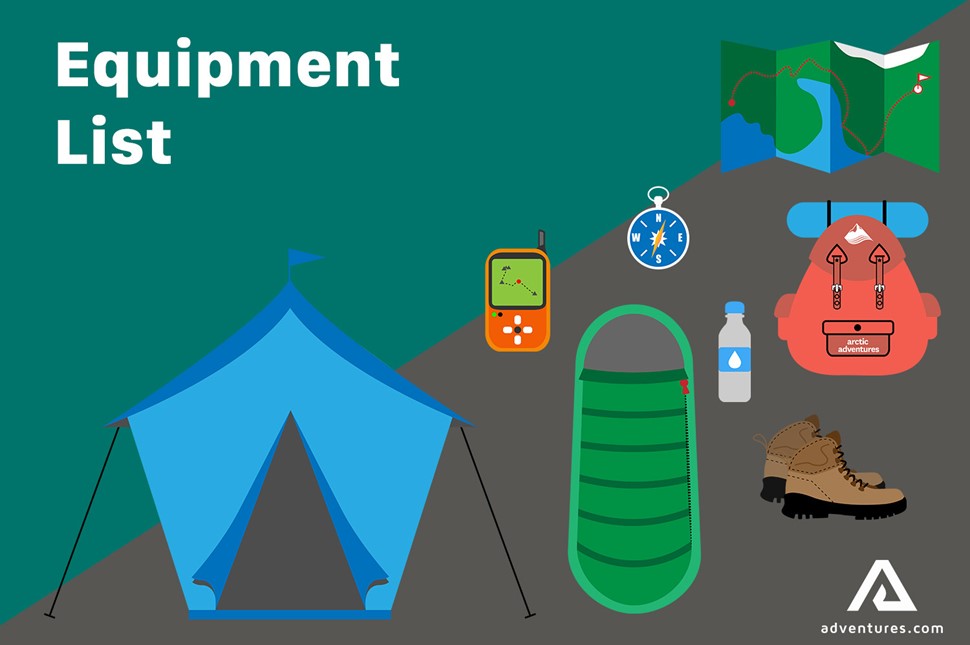
Good quality hiking and trekking equipment is essential. High-quality equipment will allow you to enjoy your hikes and treks even more and stay safe and warm no matter the weather!
Here’s a list of equipment that is worth the investment:
- Hiking boots. For short day hikes, comfortable sneakers might do it but for longer overnight hikes good hiking shoes or boots are essential. For trekking, you might want to think about boots with ankle support. Don’t forget to wear in your shoes before you go on a hike. Read more about the best hiking shoes and boots here .
- A backpack. For day hikes, a light day backpack with a hydration pack is perfect. For longer hikes and treks, where you need to carry your food and tent, a 50-60L backpack should suffice. Make sure it has a waist belt and adjustable back support.
- A tent . Your accommodation for the duration of your trip should be sturdy. If you intend to hike during warmer seasons, a 3 season tent will do, yet if you plan to hike during winter, make sure your tent has a skirt and can withstand wind, rain, and snow.
- A sleeping bag. When buying a sleeping bag, adhere to the comfort temperatures provided by the manufacturer. Usually, there are three numbers: comfort, limit, and extreme. Comfort is the temperature at which a female will rest comfortably, limit - a male comfort temperature, extreme - the lowest temperature at which female will be able to sleep for 6 hours without the risk of hypothermia.
Compass, maps, and a GPS device. Before you go on any hiking trip, make sure you have a detailed map of the area. For longer treks, it’s good to have a GPS device or a compass too. Make sure you know how to use them.
Best Sellers
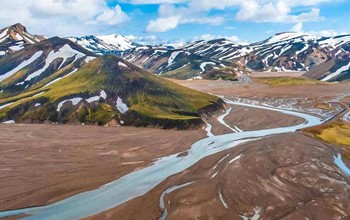
Landmannalaugar hiking tour from Reykjavik

Kerlingarfjöll Hiking Tour from Reykjavík
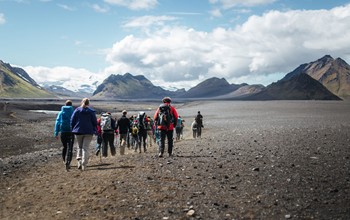
4-Day Laugavegur Trek Tour
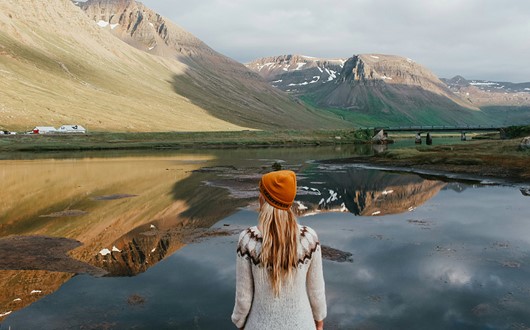
Iceland Ring Road Itinerary

The Best Geothermal Pools in Iceland

Glacier Activities Not To Miss This Winter

The 21 Best Hikes in the World
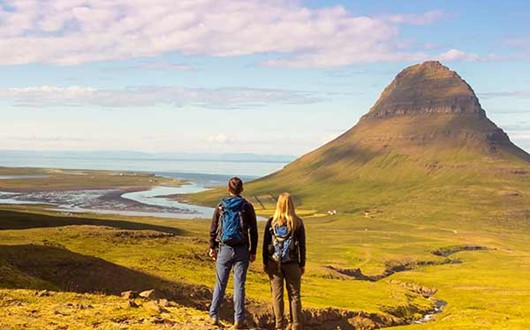
16 Popular Movies and TV Shows That Were Filmed in Iceland

Laugavegur Trail - 6 Days Hiking Tour in Iceland

The Ultimate List of the Best Hikes in Iceland
Day hikes and multi-day treks in iceland from hiking experts and mountain guides.
Imagine that you’re standing on a grand mountain in the middle of the Icelandic wilderness. Everywhere you look are colorful hills, snow-capped peaks, moss-covered slopes, jagged glaciers, majestic waterfalls, and rumbling volcanoes. And yo...
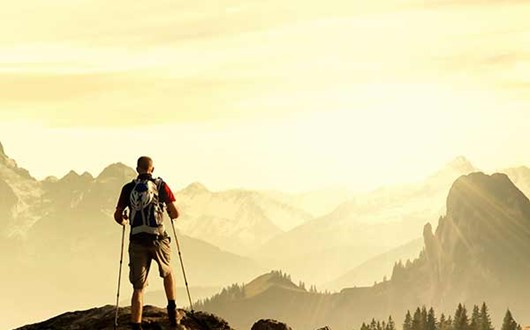
The 21 Best Day Hikes in the World
The most beautiful single-day hikes around the globe, hand picked by our hiking experts.
If you have a bucket list of hikes to complete, the best day hikes in the world should be on it. Venture out of your comfort zone by exploring the best Mother Earth has to offer. Some of these hikes are extremely challenging while some aren...
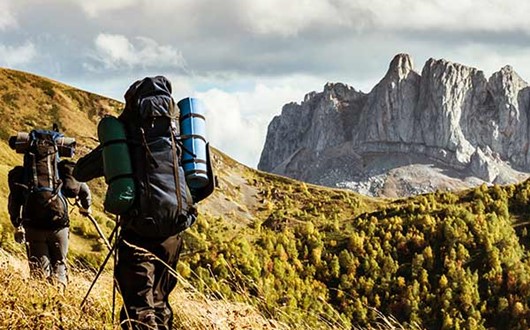
The best long-distance hikes in the world, hand picked by our hiking experts
What better way to explore the breathtaking nature of our planet than on a thrilling nature hike. From the volcanic passes of Iceland to the tropical rainforest of Peru, our expert guides have compiled a list of the 21 best treks in the wor...
Get exclusive deals and a taste of Iceland, Canada, Scandinavia & Baltic States straight to your inbox
Hiking vs trekking: what’s the difference and does it matter?
We explore the definitions and characteristics of hiking vs trekking so you know just what kind of adventure you’re going on, and how to plan for it

In the outdoor world, the terms hiking and trekking are often used interchangeably, but do they actually mean the same thing? After all, there are any number of synonyms for hiking, from hillwalking and rambling to strolling and sauntering, so is a trek just another word for walking in nature? We take a look at the definitions and characteristics of hiking vs trekking so you know just what kind of adventure you’re going on, and how to plan for it.
What is the difference between trekking and hiking?
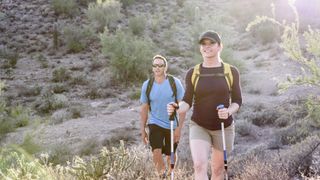
Hiking and trekking both describe walking in the outdoors, usually wearing hiking boots , so how different can they really be? The official definition of trekking is a long and arduous journey, especially one on foot. The word comes from a South African Dutch word “trakk” meaning “to pull or travel”. Meanwhile, hiking is defined as the activity of going for long walks, especially across country, and its origins are unknown.
So is the difference just semantics? In modern usage, at least, hiking and trekking do describe different activities, although the markers are all rather subjective. We took a closer look at the differences between hiking vs trekking and unearthed five key differences separating these two activities.
Hiking vs trekking: distance

If you look at the definitions of hiking and trekking, they are both unhelpfully described as “long”. Asking the question “how long is a hike?” is a bit like asking “how long is a piece of string?” After all, as you probably know, when you set off on a hike it will be as long as it takes you to complete it, really. But even though there isn’t a specified distance that makes a hike a hike and a trek a trek, there is some difference here, albeit subjective difference.
A hike is going to be the shorter of the two, and general agreement is that if you can do it in a day, it’s a hike. For some of us though, the most we can walk in a day is five miles and for others, it’s close to 30. And some mountains that involve a little over a mile of steep climbing definitely still feel very much like a hike. Complicating matters further, if you do a one-night backpacking trip with a day of walking on either side, it’s still considered a hike. In fact, you could do a two or three-night trip and it might still be a hike. The question gets even trickier to answer when you ask what denotes a thru-hike .
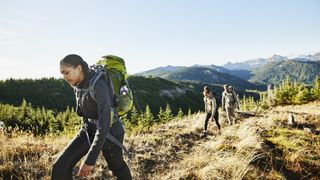
Trekking, on the other hand, always involves travelling long distances. A trek in the Himalayas might cover over 100 miles for example. The definition of a long distance will vary between a novice and an ultra-runner, but for the sake of drawing a line somewhere, let’s just say that once you start getting up above the 40-mile mark, you’re more likely on a trek than a hike.
Hiking vs trekking: duration

This one ties in with distance. Regardless of your pace, the further you go, the longer it will take you. Given what we said about the distance of hikes, a hike could presumably take you anywhere from an hour or two to several days. If we go by the very unofficial definition that a trek is 40 miles or more, well that could take the average hiker 4-5 days to complete, but again, someone else might be able to finish in two days. So again, there isn’t a strict definition here, but if it takes you more than a couple of days, it’s probably a trek.
Advnture Newsletter
All the latest inspiration, tips and guides to help you plan your next Advnture!
Hiking vs trekking: destination

Next up, we’ve got the question of destination. As you know, hiking doesn’t have to involve a specific destination. You might well go to a mountain top, a lake or a waterfall but none of these features defines a hike, they just make it more scenic. As long as it’s taking place outside in nature, it’s a hike.
So what about trekking? In modern usage, trekking does usually denote some type of special destination, whether that’s the two-week walk to Everest Base Camp or a 500 mile pilgrimage on El Camino de Santiago. There isn’t always a spiritual significance – treks can indeed be done purely for enjoyment – but there is usually a significance more than just popping up the hills out your back door.
That said, you could walk to the summit of the legendary Mount Shasta for spiritual reasons and call it a pilgrimage, but at 10 miles it wouldn’t count as a trek, so destination only counts so far as distance when it comes to delineating a hike from a trek.
Hiking vs trekking: terrain

Now we can all agree that hikes and treks occur in the outdoors and in natural, not urban, environments. So is there any difference between the types of terrain you cover in hiking vs trekking?
In modern usage, hiking typically takes place on trails and footpaths. Trekking can also take place on a designated trail – the 2,200 mile Appalachian Trail is a great example – but may involve terrain where there are no trails, through the jungles of northern Thailand or across the Sahara would be extreme examples.
Once again, this classification also depends on distance, since you might have a nearby mountain that you love to walk up that has no official trail, but if it’s just a few miles you wouldn’t call it a trek just due to the lack of footpath.
Hiking vs trekking: enjoyment
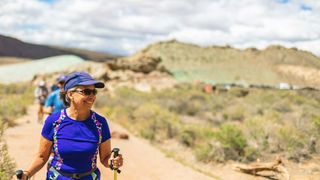
Now the enjoyment factor might be the most subjective category of all, but it’s one worth considering when it comes to hiking vs trekking. Though it might not be part of its official definition, hiking usually denotes a level of pleasure, versus doing something for material gain or to achieve a certain goal. If you recall though, trekking by definition is “arduous” meaning it will always be difficult and tiring. That’s not to say that you won’t enjoy elements of a trek, but at times it is likely to be harrowing.
Hikes can be arduous too of course, which you’ll know if you’ve tackled a Colorado 14er , but by definition they don’t have to be. You can stroll a gentle three-mile loop along a babbling brook in a meadow of wildflowers and it’s still a hike. If you’re trekking and not suffering a little, you’re either doing it wrong or you’ve achieved nirvana.
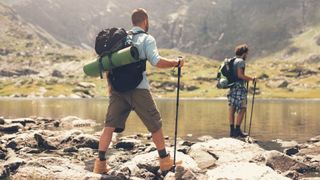
It seems like the biggest delineating factor between hiking and trekking comes down to the time it takes and distance covered, with some more nuanced possibilities coming into play like terrain, purpose and the enjoyment level, but why does all of this even matter?
Ultimately, the difference for you is knowing what kind of training, preparation and gear you’re likely to need. By now, you won’t be surprised to hear that there’s not a set gear list for a hike versus a trek, but for an easy day hike you might just need your best hiking shoes , a water bottle and a small daypack . For a longer hike, you’d want to start thinking about proper boots, a layering system and a tent . Basically, it depends on the distance you’re covering and the season and weather, but you can read more in our article on What to wear hiking . You might need to train for a longer hike, but for most, you can just do your training on the trail and turn around when you get tired.

For trekking, it’s a bit more clear that you will need to train in advance , plan your journey and, unless you’ve got Sherpas, carry everything you need from a camping stove to a good one-person tent in a large backpack . After all, it’s going to be arduous and you want the best gear possible to lighten your load.

Julia Clarke is a staff writer for Advnture.com and the author of the book Restorative Yoga for Beginners . She loves to explore mountains on foot, bike, skis and belay and then recover on the the yoga mat. Julia graduated with a degree in journalism in 2004 and spent eight years working as a radio presenter in Kansas City, Vermont, Boston and New York City before discovering the joys of the Rocky Mountains. She then detoured west to Colorado and enjoyed 11 years teaching yoga in Vail before returning to her hometown of Glasgow, Scotland in 2020 to focus on family and writing.
The best campfire songs for families and groups: sure-fire hits for the campfire
The trail I planned to hike is closed – can I use it anyway?
4 issues barefoot shoes can’t help you with (and the easy exercises that can)
Most Popular
- 2 4 issues barefoot shoes can’t help you with (and the easy exercises that can)
- 3 The trail I planned to hike is closed – can I use it anyway?
- 4 3 strength moves every trail and ultra runner should try
- 5 [READY TO CHECK] Revolution Race Nordwand Pro review: well-designed hiking pants at a reasonable price
- More from M-W
- To save this word, you'll need to log in. Log In
Definition of trek
(Entry 1 of 2)
intransitive verb
Definition of trek (Entry 2 of 2)
- peregrinate
- peregrination
Examples of trek in a Sentence
These examples are programmatically compiled from various online sources to illustrate current usage of the word 'trek.' Any opinions expressed in the examples do not represent those of Merriam-Webster or its editors. Send us feedback about these examples.
Word History
Afrikaans, from Dutch trecken to pull, haul, migrate; akin to Old High German trechan to pull
Afrikaans, from Dutch treck pull, haul, from trecken
1835, in the meaning defined at sense 2
1849, in the meaning defined at sense 2
Dictionary Entries Near trek
Treitz's muscle
Cite this Entry
“Trek.” Merriam-Webster.com Dictionary , Merriam-Webster, https://www.merriam-webster.com/dictionary/trek. Accessed 30 Apr. 2024.
Kids Definition
Kids definition of trek.
Kids Definition of trek (Entry 2 of 2)
from Afrikaans trek, "to travel by ox wagon," from Dutch trecken "to haul, pull"
More from Merriam-Webster on trek
Nglish: Translation of trek for Spanish Speakers
Britannica English: Translation of trek for Arabic Speakers
Subscribe to America's largest dictionary and get thousands more definitions and advanced search—ad free!

Can you solve 4 words at once?
Word of the day.
See Definitions and Examples »
Get Word of the Day daily email!
Popular in Grammar & Usage
More commonly misspelled words, commonly misspelled words, how to use em dashes (—), en dashes (–) , and hyphens (-), absent letters that are heard anyway, how to use accents and diacritical marks, popular in wordplay, the words of the week - apr. 26, 9 superb owl words, 'gaslighting,' 'woke,' 'democracy,' and other top lookups, 10 words for lesser-known games and sports, your favorite band is in the dictionary, games & quizzes.


10 things I wish I knew before hiking the Annapurna Circuit
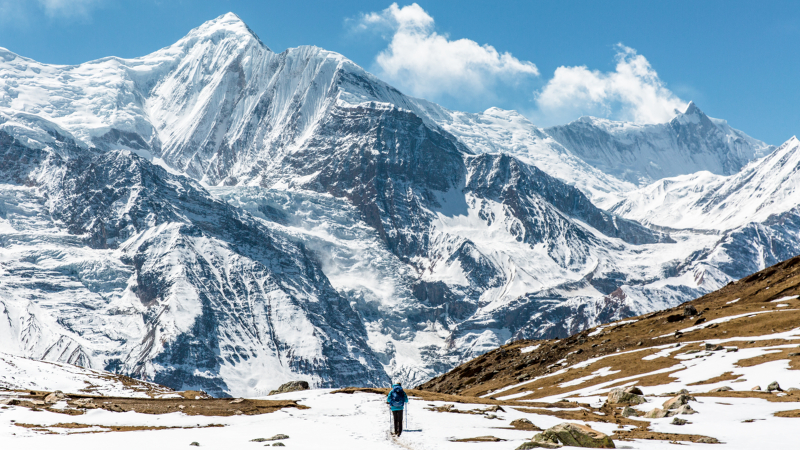
It’s one of the world’s classic long-distance hiking trails, and still one of Nepal’s most popular treks.
The Annapurna Circuit , a 12 to 21-day route that begins in the lush green villages of the Himalayan foothills. Taking trekkers over the 5,416m Thorong La Pass and down to the Tibetan-influenced temples and communities of the Mustang Valley.
If you want to experience a little bit of everything Nepal has to offer, this is perhaps the best trek to set off on, but it’s certainly no easy feat. The circuit is very tough at times, and the high altitude and unpredictable weather of the Annapurna mountain range can make crossing the Thorong La Pass a dangerous task – particularly if you’re not prepared.
Thankfully, I’ve got your back! So, here are ten things you should really know in order to complete the amazing Annapurna Circuit safely and with a smile on your face.
Check out Intrepid's Annapurna treks
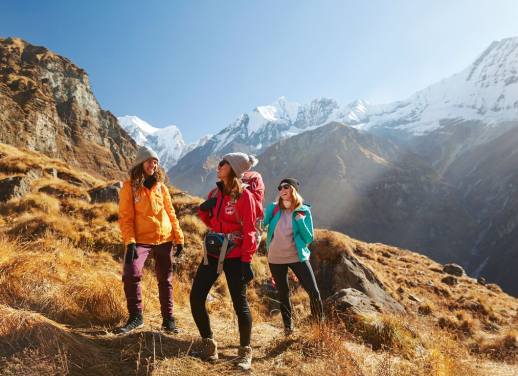
1. Plan the time of year right
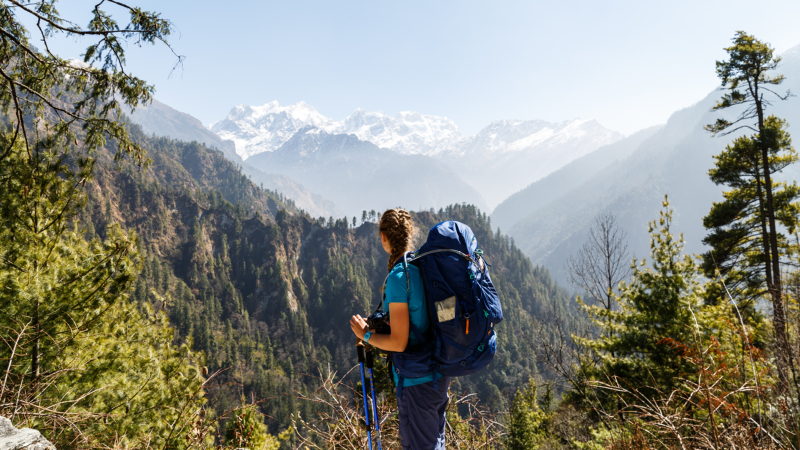
Photo captured by Annapurna Mellor
Like with many of the treks in Nepal, there are certain times of year when the weather conditions are ideal. For the Annapurna Circuit, October and November or April and May are widely considered to be the best times for trekking. The weather during these two seasons is generally clear and dry, and so it’s not too cold when heading into high altitudes. These two seasons are also the busiest times to be on the trail, with many other trekkers from across the world heading into the Himalayas.
You can also trek at other times of the year, but you will need to be a little more prepared for adverse weather conditions. The winter season, December to March, can also have clear skies and spectacular views. But it can be incredibly cold at higher altitudes, with thick snow on the ground that can often cause the Thorong La Pass to close at short notice. If you decide to trek during the winter season, make sure you have extra layers, a thick sleeping bag suited to temperatures of at least -20°C and crampons, which can be bought in Kathmandu and Pokhara.
GO NOW: EXPERIENCE THE BEAUTY OF THE ANNAPURNA CIRCUIT ON THIS 16-DAY ADVENTURE
2. Bring only what you need, leave the rest behind
When trekking on the Annapurna Circuit with Intrepid, Nepalese porters will carry 10kg of your gear. Anything extra will need to be carried on your own back, so packing as lightly as possible is essential. There are some things you need, such as a good quality sleeping bag, warm jackets, medicines, thermal layers and a head torch. But leave your jeans, laptop and makeup back in Kathmandu. You really don’t need them on the trail, and your back will thank you for it!
SUBSCRIBE TO OUR NEWSLETTER FOR THE LATEST TREKKING NEWS, OFFERS AND COMPETITIONS
3. The altitude should not be underestimated
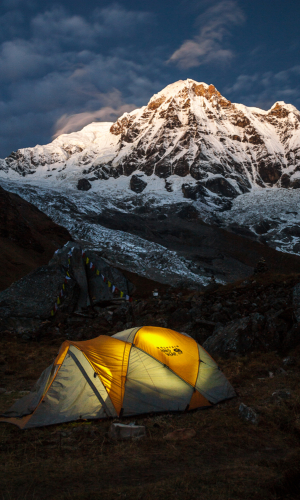
Altitude sickness can happen anytime above 2,500m. It doesn’t matter how fit you are, it can affect anyone and does so randomly. You can stay prepared by taking Diamox, an altitude medication, but aside from that just take it slow, drink lots of water and listen to your body. Before you set off on the trail, read up on the symptoms of altitude sickness so you’re aware of them if you start to feel the effects. Your guides will also be very knowledgeable about altitude and can be an essential source of help if you aren’t feeling well. The Annapurna Circuit reaches over 5,000m, that’s seriously high, and almost everyone will experience some mild symptoms like headaches or difficulty sleeping.
RELATED: ANNAPURNA OR EVEREST? YOUR DEFINITIVE TREKKING GUIDE
4. Be prepared for all weathers, whatever the time of year
While certain times of the year have much more suitable trekking weather (see point one), it is vital to be prepared for all possible conditions, no matter when you decide to go. High in the Himalayas, the weather is unpredictable, and snow, rain or storms can happen at any time. Climate change also means that weather patterns have become even more erratic over the last few years. Even if you’re trekking in October, be prepared for snow or storms on the trail. Pack enough warm clothing, make sure your boots are waterproof and don’t forget your sun cream or a sunhat.
GO NOW: DISCOVER THE HIGHLIGHTS OF THE ANNAPURNA CIRCUIT ON THIS 16-DAY ESCAPE
5. Eat well and look after your body
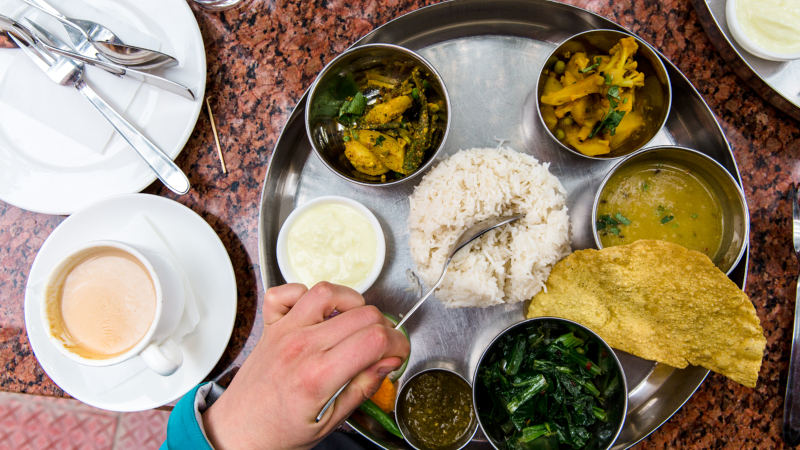
One of the best things about the Annapurna Circuit is the food and hospitality you will receive in the teahouses. Each evening, after a long day of trekking, you will be delighted to sit down in front of a roaring fire and tuck into a plate of dal bhat (a traditional Nepali meal of rice, lentils, vegetable curry and pickle). The food is delicious and very filling, and your body will be grateful for it the next day when you feel revived and ready to head out on the trail again. Other common offerings in guesthouses include garlic soup, a local remedy for altitude sickness and much better than it sounds. As well as, fried potatoes, spaghetti with local vegetables and of course apple pie – which is the Annapurna Circuit’s desert of choice due to the apple orchards growing in many of the villages along the trail. For snacking, I recommend stocking up in Kathmandu, as the cost of items like chocolate bars can get very high on the circuit.
RELATED: 8 NEPALI DISHES YOU HAVE TO TRY
6. It’s good to have a way to purify water
Plastic is a big problem on trekking routes across Nepal, as most of these small villages have no waste disposal system. This is leaving mountainsides cluttered with discarded plastic bottles, which is really not how we want to be treating these areas of striking natural beauty! You can’t drink the tap water in Nepal, and you really do need to be drinking a lot on the trail as you are walking long distances at high altitudes.
I recommend getting a steel reusable water bottle in Kathmandu. Along the trail, there are many villages with purified drinking water stations. Here you can refill your bottle and it actually works out much cheaper than buying bottled water. You can also use water purification tablets or buy a steripen. During the evenings, we would often order pots of hot water or tea and drink that, you can also fill up your bottle with any remaining in the pot and it’ll still be good to drink the next day.
TAKE ME THERE: EXPLORE OUR FULL RANGE OF ANNAPURNA CIRCUIT BREAKS
7. Learn some cultural respect
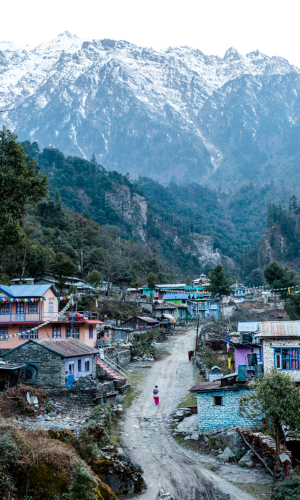
For many people, trekking in Nepal is about mountain views and hiking. But this is also a cultural trail, and it’s important to respect the people that call these villages their home. I recommend learning a little more about the cultures you are passing through. Speak to the families running the teahouses and go visit local gompas or temples. Opening your eyes to the cultures, religions and heritage of the trail will make it a much more enjoyable and meaningful experience, and it also means a lot to the local people when trekkers take an interest in their lives.
RELATED: MY INCREDIBLE MEETING WITH A HERMIT ON A NEPAL MOUNTAIN TREK
8. Don’t run out of cash
Once you leave Besisahar, there are no cash machines on the Annapurna Trail until you reach Jomsom after the Thorong La Pass. So, you need to be prepared and carry all the money you will need for the journey. While food and drinks in the teahouses can be cheap in the lowlands, they increase significantly as you increase in altitude and the road disappears. In Kathmandu, dal bhat is likely to cost you around 200 rupees, but this can grow to around 800 when you get above 3,500m. Western food such as burgers, pasta and burritos (yes, all food you can get on the trail), also tends to be very expensive as you get higher. I would recommend taking at least $20 per day for the trek, and if you’re a big eater or want to drink alcohol, $30-$40 per day is better.
GO NOW: TACKLE ANNAPURNA AND EVEREST ON THIS 31-DAY EPIC
9. Prepare yourself for the Thorong La Pass
Crossing the Thorong La Pass was probably the hardest day of my life! Waking up before sunrise and heading over narrow ridges in thick snow. Then climbing continuously for hours before finally reaching the prayer flags on the pass, breathless and completely relieved. Ok, maybe I’m not selling it so well. But it is essential to be prepared for this day, which will really push even the fittest hiker to the limits.
As long as you’re prepared, wearing enough warm clothes and have acclimatised enough to ensure your body comfortably makes the journey, then reaching the Thorong La Pass is going to be one of the most joyous moments of your trekking trip! Plus, once you’ve reached the top, you get to descend 1,600m to Muktinath, where the air is thick in oxygen and there are even hot showers to look forward to.
GO NOW: LIMITED ON TIME? OUR 5-DAY WALKING TOUR THROUGH THE ANNAPURNA RANGE
10. Be positive, take it slow and enjoy the journey!
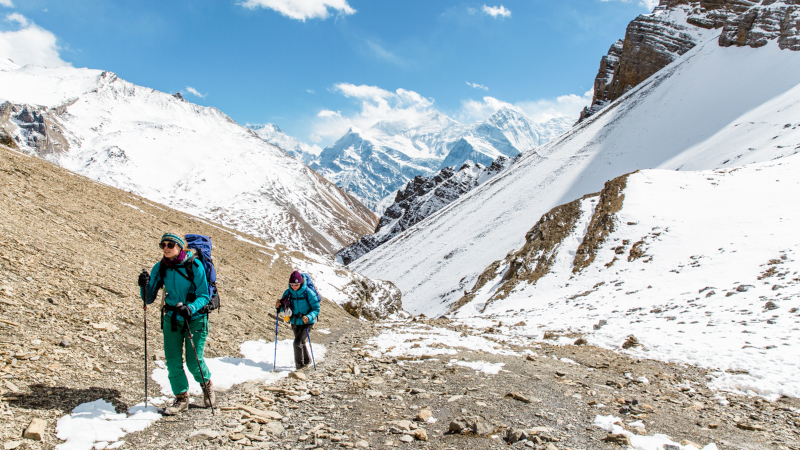
Travelling is meant to push you and challenge you in so many ways and trekking the Annapurna Circuit in Nepal will certainly do just that. While this is a difficult trek at times, it is also an incredibly enjoyable journey and one that can be completed by people of all ages and all fitness levels. The most important thing throughout the trek is to stay positive. Even when your body aches and you’re craving a hot shower, positivity will drive you on and it won’t be long before a breath-taking Himalayan panorama makes you remember why you’re here pushing yourself to the limit. It’s these incredible views, the wonderful hospitality of the local people and the company of your trekking buddies, which really make this a journey you will remember for the rest of your life!
RELATED: WHY CHALLENGING YOURSELF IS SUCH AN IMPORTANT PART OF TRAVELLING
Think you’re ready to take on the Annapurna Circuit? Take a look at our selection of trekking tours that’ll take you there . Already tackled it and looking for a new challenge? Check out our range of walking and trekking holidays from around the world.
Annapurna Mellor
Annapurna Mellor is a photographer, writer and storyteller. Her travels have taken her across Asia, Northern Africa, along the Trans-Siberian Railway and around Europe - always taking the road less travelled and always aiming to go a little deeper into the heart of local culture and people. Her photography work has been featured in National Geographic Traveller Magazine, Lonely Planet Guide Books and in campaigns for many travel brands around the world. Although she is usually dreaming about adventures afar, she is based, most of the time, in Manchester, England.
You might also like
The 7 best places to go on a..., 5 reasons to visit sri lanka in the..., why 2024 is the best year to see..., yellowstone vs yosemite: which national park to visit, 6 unique experiences you can have in el..., from delhi to udaipur, here are the five..., cinque terre vs amalfi coast: which destination to..., love at first bite: 10 famous sandwiches from..., galapagos or madagascar which unique destination should be..., central vs south america: how to plan your..., 4 reasons you should take a road trip....
Trek Travel vs Back-Roads Touring
Tour companies compared.

Trek Travel
4.8 Excellent

Back-Roads Touring
Sign in to see which companies give additional savings to Travelstride Members (it’s free)
Reviews & Ratings

4.8 Excellent 50 reviews

4.8 Excellent 25 reviews
Recent Reviews

No regard for safety
Trek Travel has just removed mask requirement for their trips. Number of COVID cases are steadily increasing in the past weeks. This is irresponsible and dangerous a...

SLO Traveler
Very Disappointed
I would steer clear of Backroads until Covid is over. We were on the Costa Rica tour when a fellow traveler tested positive. The guides refused to require that all...
Operator Overview
Travelers age
global Company
Trip prices
$4,299 - $5,499
Service level
Tour languages
$2,999 - $4,329

- Group Tours
- Private Guided Trips

- Custom Itineraries
- North America
- South America
- Australia & Pacific

Similar Companies
About Trek Travel
You’ll know our difference the minute you say our name.
About Back-Roads Touring
At Back-Roads Touring, we’ve spent over 25 years crafting small group holidays that delve a little bit deeper. Our dedicated mini-coaches enable us to travel the back roads, avoiding motorways and taking you to the heart of all our European destinations.
The Trek Central app Everything in the palm of your hand
- GOOGLE PLAY
- Read the FAQ
Connect to your e-bike like never before with the Trek Central app. Itching to customize your motor? Trek Central hands you the keys with features that allow you to tune your motor settings with the swipe of a finger. Want more accurate range estimation? Plug in your personal details and Trek Central will do the math for you. And when you’ve dialed everything just to your liking, Trek Central is there to give you routes, track your rides, and more.
Ready to ride
Get all the details you need from an easy-to-use dashboard, check your connection, get tire pressure recommendations, and more.
Tuned to you
Fine tune your motor on the fly and make sure your bike is dialed in for how and where you’re riding. *Tuning options vary by model
Plan your ride
Map out the perfect ride with easy-to-use maps. Trek Central will also show you how far you can make it with your current assist mode and battery level.
See your stats
Keep track of the hours you spend in the saddle, the distance you ride, battery usage, and calories burned.
Make history
Scroll through a complete history of your rides and work toward new goals with ride history that automatically logs every ride when your bike is paired with Trek Central.
Plays well with others
Pair your Trek Central app with Strava and Komoot to seamlessly communicate ride details and automatically log your rides across different apps.
- Dowload on the App Store
- Get it on Google Play
The Trek Central App makes it easy to use your phone as your bike computer – just mount it to your bars, plan your route, and get rolling.
- SHOP PHONE MOUNTS
Trek models
Fuel EXe offers just the right amount of quiet assist when you want it and disappears under you when you don't.
- See all models
Domane+ SLR
Domane+ SLR is our lightest and quietest e-road bike ever with our highest-level 800 Series OCLV Carbon.
Our highest-value e-road bike, Domane+ AL boasts a light and strong 100 Series Alpha Aluminum frame.
FX+ is an intuitive, fully equipped electric assist bike designed for exploring more of your city on our lightest city e-bike ever.
Dual Sport+
Dual Sport+ is an adventure-loving electric bike for wherever you roam. This hybrid e-bike delivers a versatile, stable, comfort-first experience on both road and trail.
Verve+ 1 Lowstep LT
This lightweight electric city bike is built with comfort touchpoints to help you feel better on every ride.
Electra models
Super fun. Super versatile. This throttle e-bike will carry you, a friend, and your stuff — and help you find some good trouble along the way.
Easy to use and fun to ride, Electra Townie Go! models have surprising power that will make you want to go forever.
A modern-day classic with the power of an e-bike, Loft Go! is perfect for navigating daily commutes and weekend adventures around your urban jungle.
Cruiser Go!
Pair the simplicity of a single-speed cruiser with the power of an e-bike, and you've got an Electra that's guaranteed to bring fun around every corner.
Jump to navigation
Department of Student Life
- UVM Program Board (UPB)
- SpringFest 2024
- Week of Welcome (WOW)
- Social Justice Grounding Retreat
- Service Opportunities
- Voter Education
- Club Sports
- Fraternity & Sorority Life
- Leadership Experience in Adventure Programming (LEAP)
- Program Overview
- Registering for TREK
- Program Costs
- Frequent Questions
- Preparing for TREK
- Student Leadership
- Student Government
- UVM BORED Event Calendar
- Marketing Opportunities
- Apply for a Grant
- Organizational Misconduct
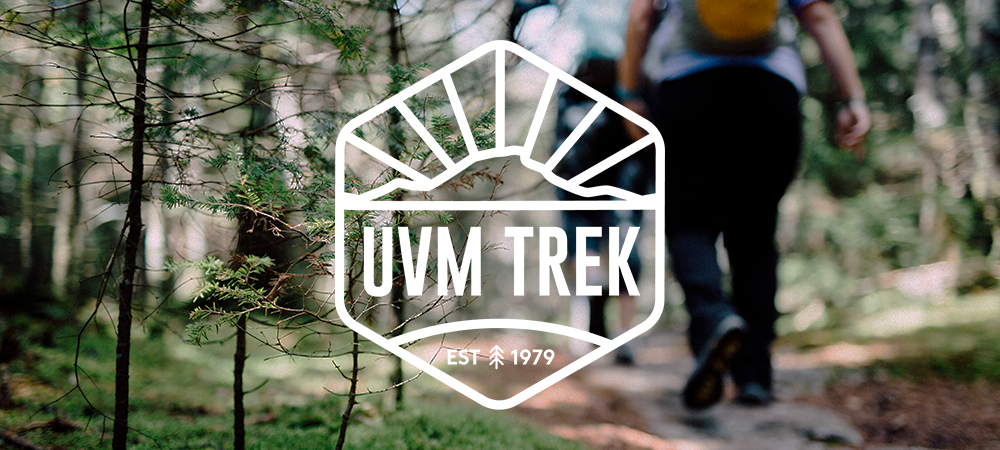
WHAT IS TREK?
What could be better than kicking off your college experience with a week of fun, adventure, and bunch of brand-new friends?
For over 40 years, UVM TREK has provided incoming students with extraordinary adventure-sport, backcountry, and service experiences, all as an opportunity to connect with their new UVM community just before the start of their fall semester.
THE TREK 2024 LOTTERY IS NOW OPEN!
LEARN MORE AND SIGN UP HERE!
TREK 2024 WILL BE FROM AUGUST 16 - 21.
BEYOND TREK
Join the TREK team! - Come work for us! Find out what it takes to be become a TREK Leader, or work behind the scenes to make the magic happen.
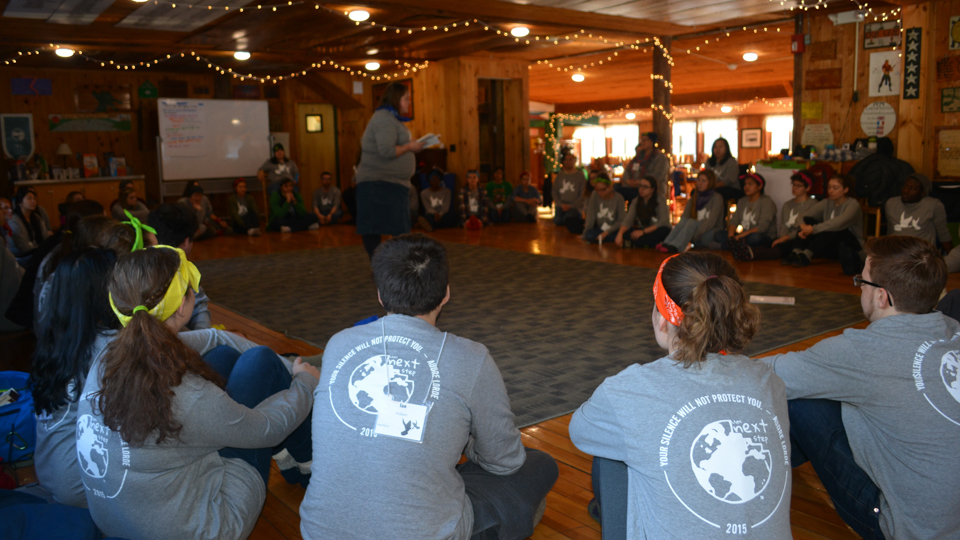
Civic Engagement at UVM - Get involved with service opportunites all year long with the help of our Civic Engagement program!
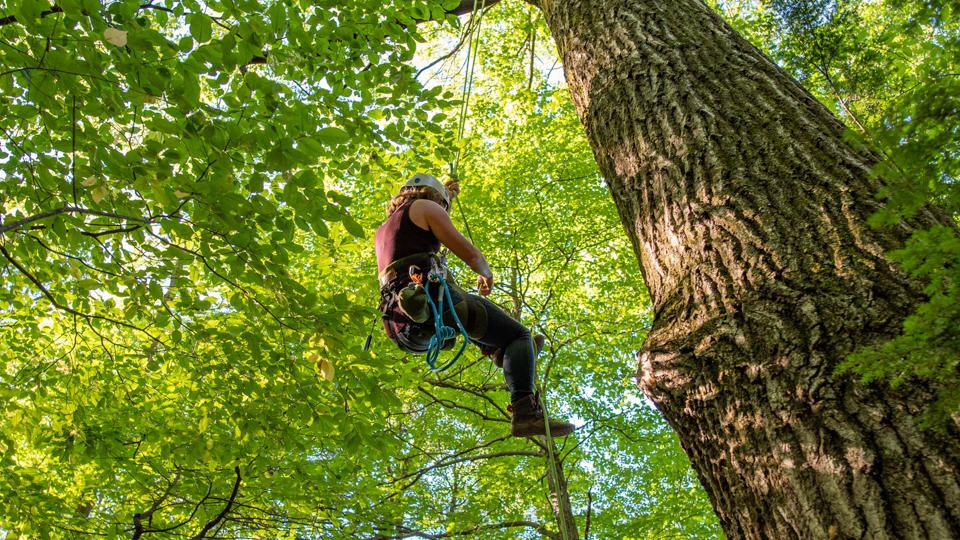
Outdoor Programs at UVM - Explore the great outdoors and all that Vermont has to offer with our Outdoor Programs team !
What Is TREK?
Sponsored by the Department of Student Life’s Outdoor Programs and Civic Engagement teams, TREK offers new UVM students experiential learning opportunities that promote self-discovery and connection to future classmates, just before the start of the academic year. TREK offers service, backcountry and adventure-based sport trips, as well as affinity space trips.
Explore TREK Trips →
Accessibility to Adventure
At its core, TREK's goal is to connect incoming first-year students with each other and upperclass students through a shared love of service and the outdoors. We know that historically these types of programs have been designed for temporarily able-bodied people and athletic body types. We intentionally design a variety of trip types and difficulties so that the TREK program can be accessible to the widest range of body size, previous experience, physical ability and required accommodations. Within each trip description we are explicit about the physical challenges present on each trip to help you understand if you’ll want to ask for an accommodation.
Students with any type of disability are encouraged to apply and participate in all TREK programs. We will provide reasonable and appropriate accommodations, in consultation with the UVM Student Accessibility Services .
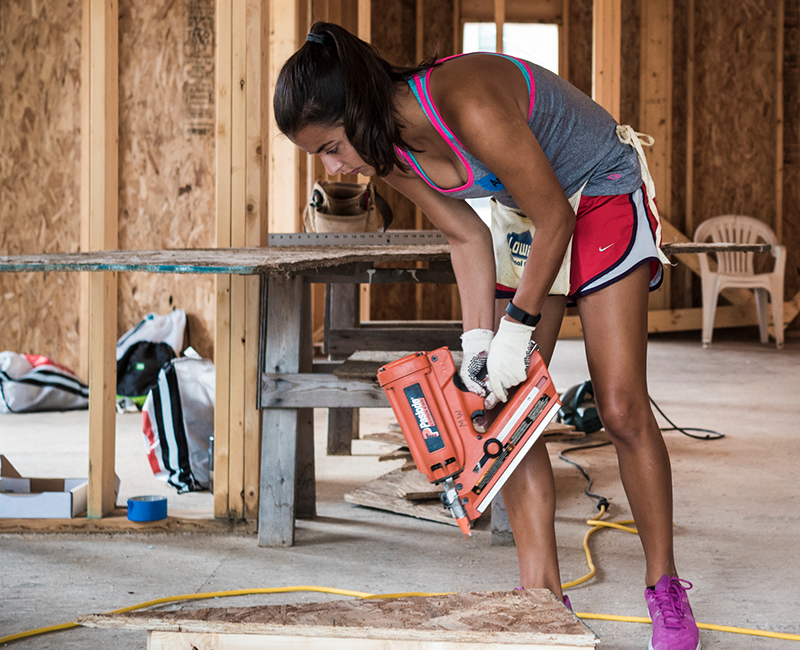
For Incoming Registered TREK Participants: Our Teams Live event from July has been recorded and made available for your convenience. To learn more about packing and preparing for your upcoming trip, check out this video and our Preparing for TREK page!
Preparing for TREK →
For General Questions About the TREK Program: Our Teams Live event from this April has been recorded and made available for your convenience. To learn more about the variety of trip opportunities we offer and how our new lottery and registration systems work, check out this video and our FAQ page!
Frequently Asked Questions →
Space on TREK trips is limited. Save the date for when our lottery form goes live and learn more about what you'll need to sign up.
Learn about Registering →
Pick a trip
TREK offers a variety of Affinity, Adventure-Sport Basecamp, Backcountry, and Service trips to choose from.
Find a Trip →
The cost of attending TREK depends on which trip you choose. Find out how to pay for TREK and/or apply for financial support.
Review Costs →
From lottery logistics to TREK trip specifics, we're sure you've got lots of questions. Hopefully we've got some answers.
Read our TREK FAQs →

How Star Trek: First Contact Found A Replacement For Glenn Corbett's Zefram Cochrane
In Jonathan Frakes' 1996 film "Star Trek: First Contact," the U.S.S. Enterprise travels back in time to the year 2063, the year humanity first invented faster-than-light travel and, almost immediately thereafter, made first contact with an alien species. By "Star Trek" lore, the maiden voyage of the Phoenix, the very first warp-capable ship, caught the attention of a passing Vulcan vessel, causing them to change course, land on Earth, and shake hands with humans. It was the franchise's "Welcome to the neighborhood" moment. It also started a massive utopian rebuilding of Earth, as it had just survived several devastating wars. By "Star Trek" creator Gene Roddenberry's estimation, Earth had to almost destroy itself to have a "moment of clarity." After that, the technological, post-war, post-scarcity, post-capitalist utopia could begin.
The inventor of warp drive was Zefram Cochrane, who fashioned his ship out of a disused bomb casing. In "First Contact," Cochrane was portrayed by James Cromwell as an irascible drunk who only aims to invent warp engines as a way of making money and retiring to a remote island filled with naked women. He's a humorous figure who, after talking to the Enterprise crew from the future, appreciates the magnitude of his discovery.
"First Contact" was not the first time Cochrane appeared on "Star Trek." In the original series episode "Metamorphosis" (November 10, 1967), the character was unexpectedly discovered on a distant planet, somehow alive a century after he would have died of old age. It seems he was granted eternal life by an ineffable energy being. In "Metamorphosis," Cochrane was played by Glenn Corbett.
According to a 2021 article by The Hollywood Reporter , the makers of "First Contact" needed someone very unlike the matinee-idol-handsome Corbett, as this Cochrane was going to be unrefined and unenlightened. Cromwell was their man.
Read more: What Went Wrong With Star Trek: Nemesis, According To Jonathan Frakes
Post-Babe Territory
Initially, the casting directors floated some of their dream actors for Cochrane, including Tom Hanks. Hanks had just won Oscars for "Philadelphia" and "Forrest Gump," so he would have been an expensive name to land for a "Star Trek" movie, but producer Ron D. Moore liked the dream. Sadly, he admitted:
"It never got that far. [...] At that point in the process, there are lots of names on a wishlist for many, many reasons. I'm sure his name was floated in some capacity, but it was never really on the table."
Hanks would likely have played the part well, but Cromwell made it his own. And while Hanks may have been too "big" at the time, the filmmakers ran into a similar production snag with Cromwell. According to a 1996 episode of "HBO First Look," Cromwell was the preferred actor from the start, as he had already appeared in a few episodes of "Star Trek: The Next Generation" (notably "The Hunted" and the two-part episode "Birthright"). When Cromwell suddenly netted an Oscar nomination for the 1995 film "Babe," producer Rick Berman became fearful that their now-even-more-famous actor would drop out. Berman explained:
"When we were creating the character, we always had Jamie in our head. And then 'Babe' came along and all of a sudden he was nominated for an Academy Award and we thought, 'Oh my God, we're not gonna get him! He's too big for us now.' But because we had worked with him on a number of occasions, we were delighted that he did in fact take the role."
Cromwell would return to play Cochrane in an episode of "Star Trek: Enterprise" and as a hologram in "Star Trek: Lower Decks." He was part of the family in perpetuity.
The Arc Of Cochran
According to the oral history book "The Fifty-Year Mission: The Next 25 Years: From The Next Generation to J. J. Abrams," edited by Mark A. Altman and Edward Gross, Cromwell was selected specifically because he didn't have the same matinee idol good looks as Glenn Corbett. Berman noted that "Star Trek: First Contact" took place in the past, long before Earth had built its utopia, and felt that Zefram Cochrane should be equally unformed. In his own words:
"We had to go back and find a Cochrane who wasn't much of an admirable character to begin with, and who had lost any of what he had when the Borg started blowing up his ship. We had to get him back on track a little bit and help lead him in the direction we knew that history had meant for him to go."
The plot of "First Contact" also involved a malevolent species of cyborgs called the Borg, who had traveled to 2063 to assimilate humans into their machine collective. When the Borg attacks the un-launched Phoenix, the Enterprise crewmembers from the future have to help Cochrane rebuild the vessel in time for it to launch, and to be seen by passing Vulcans, due in our solar system in only a few more days.
Needless to say, the Enterprise defeats the Borg, the Phoenix launches, and our utopian future is secured. "Star Trek: First Contact," despite skewing toward action shlock , is still often considered the best film to have been based on "Star Trek: The Next Generation."
Read the original article on SlashFilm
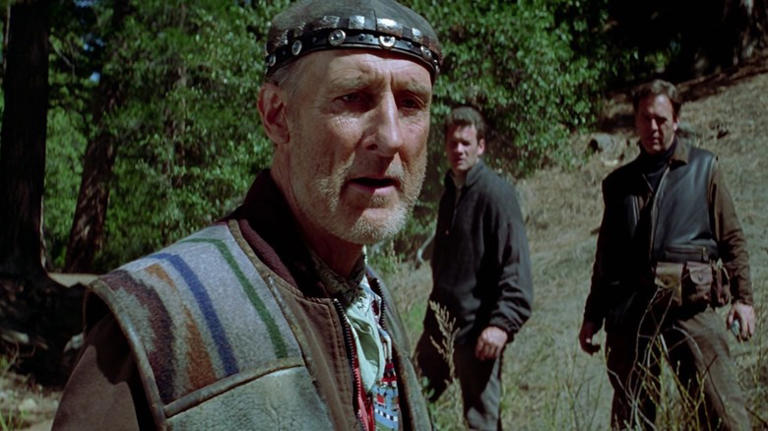
- Car Rentals
- Airport Transfers
- Attractions & Tours
- Bundle & Save
- Destinations
- Trip.com Rewards

Trek Echelon Saturday Road Ride | Slow Burn Coffee
The Trek Echelon Saturday Road Ride in Albuquerque is the perfect opportunity for cyclists to enhance their abilities, forge new connections, and enjoy an exhilarating ride. The event will commence at Slow Burn Coffee, located at 821 Mountain Road Northwest, Albuquerque, NM 87102, on May 4, 2024. Participants can expect a challenging 4-hour ride covering a distance of 70 to 100 miles. It is essential to maintain a speed of 20mph+ within the group and an average of 18-20mph throughout the journey. Riders must possess the skills to handle mechanical problems and ensure proper nutrition during the ride. While there may be periodic regrouping, this is not a ride where participants will be left behind. Wearing helmets is mandatory, and lights are recommended for enhanced safety. Don't miss this opportunity to be part of an exciting and rewarding cycling experience with Team Echelon/Trek. Admission is free, so mark your calendars and prepare for an unforgettable ride.
Provided by Bailei_ | Published Apr 30, 2024
Are you interested in Trek Echelon Saturday Road Ride?
More contents about mountain.
- Customer Support
- Service Guarantee
- More Service Info
- Website Feedback
- About Trip.com
- Terms & Conditions
- Privacy Statement
- About Trip.com Group
Other Services
- Investor Relations
- Affiliate Program
- List My Property
- Become a Supplier
Tailwind on every ride? – See e-bike trips
Book your fall training now – see Ride Camps
European Classic booking fast – see the trips
- Request a Catalog
- 866-464-8735
Select Date Range
Modal title, popular searches.
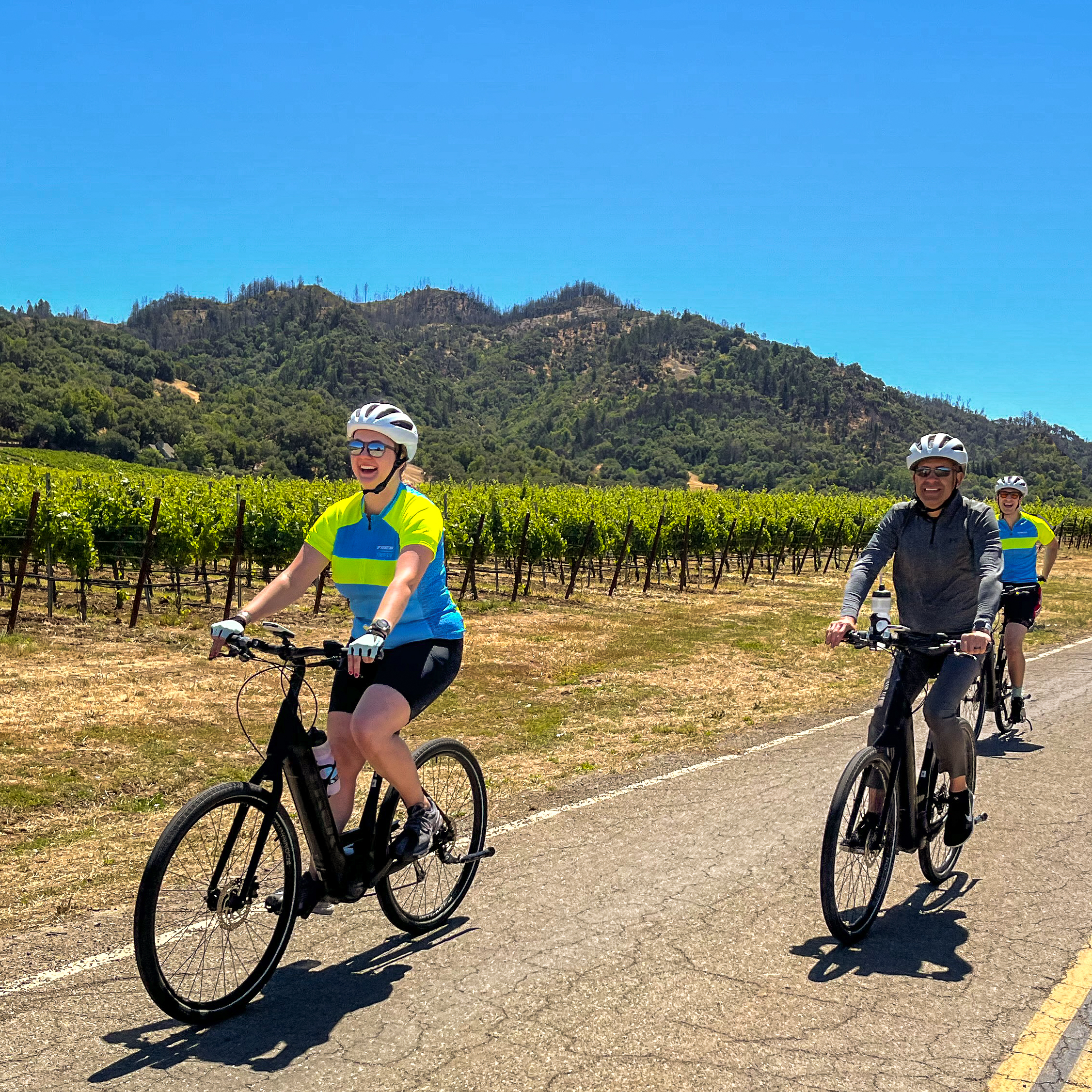
California Wine Country Bike Tour
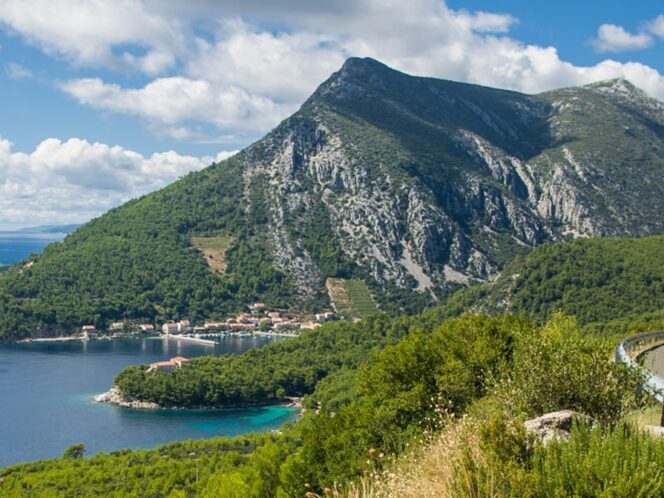
Croatia and The Dalmatian Coast Bike Tour

Amsterdam to Bruges Bike Tour

Tuscany Bike Tour
Guest Feature: Fabulous Flanders 2024
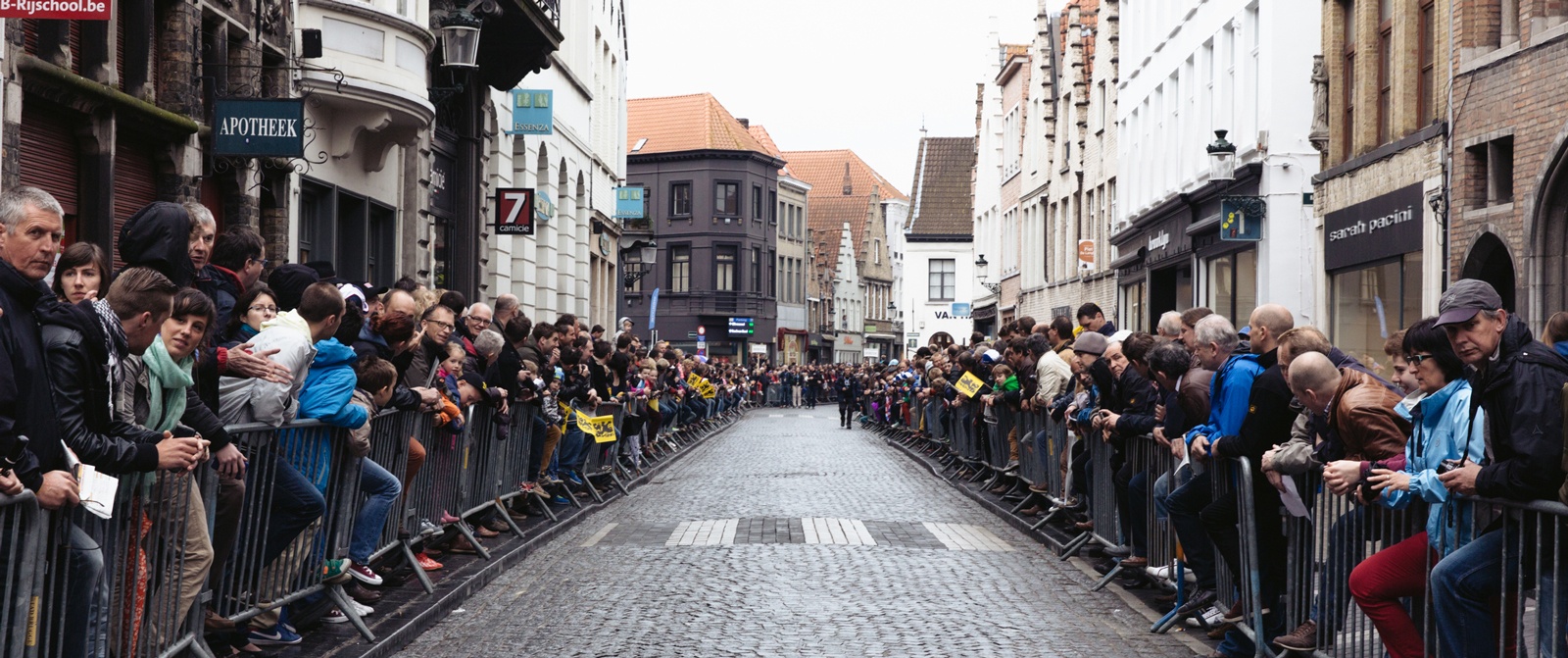
From conquering the cobbles of Flanders to experiencing the thrill of Paris-Roubaix from the best seats in the house, the 2024 Spring Classics was a journey like no other. Our guest, Patrick Gabrion, wrote about his experience on this year’s Spring Classics bike tour in his blog, Pedal2Page . See the featured posts below and stay tuned for more entries coming soon!

Part 1: Trek Travel & My New Friends
Right from the start, I realized my cycling trip was going to be special — not even close to anything I’d experienced in the past. The entire time we were based at Hotel Harmony in Ghent, one of Belgium’s oldest cities and the historic capital of Flanders. The location alone certainly set the tone.
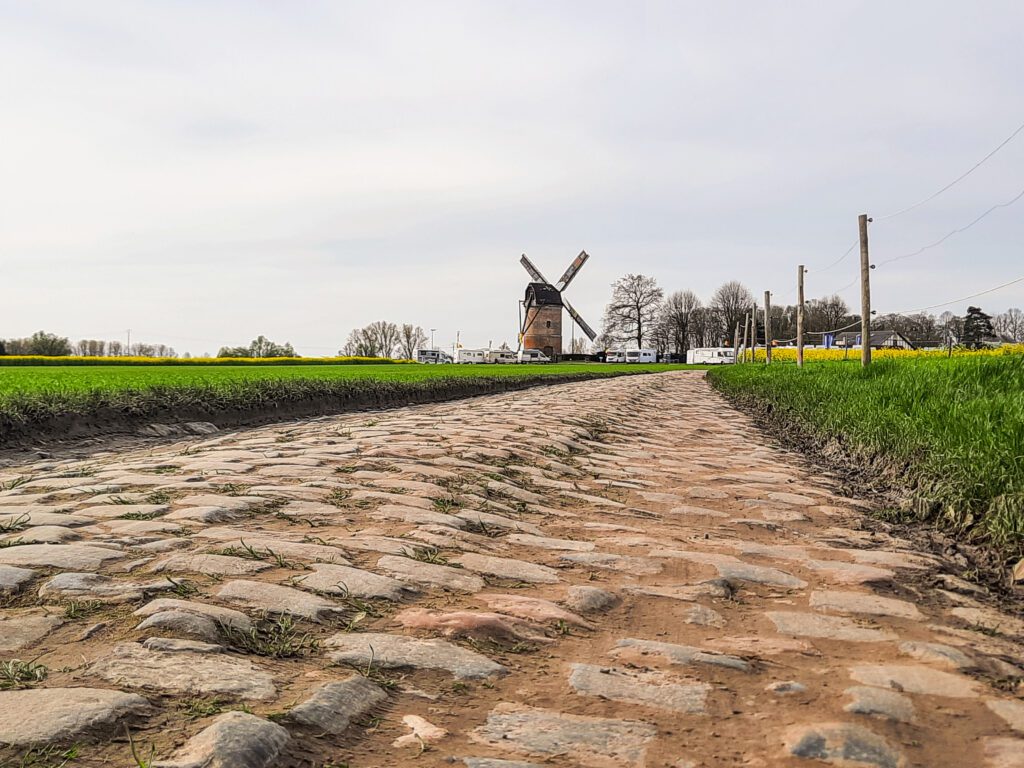
Part 2: Cobbles & Climbs
While intimidating in one sense, these bone-jarring stones were a major reason for deciding to embark on this Trek Travel cycling vacation. Like a moth to a flame, I just needed to experience them for myself — no matter the possible danger.

Part 3: Tour of Flanders
It’s one of the five Monuments, the most prestigious single-day races in men’s professional cycling. I’ve viewed it countless times on television, but now I was actually there in person for the first time.

If a date is marked as Private, it is reserved for a private group.
Looking to travel with a small group or looking for a custom date? Call our trip consultants at 866-464-8735
What is the Difference?
Ultimate luxury:.
Savor some of the most spectacular, 5-star properties in the world. Exuding luxury and elegance, these one-of-a-kind accommodations offer the chance to rejuvenate at award-winning spas, dine at Michelin-starred restaurants, and more.
Enjoy luxurious accommodations handpicked for a refined experience. From signature spa treatments to delicious local cuisine, you’ll be more than provided for; you’ll be pampered.
These handpicked hotels provide relaxation and fun in a casual and comfortable environment. Delicious cuisine and great service mix perfectly for a memorable stay.
On select cycling vacations, you’ll stay at a mix of hotel levels, from Explorer to Luxury to Ultimate Luxury. Rest assured, no matter which level of hotel you’re at, our trip designers carefully select every accommodation.
Activity Level
Road : 1-3 hours of riding. Up to 25 mi (40 km). Up to 1,000 ft (300 m).
Gravel: 1-3 hours of riding. Up to 20 mi (35 km). Up to 1,000 ft (300 m).
Hiking: 1-3 hours of hiking. Up to 5 mi (8 km). Up to 1,000 ft (300 m).
Road : 2-4 hours of riding. 20-35 mi (35-60 km). Up to 2,500 ft (750 m).
Gravel: 2-4 hours of riding. 15-30 mi (25-45 km). Up to 2,000 ft (300 m).
Hiking: 2-4 hours of hiking. 4-8 mi (6-12 km). Up to 1,500 ft (450 m).
Road : 3-5 hours of riding. 25-55 mi (40-85 km). Up to 4,500 ft (1,500 m).
Gravel: 3-5 hours of riding. 20-40 mi (35-60 km). Up to 3,000 ft (900 m).
Hiking: 3-5 hours of hiking. 6-10 mi (9-16 km). Up to 2,000 ft (600 m).
Road : 4+ hours of riding. 40-70 mi (60-110 km). Up to 8,000 ft (2,400 m).
Gravel: 4+ hours of riding. 30-50 mi (45-80 km). Up to 4,000 ft (1,200 m).
Hiking: 4+ hours of hiking. 7-15 mi (11-24 km). Up to 4,000 ft (1,200 m).
What are your trip styles?
Classic - reserve:.
Savor the finer things as you relax in luxurious 5-star accommodations and wine, dine, and ride in some of the most unforgettable destinations around the world.
Classic - Signature:
Explore beautiful destinations by bike, enjoy extra inclusions, savor delicious local cuisine, and enjoy the perfect mix of accommodations.
Classic - Discover:
Enjoy a casual cycling vacation with fantastic routes and comfortable accommodations.
Train like the pros in some of their favorite riding destinations.
See the pros in action at the biggest cycling events of the year.
Cross Country:
Tackle an epic adventure that takes you point-to-point across mountains, countryside, and more.
Self-Guided
Enjoy a bike tour on your schedule with just your chosen travel companions.
Single Occupancy
Sometimes it’s more convenient and comfortable to have your own room while on vacation. We understand and that’s why we offer a Single Occupancy option. The additional price guarantees a private room all to yourself
This website uses cookies to ensure you get the best experience on our website.

IMAGES
VIDEO
COMMENTS
New 2025 Trip Dates Step into adventure or ride into 2025 on a Hiking or Cycling Vacation of a Lifetime. View the Trips Featured 2025 Destinations Discover our featured destinations and find the perfect trip to satisfy your wanderlust. Trips for Every Traveler Whether you are looking for a leisurely vacation through the olive groves in Puglia, an unpaved adventure, or want to test your legs on ...
Hiking is a long, vigorous walk on footpaths or hiking trails that usually lasts for a couple of hours, one day, or perhaps overnight. Trekking is a long yet energetic hike that lasts multiple days and is mostly in the wild natural environment. In other words, you can do it off hiking trails.
10. Invest in a good pair of shoes. Photo by Kieran Wallace. Your feet are your most crucial body part on a trek, and it doesn't take much to keep them in toe-tappingly tip-top shape. First, invest in a pair of good-quality, water-resistant hiking boots; you want plenty of support and ventilation too. Then, wear them in.
1. Adventure: Many are drawn to trekking for the sheer thrill and excitement that it provides. The prospect of navigating rugged terrains, overcoming physical challenges, and immersing oneself in the wilderness is an adrenaline boost for adventure seekers. 2. Fitness: Trekking is a fantastic way to improve physical fitness.
8) Listen to your body but don't be afraid of it. As you train for your trek, pay attention to how your body responds. If you're feeling weak or lightheaded, slow down—you don't want to collapse during your trip. On days that you exercise, eat more carbohydrates and proteins than usual. The increased calorie intake will give you energy.
Chief Engineer, Enterprise, Columbia. Rank. Commander. Charles "Trip" Tucker III, portrayed by Connor Trinneer, is a fictional character in the television series Star Trek: Enterprise . Tucker was the chief engineer on the Enterprise and also briefly served in the same role aboard at the Enterprise's sister ship Columbia .
Depending on a trek, sometimes it is convenient to reach the nearest railway station or airport on Day 0. Plan your travel itinerary accordingly. Flexible flight tickets and reservations can be handy in dealing with such conditions. Visit a doctor and consider getting a travel cum medical insurance for the trip:
Trek journeys, on the other hand, are rarely associated with marked paths. Trekkers like to set their bar higher by exploring much less common nature sites and being off the beaten path. ... Imagine the amount you can burn after an overnight trip or week-long trek! - Both improve mental health: Multi-day or overnight walking is the greatest way ...
Best trek for: would-be mountaineers. Distance: 80 miles (130km) round trip Duration: 2 weeks Level: moderate. Climbing to 18,193 feet (5,545m) at its highest point, the 2-week trek to Everest Base Camp is Nepal's best-loved trek, with 8849m Sagarmatha (Mt Everest) rising ahead like a petrified giant. Tracing winding river valleys and the ...
Hell of a ride. - Trip Tucker, 2152 (" Dawn ") Commander Charles Tucker III, known affectionately as "Trip" Tucker, was a 22nd century Human male Starfleet officer. He served for ten years as the chief engineer and Second officer of Earth 's first warp 5 -capable starship, Enterprise NX-01, under the command of his best friend, Captain ...
THE DIFFERENCE BETWEEN HIKING AND TREKKING. Hiking involves a long energetic walk in a natural environment on hiking trails or footpaths for a day or overnight. Trekking involves a long vigorous hike in wild natural environment for multiple days. It can be done off hiking trails.
The official definition of trekking is a long and arduous journey, especially one on foot. The word comes from a South African Dutch word "trakk" meaning "to pull or travel". Meanwhile, hiking is defined as the activity of going for long walks, especially across country, and its origins are unknown.
trek: [noun] a trip or movement especially when involving difficulties or complex organization : an arduous journey.
It's one of the world's classic long-distance hiking trails, and still one of Nepal's most popular treks. The Annapurna Circuit, a 12 to 21-day route that begins in the lush green villages of the Himalayan foothills. Taking trekkers over the 5,416m Thorong La Pass and down to the Tibetan-influenced temples and communities of the Mustang ...
We're born from Trek bikes, and that means everything that makes Trek great is in our genes, too. Like the passion to be the best. To make adventure accessible. And to do things right, in the right way. We're a team of globetrotters, world-travelers and dreamers who know how to inspire the memories you'll have for the rest of your life.
Pair your Trek Central app with Strava and Komoot to seamlessly communicate ride details and automatically log your rides across different apps. Dowload on the App Store. Get it on Google Play. The Trek Central App makes it easy to use your phone as your bike computer - just mount it to your bars, plan your route, and get rolling.
Sponsored by the Department of Student Life's Outdoor Programs and Civic Engagement teams, TREK offers new UVM students experiential learning opportunities that promote self-discovery and connection to future classmates, just before the start of the academic year. TREK offers service, backcountry and adventure-based sport trips, as well as ...
By "Star Trek" lore, the maiden voyage of the Phoenix, the very first warp-capable ship, caught the attention of a passing Vulcan vessel, causing them to change course, land on Earth, and shake ...
Searching for information and tickets regarding Trek Echelon Saturday Road Ride | Slow Burn Coffee taking place in Mountain on May 4, 2024 (UTC-7)? Trip.com has you covered. Check the dates, itineraries, and other information about Trek Echelon Saturday Road Ride | Slow Burn Coffee now! Trip.com has also prepared more similar exciting activities and discounted flight and hotel packages.
28 likes, 0 comments - mytravel.diariess on April 26, 2024: "1. Paragliding in Solang, Manali 2. Take a bike trip in Leh-Ladakh 3. Kashmir Great Lakes Trek 4. Walk ...
Step into Adventure. Our Hiking and Walking Tours are packed with everything that makes us great—the best guides, luxury accommodations, expertly designed itineraries, unmatched flexibility, and support from the moment you book to well after you depart—all delivered with what truly sets us apart: our unparalleled hospitality. Join us on our ...
Part 1: Trek Travel & My New Friends. Right from the start, I realized my cycling trip was going to be special — not even close to anything I'd experienced in the past. The entire time we were based at Hotel Harmony in Ghent, one of Belgium's oldest cities and the historic capital of Flanders. The location alone certainly set the tone.